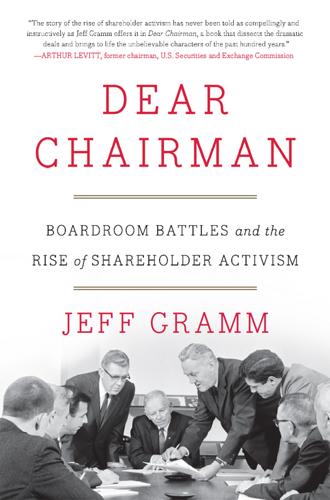
Dear Chairman: Boardroom Battles and the Rise of Shareholder Activism
by
Jeff Gramm
Published 23 Feb 2016
But while the Proxyteers struck fear into the hearts of CEOs with their ability to harness the discontent of public shareholders, the corporate raiders had something much more powerful at their disposal: ready cash. It came from Michael Milken and the vast market he created for new-issue junk bonds. Milken used his network of high-yield buyers to create a liquidity boom for young takeover artists. Financier Nelson Peltz got a $100 million “blind pool” in 1984. Fellow raider Ron Perelman got $750 million the following year. The next year, Sanford Sigoloff, the so-called Skillful Scalpel, got $1.2 billion.8 The blind pools were raised without specific acquisitions in mind—they merely served to build war chests for future raids. In her excellent book about the rise of Michael Milken and Drexel Burnham, The Predators’ Ball, Connie Bruck called Icahn’s battle with Phillips Petroleum “Drexel’s gala coming-out.”
…
Phillips was number sixteen on the Fortune 500, with almost $17 billion of total assets. Icahn’s stick just wasn’t big enough. To be a legitimate threat to buy the entire company, he needed much more money. He needed thirty-eight-year-old wunderkind Michael Milken. HIGH CONFIDENCE In less than a decade, Drexel Burnham transformed itself from a midtier investment bank with only a handful of clients to the envy of Wall Street. During that period, Michael Milken’s domination of the rapidly growing market for junk bonds drove a twenty-five-fold increase in the bank’s revenues.34 In 1985, the year Carl Icahn took on Phillips, Milken focused on a promising new niche in the market—hostile raids financed by junk bonds.
…
Previous merger booms ended because of higher lending standards, fewer good targets, sophisticated corporate defenses, regulatory pressure, and slowing economic growth. What was different in the ’80s—what ushered in the era of superstar corporate raiders and then made it disappear forever—were the rise and fall of Michael Milken, and the hard-knocks education of large institutional investors. CORNERS CUT Right before Judge Kimba Wood sentenced Michael Milken to ten years in prison, she spoke about the public’s intense interest in Milken’s fate. She’d received many letters demanding a harsh sentence because of the economic damage wrought by the abuses of the ’80s. It was late 1990 and the country was halfway through a recession, as well as a financial crisis that saw a third of all savings and loan associations fail.65 “These writers ask for a verdict on a decade of greed,” Judge Wood said.66 Even Wall Street’s finest were shocked when federal prosecutors revealed that Drexel Burnham paid Michael Milken $550 million in 1987.
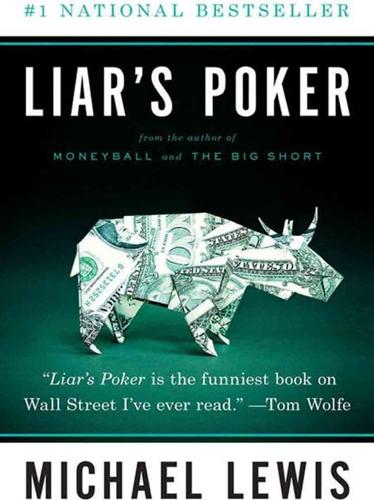
Liar's Poker
by
Michael Lewis
Published 1 Jan 1989
Reports of the magical sums of money to be made working for Michael Milken trickled back into Salomon and made us drool. One Salomon middle executive left to join Milken in Beverly Hills in 1986. In his third month on the new job he found an extra hundred thousand dollars in his weekly paycheck. He knew it wasn't bonus time. He assumed Drexel's accountants had made a mistake. He told Milken. "No," said Milken, "it is no mistake. We just want to let you know how happy we are with the job you are doing." Another former Salomonite told of his first bonus with Michael Milken. Milken handed him several million dollars more than he expected.
…
"Soon you'll be offering free lipstick samples with every purchase of bonds more than a million dollars, which means I will own a lot of lipstick," he said, then hung up. Why was a lipstick merchant coming after us? The most intriguing answer was that it wasn't his idea. Perelman's bid could easily be seen as a hate bomb lobbed at John Gutfreund by Drexel's junk bond king, and Perelman's true backer, Michael Milken. Milken often lobbed hate bombs at people who treated him badly. And Gutfreund had treated him badly. In early 1985 Milken had visited our offices for a breakfast meeting with Gutfreund. It started with Milken growing angry because Gutfreund refused to speak to him as an equal. It ended in a shouting match, with Milken being escorted from the building by a security guard.
…
One of my former fellow trainees who had gone to work for Milken told me that, of the eighty-five who staffed the Beverly Hills Office, "Twenty to thirty are worth ten million dollars or more, and five or six have made more than a hundred million." Whenever a newspaper printed an estimate of Milken's paycheck, apparently, the entire Beverly Hills office of Drexel had a chuckle at how low it was. My friend and others with him told me that Milken was worth more than a billion dollars. Still, you had to wonder what gave Michael Milken greater pleasure, making a billion dollars or watching Gutfreund squirm as one of his biggest clients, Ronald Perelman, stalked Salomon Brothers. "I know Michael, and I like Michael," says Lewie Ranieri, who had been fired by Gutfreund two months before (and now appeared like the Ghost of Christmas Past).
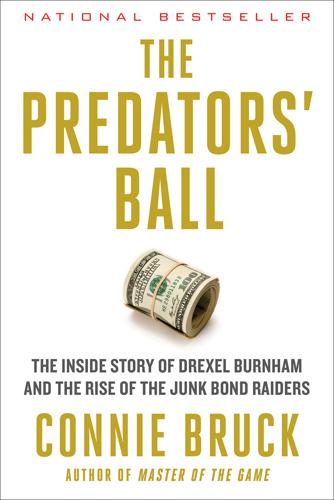
The Predators' Ball: The Inside Story of Drexel Burnham and the Rise of the JunkBond Raiders
by
Connie Bruck
Published 1 Jun 1989
Richard Sandler, who had been Lowell’s close friend when they were growing up and had attended UC Berkeley and UCLA Law School with him, also joined and functioned as Michael Milken’s personal attorney. Cambrent would be located at Drexel—adjacent to Milken’s trading floor, in fact. But it would have no relationship to Drexel. And its very existence would underline the utter separatism of the Milken operation. Lowell Milken was the technician with the green eyeshade, the administrator of the empire. But he would also be his brother’s closest adviser and probably his sole confidant. His office was shouting distance from Michael Milken’s desk in the center of the trading floor. Friends of both say that Michael trusted his brother to do the equity analysis that he did not have time to do himself.
…
Feelgood 3: Transformation 4: Merge with Mike 5: The Cloister at Wilshire and Rodeo 6: The Air Fund PART TWO: Pawns Capture Kings 7: Triangle–National Can: Kingmaker 8: Icahn-TWA: From Greenmailer to Manager-Owner 9: Pantry Pride–Revlon: The Crucial Campaign PART THREE: The Zenith—and the Fall 10: “Drexel is like a god . . .” 11: Proven Prophet—So Far 12: Milken’s Money Machine 13: The Enforcer 14: Sovereign Privileges 15: Boesky Day 16: The Center Cannot Hold 17: The Humbling Acknowledgments Index FOR ARI SCHLOSSBERG Prologue: The Ball IN THE third week of March 1985, the faithful, fifteen hundred strong, came to Beverly Hills to pay homage to Michael Milken, the legendary junk-bond guru of Drexel Burnham Lambert whom many of his followers called simply “the King.” For the next four days, they would savor the world he had created for them. By five-thirty each morning, an armada of about one hundred limousines glided into position around Beverly Hills.
…
The only way for them to borrow money was in short-term loans from banks or in private placements with insurance companies, which carried covenants so restrictive that they made the money almost not worth having. Then, one day, Drexel’s investment bankers had come knocking at the door. Drexel would underwrite their bonds, low-rated though they were, for the public marketplace. Michael Milken, a most extraordinary junk-bond trader, could raise $50 million, $100 million or more—the kind of long-term, relatively covenant-free capital that was available to these companies nowhere else. All they had to do was pay the price: a high yield to the investors, and an enormous fee to Drexel.
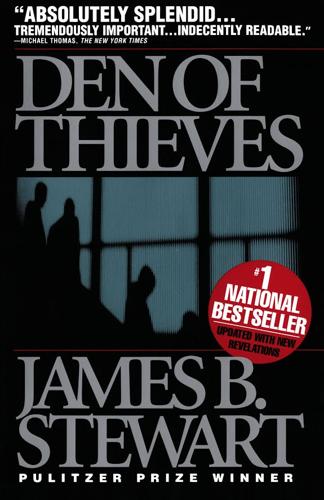
Den of Thieves
by
James B. Stewart
Published 14 Oct 1991
Tomilson Hill III, co-head of M&A Steve Waters, co-head of M&A Peter Solomon, investment banker At Bank Leu, Nassau, the Bahamas Bernhard Meier, banker Bruno Pletscher, banker Cast of Characters U At Merrill Lynch & Co., New York Stephen Hammerman, general counsel Richard Drew, vice president, compliance Major investors Carl Icahn, corporate raider and future chairman of TWA John Mulheren, head of Jamie Securities Henry Kravis, principal, Kohlberg Kravis Roberts Inc. At Wachtell, Lipton, Rosen & Katz, New York (counsel for Goldman, Sachs) Martin Lipton, partner Ilan Reich, partner Lawrence Pedowitz, partner At Paul, Weiss, Rifkind, Wharton & Garrison, New York (counsel for Michael Milken and Dennis Levine) Arthur Liman, partner Martin Flumenbaum, partner At Williams & Connolly, Washington, D.C. (counsel for Michael Milken) Edward Bennett Williams, partner Robert Litt, partner At Cahill, Gordon & Reindel, New York (counsel for Drexel Burn-ham) Irwin Schneiderman, partner Thomas Cumin, partner At Fried, Frank, Harris, Shriver & Jacobson, New York and Washington (counsel for Boesky) Harvey Pitt, partner Leon Silverman, partner At Mudge Rose Guthrie Alexander & Ferdon, New York (counsel for Siegel; later at Fried Frank) Jed Rakoff, partner Audrey Strauss, partner At Robinson, Lake, Lerer & Montgomery, New York (public relations advisors for Michael Milken) Linda Robinson, partner Kenneth Lerer, partner At the United States attorney's office.
…
(counsel for Michael Milken) Edward Bennett Williams, partner Robert Litt, partner At Cahill, Gordon & Reindel, New York (counsel for Drexel Burn-ham) Irwin Schneiderman, partner Thomas Cumin, partner At Fried, Frank, Harris, Shriver & Jacobson, New York and Washington (counsel for Boesky) Harvey Pitt, partner Leon Silverman, partner At Mudge Rose Guthrie Alexander & Ferdon, New York (counsel for Siegel; later at Fried Frank) Jed Rakoff, partner Audrey Strauss, partner At Robinson, Lake, Lerer & Montgomery, New York (public relations advisors for Michael Milken) Linda Robinson, partner Kenneth Lerer, partner At the United States attorney's office. New York Rudolph Giuliani, U.S. attorney Benito Romano, deputy to Giuliani, future U.S. attorney Charles Carberry, assistant U.S. attorney, future head of fraud unit Bruce Baird, assistant U.S. attorney, future head of fraud unit John Carroll, assistant U.S. attorney Jess Fardella, assistant U.S. attorney At the Securities and Exchange Commission, Washington, D.C.
…
As Kathy waited for the ticker to resume its account, Siegel felt his almost perfect world collapsing. Everything he had worked for all his life. His $3.5 million compensation and his $2 million bonus he earned when he moved to Drexel from Kidder, Peabody & Co. earlier that year. The astoundingly lucrative mergers-and-acquisitions practice he was melding with Michael Milken's junk-bond money machine. The blue-chip clients, like Martin Marietta, Goodyear, and Lear Sie-gler, that were now flocking to use Drexel's and his services. The house on the beach in Connecticut, with its own tennis courts and swimming pool. The four-bedroom cooperative apartment in Manhattan's exclusive Gracie Square.
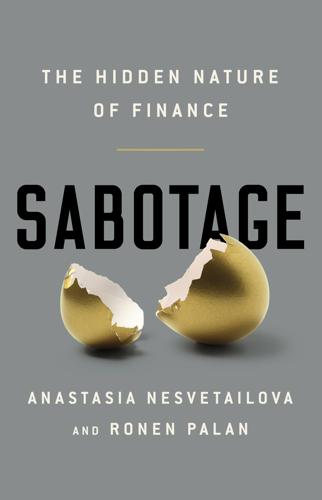
Sabotage: The Financial System's Nasty Business
by
Anastasia Nesvetailova
and
Ronen Palan
Published 28 Jan 2020
‘Stars of the Junkyard’, Economist, 21 October 2010, www.economist.com/briefing/2010/10/21/stars-of-the-junkyard. 5. W. Cohan, ‘Michael Milken invented the modern junk bond, went to prison, and then became one of the most respected people on Wall Street’, Business Insider, 2 May 2017, http://uk.businessinsider.com/michael-milken-life-story-2017-5?r=US&IR=T. 6. ‘Stars of the Junkyard’, Economist. 7. Cohan, ‘Michael Milken invented the modern junk bond’. 8. ‘Stars of the Junkyard’, Economist. 9. Cohan, ‘Michael Milken invented the modern junk bond’. 10. Insights for this section come from the best story written about the role of Ranieri personally and Salomon Brothers as an institution: Michael Lewis’s Liar’s Poker: Two Cities, True Greed, Hodder and Stoughton, 1989. 11.
…
Only we would add that if we have learned anything in the past four decades, it is that financial innovation includes the sabotage not only of governments but also of clients and competitors. It is this unique ability to combine all three of the qualities John Tuld lists to his board that seems to ensure really big money. THE KING OF JUNK In the early 1980s a certain Michael Milken invented what became known as the ‘junk bond’; or, more elegantly, the high-yield bond. Junk bonds are considered among the most important innovations in twentieth-century finance. Their creator, Michael Milken, would be widely celebrated by the industry. Eventually Milken’s efforts would afford him residency of an exclusive gated community in California, better known as the Bay Area Prison. On the surface, Milken’s idea appeared innocuous enough.
…
Clark, A., ‘Former Bear Stearns boss Jimmy Cayne blames conspiracy for bank’s collapse’, Guardian, 5 May 2010, www.theguardian.com/business/2010/may/05/bear-stearns-boss-denies-blame [accessed 23 June 2017. CNN, ‘ICO Scams Have Raised More Than $1 Billion, Report Claims’, 19 May 2018, www.ccn.com/ico-scams-have-raised-more-than-1-billion-report-claims. Cohan, W., ‘Michael Milken invented the modern junk bond, went to prison, and then became one of the most respected people on Wall Street’, Business Insider, 2 May 2017, http://uk.businessinsider.com/michael-milken-life-story-2017-5?r=US&IR=T. Cohan, William D., House of Cards: How Wall Street’s Gamblers Broke Capitalism, Allen Lane, 2009, pp. 244–53. Commons, J. R., Institutional Economics, vol. 1: Its Place in Political Economy, Transaction Publishers, 1990.
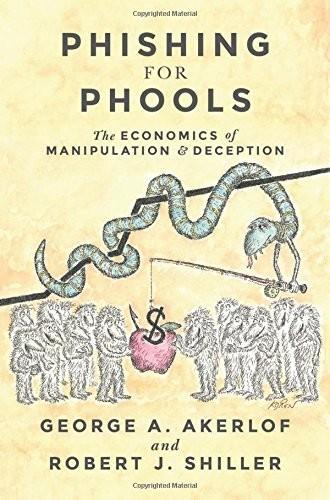
Phishing for Phools: The Economics of Manipulation and Deception
by
George A. Akerlof
,
Robert J. Shiller
and
Stanley B Resor Professor Of Economics Robert J Shiller
Published 21 Sep 2015
The next chapter shows how the looting of the S&Ls metastasized into the market for junk bonds in the beginning of our new age of greed. Soon-to-be-bankrupt S&Ls played a significant role in the expansion of the market for junk bonds, which underlay hostile takeovers of even the largest firms—previously deemed impossible. TEN Michael Milken Phishes with Junk Bonds as Bait The work of one man, Michael Milken, in the 1970s and 1980s changed the face of US finance forever. No longer could corporate executives of large US corporations be confident that their companies were too big to be challenged by corporate raiders threatening hostile takeovers because now the raiders could acquire even very large companies without putting up much capital.
…
. ∞ Printed in the United States of America 10 9 8 7 6 5 4 3 2 1 CONTENTS PREFACE vii INTRODUCTION Expect to Be Manipulated: Phishing Equilibrium 1 PART ONE Unpaid Bills and Financial Crash CHAPTER ONE Temptation Strews Our Path 15 CHAPTER TWO Reputation Mining and Financial Crisis 23 PART TWO Phishing in Many Contexts CHAPTER THREE Advertisers Discover How to Zoom In on Our Weak Spots 45 CHAPTER FOUR Rip-offs Regarding Cars, Houses, and Credit Cards 60 CHAPTER FIVE Phishing in Politics 72 CHAPTER SIX Phood, Pharma, and Phishing 84 CHAPTER SEVEN Innovation: The Good, the Bad, and the Ugly 96 CHAPTER EIGHT Tobacco and Alcohol 103 CHAPTER NINE Bankruptcy for Profit 117 CHAPTER TEN Michael Milken Phishes with Junk Bonds as Bait 124 CHAPTER ELEVEN The Resistance and Its Heroes 136 PART THREE Conclusion and Afterword CONCLUSION: EXAMPLES AND GENERAL LESSONS New Story in America and Its Consequences 149 AFTERWORD The Significance of Phishing Equilibrium 163 ACKNOWLEDGMENTS 175 NOTES 181 BIBLIOGRAPHY 233 INDEX 257 PREFACE It’s “the economy, stupid!”
…
But, contrary to most economic thinking, new ideas and technical innovation do not invariably yield economic progress; some of them, instead, give new ways to phish for phools. Chapter 8: Tobacco and Alcohol. The preface began with Mollie and her addictive gambling. Gambling and drugs, and especially tobacco and alcohol abuse, are huge threats to our well-being. For many, many people, those threats are realized. Chapter 9: Bankruptcy for Profit, and Chapter 10: Michael Milken Phishes with Junk Bonds as Bait. We will revisit financial markets. We will see, from the US savings and loan crisis of the late 1980s, how seemingly small deviations from standard financial accounting (a form of information phish) can be remarkably consequential. Chapter 11: The Resistance and Its Heroes.
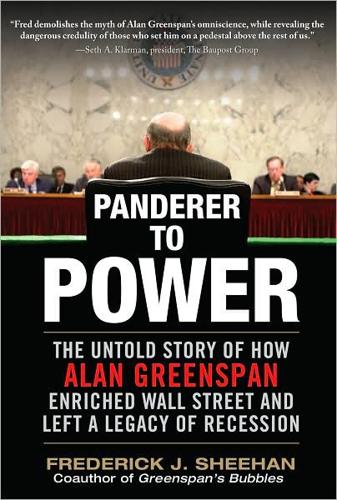
Panderer to Power
by
Frederick Sheehan
Published 21 Oct 2009
He bought the stock from Lindner’s American Financial Corporation, which had accumulated 19 percent of Gulf Broadcast shares.18 In Securities Markets in the 1980s, Barrie Wigmore wrote that Carl Lindner and Saul Steinberg “ran small insurance companies and dealt repeatedly in borderline investment tactics.”19 In Wigmore’s opinion, the evolution of the pair’s “activities illustrates the combination of native cunning and access to leverage that made them effective.”20 Regarding the relationship of Lindner and Steinberg, Wigmore wrote: “[i]t is tempting to conclude they also represented a cabal, who worked through Michael Milken’s group.”21 14 Ibid., p. 167. 15 Ibid., p. 173. 16 Seidman, Full Faith and Credit, pp. 235–236. 17 Mayer, Greatest-Ever Bank Robbery, p. 174. 18 Ibid. 19 Barrie A. Wigmore, Securities Markets in the 1980s, vol. 1 (New York: Oxford University Press, 1997), p. 360. 20 Ibid., p. 356. When Seidman was appointed to head the Resolution Trust Corporation (RTC)—the agency created to resolve problems in the S&L industry—he faced a mystery: why was the heaviest financial carnage among the largest holders of junk bonds sold by Michael Milken? These included Lincoln; Centrust Savings Bank of Miami, Florida; and Columbia Savings and Loan of Beverly Hills, California.
…
Integrated Resources, a financial services company that seemed to dabble in everything, but specialized in selling tax shelters and absorbing Drexel Burnham issues, met its maker on June 13, 1989. That was the day when no bank would roll over its commercial paper. It was also the day that Michael Milken resigned from Drexel.28 The daisy chain that had bloomed from the X-shaped desk in Los Angeles was withering.29 In fact, it started to gasp for water in late 1988 when Drexel Burnham Lambert agreed to settle insider trading investigations. Early in 1989, Michael Milken was indicted on 98 counts of fraud and racketeering. The market had been flooded with worthless paper: junkbond issues rose from $2 billion in 1980 to over $200 billion issued in 1988.
…
Luckily for Greenspan, his nomination preceded the public denouement of Lincoln Savings and Loan and of Charles Keating. Greenspan had been hired by Keating to persuade the Federal Home Loan Bank of San Francisco that Lincoln was in good shape. Greenspan succeeded even though Lincoln was one of Michael Milken’s top three junkbond customers among savings and loans (S&Ls).25 The rise of Milken—and of Greenspan—was attuned to the hectic financialization of America in the 1980s. “Maximizing shareholder value” turned out to be a veil for loading corporate balance sheets with debt, a much cheaper and faster route to growth than from retained profits.
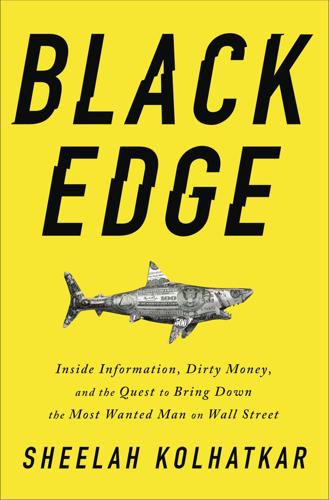
Black Edge: Inside Information, Dirty Money, and the Quest to Bring Down the Most Wanted Man on Wall Street
by
Sheelah Kolhatkar
Published 7 Feb 2017
Aizer had negotiated to keep 50 percent of the trading profits his team made, which added up to millions of dollars a month. They moved into a larger office adjacent to Gruntal’s trading floor to accommodate all the new traders being hired. Many of them came from Drexel Burnham Lambert, where Michael Milken worked, which had developed a reputation for training aggressive traders. Even in the bigger space, though, there was a disproportionate number of men with volcanic tempers squished together so tightly that they were practically on top of one another. Cohen and the rest of Aizer’s employees couldn’t have chosen a more opportune moment to begin a career in finance.
…
Days before, he and his traders had all watched in horror as Drexel’s top mergers and acquisitions banker, Dennis Levine, was arrested and charged with orchestrating a massive insider trading scheme by paying off lawyers and bankers to leak him information about takeovers and other deals. The Levine arrest was just the beginning of the unraveling of Michael Milken’s junk bond empire, an unprecedented series of prosecutions that would dominate news headlines for months. The SEC accused Levine of accumulating $12.6 million in illegal profits and froze all his assets, preventing him from paying his legal bills. Around 6 P.M. on June 5, 1986, the same day that Levine pleaded guilty to tax evasion, securities fraud, and perjury and agreed to help the Justice Department by providing evidence against others committing crimes on Wall Street, Cohen arrived at 26 Federal Plaza, at Broadway and Worth Street, wearing his best suit.
…
The company employees were supposed to share only information that was publicly available, to avoid breaking any laws. Or at least that was the idea. By the 2000s, after years of regulatory scrutiny, most traders had become more careful about sensitive mergers and acquisitions information. The Michael Milken case had taught traders to avoid buying shares of companies right before takeovers were announced; big price movements in stocks right before takeovers were announced often drew the attention of the SEC. Still, investors were desperate for information that might provide them with an advantage, and they went to a lot of effort to get it.

Extreme Money: Masters of the Universe and the Cult of Risk
by
Satyajit Das
Published 14 Oct 2011
Philipp Meyer (2009) American Rust, Simon & Schuster, London: 348. 20. Quoted in Anders, Merchants of Debt: 74. 21. Quoted in Baker and Smith, The New Financial Capitalists: 82. 22. Connie Bruck (1988) The Predators’ Ball: How Michael Milken and his Junk Bond Machine Staked the Corporate Raiders, Simon & Schuster, New York: 37. 23. Benjamin J. Stein (1992) A License to Steal: The Untold Story of Michael Milken and the Conspiracy to Bilk the Nation, Simon & Schuster, New York: 24, 25. 24. Sobel, Dangerous Dreamers, John Wiley, New York: 99. 25. Stein, A License to Steal: Chapter 9. 26. Sobel, Dangerous Dreamers: 187–91. 27.
…
Andrew Smithers and Stephen Wright (2000) Valuing Wall Street: Protecting Wealth in Turbulent Markets, McGraw-Hill, Illinois. Robert Sobel (1993) Dangerous Dreamers: The Financial Innovators from Charles Merrill to Michael Milken, John Wiley, New York. Andrew Ross Sorkin (2009) Too Big To Fail: Inside the Battle to Save Wall Street, Allen Lane, London. Benjamin J. Stein (1992) A License to Steal: The Untold Story of Michael Milken and the Conspiracy to Bilk the Nation, Simon & Schuster, New York. James B. Stewart (1992) Den of Thieves, Simon & Schuster, New York. Joseph Stiglitz (2002) Globalisation and its Discontents, Penguin Books, London.
…
Under an agreement with the government, Drexel pleaded nolo contendere (no contest) to six felonies and paid a record fine of $650 million. In March 1989, Milken was indicted and left the firm. In February 1990, Drexel filed for bankruptcy. National Treasure The Wall Street Journal stated: Not since J.P. Morgan has any financier influenced Wall Street and the nation the way Michael Milken has.... Not surprisingly, Mr. Milken, 42, aroused the fear and loathing of industrialists whose companies fell to his onslaughts or seemed likely candidates for his attention. He was “the most important financier of the century.”46 In its August 1985 article, Forbes considered that Milken “isn’t just a step ahead of his Wall Street peers—he’s a quantum leap ahead, acting as venture capitalist, investment banker, trader, investor.”47 Milken’s activities entailed inherent conflicts of interest.
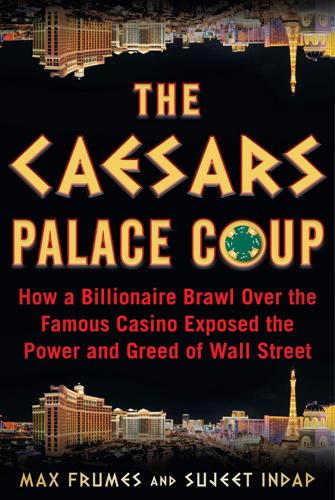
Palace Coup: The Billionaire Brawl Over the Bankrupt Caesars Gaming Empire
by
Sujeet Indap
and
Max Frumes
Published 16 Mar 2021
The central figure in the Caesars brawl was, however, absent from the room. Apollo Global Management had been one of the two principal private equity firms who had acquired the storied casino chain in 2008. Apollo was defined by two traits: genius and impunity. The firm was co-founded by Leon Black, Michael Milken’s right-hand man at Drexel Burnham Lambert. Milken had famously invented the junk bond market in the 1980s. After Milken’s fall from grace, Black, in 1990, had formed Apollo to exploit the imploding debt markets that Milken and Drexel themselves had wrought. Over its twenty-five-year existence, Apollo’s hallmark had become discerning opportunity where no one else dare tread and then striking deals everyone else was too timid to make.
…
The Roman antiquity theme was to play to guests’ urges for hedonism and decadence. Caesars Palace would be built with Teamsters money and, notwithstanding ties to organized crime, Sarno’s vision would quickly become the most famous casino in the world. Ironically, Caesars, when it was independent, found itself in the middle of the Michael Milken criminal proceedings. The junk bond king had been accused by the federal government of insider trading in Caesars bonds where his firm, Drexel Burnham Lambert, was leading a debt restructuring of the company in the 1980s. In the summer of 2004, Harrah’s announced it would acquire the newly re-christened Caesars Entertainment—which would give it not just Caesars but Bally’s, the Flamingo, and the Paris hotel—for $9 billion.
…
But Drexel’s wild ride of the previous decade had ended with an abrupt thud. On February 13, Drexel filed for Chapter 11 bankruptcy protection after pleading guilty to six counts of securities and mail fraud a year earlier—the fallout of the sprawling and spectacular white-collar crime spree masterminded by its larger-than-life banker, the so-called “junk bond king,” Michael Milken. Milken himself was facing ninety-eight counts of insider trading, securities fraud, and racketeering related to accusations of massive self-dealing while running the Drexel junk bond unit. In his five years at Drexel, Rowan established himself as an uncommonly sharp thinker on finance. After graduating from Wharton with both an undergraduate and MBA degree in 1985, he’d been hired as a junior investment banker, a position which involved plugging numbers into spreadsheet models and drafting investment memos.
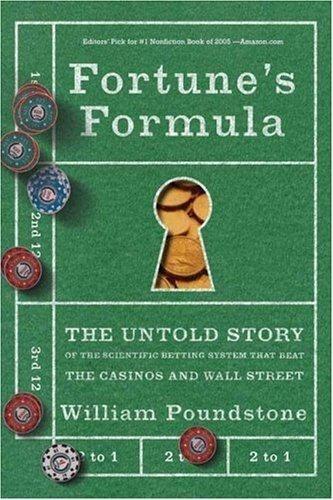
Fortune's Formula: The Untold Story of the Scientific Betting System That Beat the Casinos and Wall Street
by
William Poundstone
Published 18 Sep 2006
They can make sure trades are executed quickly and offer attractive rates. A broker can also pass on information ranging from research reports to rumors. The important thing was that the broker be someone of unquestioned honesty and discretion. Regan found someone who seemed just about perfect. His name was Michael Milken. Michael Milken IN HIS OWN WAY, Milken founded his career on the less-than-perfect efficiency of the market. As a Berkeley business student, Milken came across a study by W. Braddock Hickman on the bonds of companies with poor credit ratings. Hickman determined that a diversified portfolio of these neglected bonds was in fact a relatively safe and high-yielding investment.
…
Thorp once met Milken’s attorney brother, Lowell, who had an office in the same Beverly Hills building and who handled Michael’s legal affairs. Thorp’s closest approach to Michael Milken, however, was seeing him across Drexel’s Beverly Hills trading floor—behind a pane of glass. In the early 1970s, Steve Ross and Caesar Kimmel believed that it might make sense to take Warner Communications private. They wanted to buy back most of the stock issued, limiting ownership to the few biggest shareholders. To get the necessary money, Warner Communications would have to issue junk bonds. Ross asked Michael Milken for advice. Milken devised a plan and met with Ross in New York to discuss it.
…
. • Private Wire • Minus Sign PART TWO: BLACKJACK Pearl Necklace • Reno • Wheel of Fortune • More Trouble Than an $18 Whore • The Kelly Criterion, Under the Hood • Las Vegas • The First Sure Winner in History • Deuce-Dealing Dottie • Bicycle Built for Two PART THREE: ARBITRAGE Paul Samuelson • The Random Walk Cosa Nostra • This Is Not the Time to Buy Stocks • IPO • Bet Your Beliefs • Beat the Market • James Regan • Resorts International • Michael Milken • Robert C. Merton • Man vs. Machine • Why Money Managers Are No Good • Enemies List • Widows and Orphans PART FOUR: ST. PETERSBURG WAGER Daniel Bernoulli • Nature’s Admonition to Avoid the Dice • Henry Latané • The Trouble with Markowitz • Shannon’s Demon • The Feud • Pinball Machine • It’s a Free Country • Keeping Up with the Kellys • Though Years to Act Are Long • All Gambles Are Alike • A Tout in a Bad Suit • My Alien Cousin PART FIVE: RICO Ivan Boesky • Rudolph Giuliani • With Tommy Guns Blazing • The Parking Lot • Welcome to the World of Sleaze • Ultimatum • Princeton-Newport Partners, 1969–88 • Terminator • The Only Guy on Wall Street Who’s Not a Rat PART SIX: BLOWING UP Martingale Man • Kicking and Screaming • I’ve Got a Bad Feeling About This • Thieves’ World • Fat Tails and Frankenstein • Survival Motive • Eternal Luck • Life’s Rich Emotional Experiences PART SEVEN: SIGNAL AND NOISE Shannon’s Portfolio • Egotistical Orangutans • Indicators Project • Hong Kong Syndicate • The Dark Side of Infinity Notes Bibliography Acknowledgments Prologue: The Wire Service THE STORY STARTS with a corrupt telegraph operator.
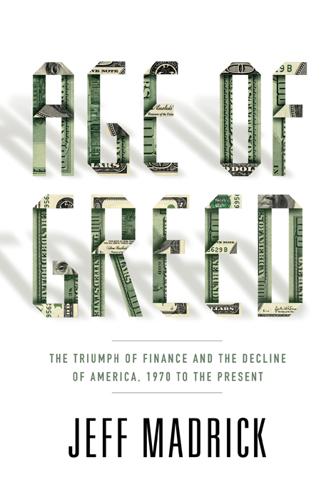
Age of Greed: The Triumph of Finance and the Decline of America, 1970 to the Present
by
Jeff Madrick
Published 11 Jun 2012
The time was driven by the prospects of riches on Wall Street—and finance determined business strategy. Welch made GE into a bank; he did not save American business. Seven years later, the banks in America nearly collapsed. 13 Michael Milken “THE MAGNIFICENT” In the poor economy of the 1970s and the early 1980s, financing for risky companies was especially difficult to raise. A young, independent-minded man, Michael Milken, stepped into the breach to provide money for many of these kinds of companies, and later in the 1980s became the key financier of among the largest takeover contests of the decade. In doing so, he became by far the richest man on Wall Street at his peak, almost single-handedly creating and controlling a $200 billion market for junk bonds—the high-interest-paying debt of risky companies.
…
Ronald Reagan The Making of an Ideology 8. Ted Turner, Sam Walton, and Steve Ross Size Becomes Strategy 9. Jimmy Carter Capitulation 10. Howard Jarvis and Jack Kemp Tapping the Anger 11. Paul Volcker, Jimmy Carter, and Ronald Reagan Revolution Completed Two THE NEW GUARD 12. Tom Peters and Jack Welch Promises Broken 13. Michael Milken “The Magnificent” 14. Alan Greenspan Ideologue 15. George Soros and John Meriwether Fabulous Wealth and Controversial Power 16. Sandy Weill King of the World 17. Jack Grubman, Frank Quattrone, Ken Lay, and Sandy Weill Decade of Deceit 18. Angelo Mozilo The American Tragedy 19. Jimmy Cayne, Richard Fuld, Stan O’Neal, and Chuck Prince Collapse Epilogue Notes Acknowledgments Index Illustration Credits A Note About the Author Other Books by This Author Introduction This book starts with a relatively unknown man named Lewis Uhler, a Southern Californian, who, like his father before him, hated the New Deal.
…
Several other firms besides Goldman, including Salomon, had both large merger banking departments and aggressive arbitrage departments. Commercial banks, with funds to lend, due partly to Walter Wriston’s aggressive maneuvers, became generous lenders to companies making bids, especially since they could charge handsome interest rates and high fees per loan. In the 1980s, Michael Milken almost single-handedly developed the junk bond market—where the bonds of riskier companies traded—which was used to finance the largest takeovers to that point. In the 1980s, Boesky hit jackpots in the oil mergers in which giant firms like Conoco, General America, Gulf, and Phillips Petroleum were bought for billions of dollars each.
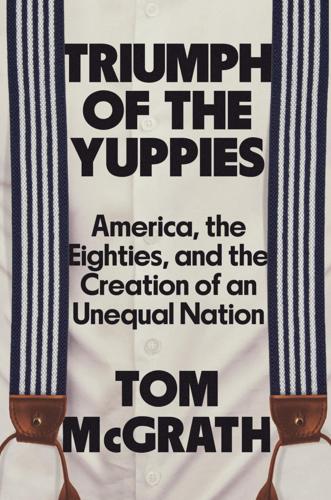
Triumph of the Yuppies: America, the Eighties, and the Creation of an Unequal Nation
by
Tom McGrath
Published 3 Jun 2024
Boone Pickens and Carl Icahn and their attacks on big corporations, well, they were simply holding corporate managers accountable to shareholders and rooting out inefficiency. Ultimately, Epstein concluded, where you stood on Michael Milken probably depended on what your view of a corporation was. Did a corporation exist merely to serve its legal owners, its shareholders? Or did it have obligations beyond that—to employees, suppliers, the community, the nation? The tens of thousands of people who’d lost their jobs likely had one opinion about that. There was no question that Michael Milken had a different one. It had been more than a decade since the Boomer colonization of urban neighborhoods had begun—a half dozen years since Dan Rottenberg had first written about Yuppies in Chicago magazine—and their impact was visible in cities around the country, from New York, Boston, and San Francisco to St.
…
“High-yield” bonds, in contrast, were considered risky: The companies issuing them weren’t a safe bet to pay back investors. Why would anyone ever buy such a bond? To compensate for the higher risk, investors were paid a higher interest rate, or yield. The bigger upside theoretically balanced out the lower downside—if you had the stomach for it. At the time Michael Milken was immersing himself in the bond world, high-yield bonds were overwhelmingly looked down upon by most traditional Wall Street investment firms. For starters, there weren’t that many of the bonds; most of those that existed were “fallen angels”—bonds that had been considered a safe bet when issued but were downgraded by the rating agencies after the issuing corporations had fallen on hard times.
…
For years Fonda had relied on ballet to stay in shape—whenever she was shooting on location, one of the first things she did was see if there was a ballet school nearby—but now that kind of stress on her foot was out of the question. And so on the recommendation of her stepmother, Fonda instead joined an exercise studio in Century City, California (coincidentally, not far from where Michael Milken would open the West Coast office of Drexel Burnham Lambert that same year). It was part of a small Southern California chain started by a woman named Gilda Marx. Fonda began taking classes with instructor Leni Cazden, and she quickly found Cazden’s routines—up to ninety minutes of movement, all set to an upbeat music soundtrack—to be “a revelation.”
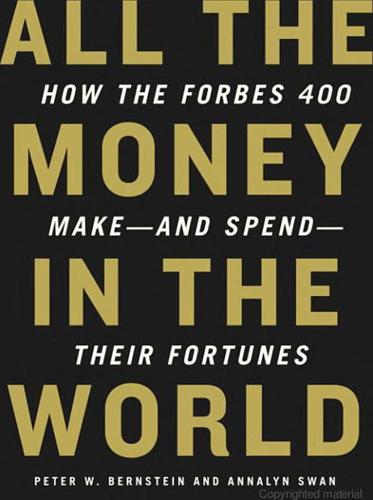
All the Money in the World
by
Peter W. Bernstein
Published 17 Dec 2008
These two sectors, more than any others, represented “Oklahoma” in the money rush of the last twenty-five years. More traditional fields for making big money, such as oil and manufacturing, grew at a much slower rate. In the 1980s, as the chapter on finance, Beyond Wall Street, chronicles, corporate raiders dominated the news, with Michael Milken (the so-called junk bond king) becoming the financial poster boy of his generation. Milken and other leveraged buyout (LBO) players would, in the popular phrase, “unlock” the value of the American corporation; typically, they would buy a company with borrowed money and then sell off some of its pieces and ruthlessly streamline others until they repaid their debt and made back their investment many times over.
…
The founders of these largely unregulated pools of capital funds pay themselves a managing fee and whatever percentage of fund profits the market will tolerate; and the market, not surprisingly, tolerates just about anything if the fund still offers a good return. The founders of hedge funds were not known, as a group, for a modest assessment of their own talents. In 2006 the highest-paid founder13 of a hedge fund was James H. Simons. His paycheck was $1.7 billion. If Michael Milken symbolized the emergence of new financial fortunes, Bill Gates, the founder of Microsoft, played that part for the tech revolutionaries—and, unlike Milken, he has remained a powerhouse over the last twenty-five years. He joined the list in 1986 and has been number one since 1994. His fortune now equals14 the combined GDP of eleven African countries (Burundi, Niger, Ethiopia, Tanzania, Central African Republic, Lesotho, Liberia, Namibia, Sierra Leone, Malawi, and the Congo), with a population totaling 226 million.
…
Craig began investing in cellular licenses from the outset, buying pops for as little as $6 each, at a time when the business was so new that few people were thinking about it. But as cellular grew27, so did the cost of acquiring the pops. The bill for licenses ran into hundreds of millions of dollars. Throughout the 1980s McCaw bought hundreds of thousands of pops, aided by junk bonds issued by junk-bond king Michael Milken. (See Chapter 8, Beyond Wall Street.) McCaw began by building a cellular network on the West Coast; but it soon became obvious that he needed a national network. After he sold Twin City Cablevision in 1987, McCaw was free to devote even more time to his cellular plans and to plow ever-greater sums into the acquisition of pops.
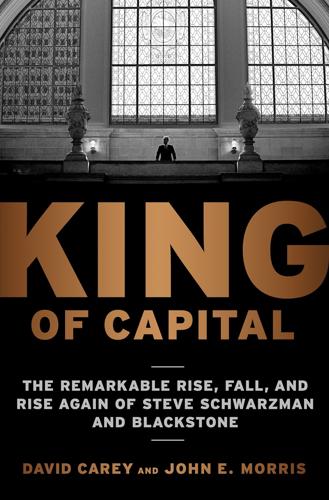
King of Capital: The Remarkable Rise, Fall, and Rise Again of Steve Schwarzman and Blackstone
by
David Carey
Published 7 Feb 2012
On the debt side of the LBO equation, U.S. banks flush with petrodollars from oil-rich clients in the Middle East and Japanese banks eager to grab a piece of the merger business in the States began building their presence and pumping huge sums into buyout loans. At the same time, a new form of financing emerged from the Beverly Hills branch of a second-tier investment bank. The brainchild of a young banker there named Michael Milken, the new financing was politely called high-yield debt but was universally known as the junk bond, or junk for short. Until Milken, bonds were the preserve of solid companies—the sort of companies that investors could feel confident would pay off their obligations in installments steadily for ten or twenty or fifty years.
…
Both shared a view that corporate America was riddled with inefficiencies. (“We don’t have assistants to assistants anymore,” the chairman of Owens-Illinois told Fortune magazine in 1988, the year after KKR bought the glass and packaging company. “In fact, we don’t have assistants.”) The fact that both groups had developed symbiotic relationships with Michael Milken ensured that they would be lumped together in the public’s consciousness. True or not, the image of LBO artists as a pernicious force on the corporate landscape was being permanently etched. Egged on by the corporate establishment and labor unions, Congress explored ways to combat hostile takeovers and junk bonds.
…
It forged an abiding tie between Blackstone and Chemical Bank’s Jimmy Lee that would be of enormous consequence to both. A gregarious spark plug of a man who resembled a back-gelled Martin Sheen and was known for his spiffy silver-dollar suspenders, Lee soon emerged as a kingpin of leveraged finance, a banker’s banker to other LBO luminaries such as Henry Kravis and Ted Forstmann. Just as Drexel Burnham’s Michael Milken had created the junk-bond market, tapping the public capital markets to finance the corporate raiders and buyout shops of the 1980s, Lee reinvented the bank lending market with his syndicates, which allowed risk to be shared and thereby allowed much larger loan packages to be assembled. At Chemical and its later incarnations (Chase Manhattan Bank, the name Chemical adopted in 1996 after buying Chase, and later JPMorgan Chase, after Chase bought J.P.
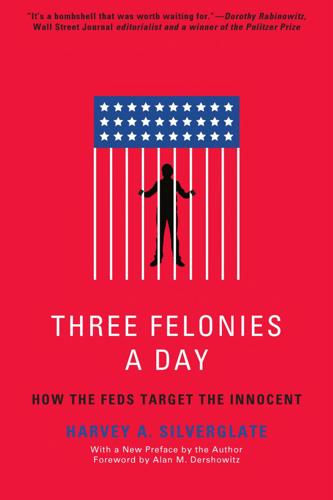
Three Felonies a Day: How the Feds Target the Innocent
by
Harvey Silverglate
Published 6 Jun 2011
Consider some of the cases that will be discussed in more detail further on in this book: Philip Russell, a lawyer from Greenwich, Connecticut, was indicted in 2007 for obstruction of justice because he destroyed child pornography, despite the fact that child porn is illegal even to possess (“contraband”) and therefore holding, rather than destroying it, arguably would be criminal. Michael Milken, under threat that the Department of Justice would prosecute his younger brother if the older brother did not take a plea bargain, pled guilty in 1990 to a felony that a judge later ruled (in a trial against a Milken cohort) did not constitute a crime. The Department of Justice in 2002 indicted, and then convicted Arthur Andersen & Company, at the time one of the nation’s “Big Five” accounting firms, for obstruction of justice simply because the firm followed its normal document-retention-and-destruction policy before receiving a document-production subpoena in connection with the government’s investigation of Enron Corporation.
…
“They’re just cutting me loose,” the doctor lamented. In the Department of Justice’s world of “eat or be eaten,” whoever makes it to the prosecutor’s door first generally gets the deal. There and only there is the “truth” written, or perhaps composed. chapter four Following (or Harassing?) the Money I think often of the prosecution of Michael Milken, the financial genius and guiding star of the brokerage firm of Drexel, Burnham & Lambert. Milken and his firm flowered in the 1970s and ’80s when Milken created a whole new capital market capable of financing daring new ventures that threatened to upset many an old order. But the firm and its visionary leader suddenly crashed and burned at the climax of the Department of Justice’s assault on the “decade of greed” in the late1980s and early-’90s.
…
As is so often the case with federal criminal prosecutions, the fabrication consisted, in part, of dubious testimony given by rewarded witnesses, and felony charges for conduct (admitted to by Milken) that, to informed and objective observers, did not appear to constitute crimes. 98 Following (or Harassing?) the Money Michael Milken’s pioneering development of higher-risk, higher-yield corporate bonds (dubbed “junk bonds” by his detractors) gave birth to some of the most important start-up (and, in a real sense, upstart) companies of the decade. Among these were such now well-known challengers to America’s corporate status quo as McCaw Cellular, Barnes & Noble, MCI, and Ted Turner’s Cable News Network (CNN).
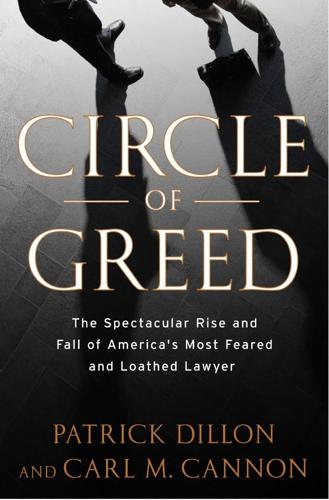
Circle of Greed: The Spectacular Rise and Fall of the Lawyer Who Brought Corporate America to Its Knees
by
Patrick Dillon
and
Carl M. Cannon
Published 2 Mar 2010
Then profits continued to drop with fewer referrals and less business. As a result, he calculated a deflated price of $63 million that Lexecon finally sold for on December 31, 1998. He did not tell the jury that the purchaser was his old friend and convicted felon Michael Milken or that he had authored an apologia for Milken in 1995 entitled Payback: The Conspiracy to Destroy Michael Milken and His Financial Revolution. Salpeter directed Fischel to recall Milberg Weiss attorney Pat Coughlin’s attempt to discredit him with the trial judge. “After the Apple trial in 1991, California law firms weren’t interested in hiring us anymore,” Fischel told the jury.
…
For three decades, as Americans created the greatest gain of wealth in the history of the world, the vengeful, fearless, abrasive, tactically brilliant Lerach had shaken down the “who’s who” of the Fortune 500 list. No one had been immune—not Disney, not Drexel Burnham, not Citibank, Goldman Sachs, Bank of America, Merrill Lynch, Credit Suisse First Boston, Global Crossing, AT&T, Hewlett-Packard, Apple Computer, Exxon, Time Warner, R.J. Reynolds, Arthur Andersen, WorldCom, Enron. Not Michael Milken or T. Boone Pickens. Not Charles Keating, Ivan Boesky, Al Dunlap, Michael Ovitz, Ron Perelman, Bernard Ebbers. Not Kenneth Lay or even Dick Cheney. During those thirty years Bill Lerach, and the firm Milberg, Weiss, Bershad, Hynes & Lerach—for whom he had been the shrewdest and most aggressive legal strategist, its boldest negotiator, its star litigator—returned more than $45 billion in fraud judgments and settlements to millions of shareholders, small and large, and institutional investors—minus his own cut, which was not inconsiderable.
…
AT THE TIME HE purchased Lincoln Savings, Charlie Keating pledged to retain Lincoln’s experienced executives and continue its primary business of making home loans. He did not keep this promise. Within months all company officers were replaced by staffers from American Continental, and its home loan programs were gutted. Next, Keating—through Lincoln—purchased $2.7 billion in high-risk junk bonds, mostly from Michael Milken’s Drexel Burnham. These were far riskier waters than Lincoln had ever navigated, and the men at the helm had little experience in such ventures. Meanwhile, not liking the noise Ed Gray was making in Washington, Keating began doling out contributions to key congressional members—nearly half a million dollars in all.
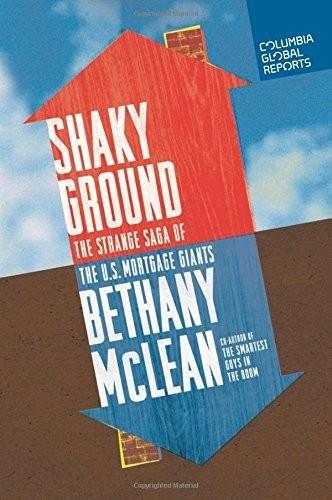
Shaky Ground: The Strange Saga of the U.S. Mortgage Giants
by
Bethany McLean
Published 13 Sep 2015
Goldfarb, Washington Post, March 6, 2010. http://www.washingtonpost.com/wp-dyn/content/article/2010/03/05/AR2010030501764.html 106“This paper lays out the Administration’s plan”: “Reforming America’s Housing Finance Market: A Report to Congress,” Department of Treasury and Department of Housing and Urban Development, February 2011. http://www.treasury.gov/initiatives/Documents/Reforming%20America%27s%20Housing%20Finance%20Market.pdf 111“will not be able to earn their way back”: Speech by Ed DeMarco, September 30, 2011. http://problembanklist.com/fhfa-head-says-fannie-mae-and-fred-die-mac-cannot-be-fixed-0407/ 112The Greatest Trade Ever: The Behind-the-Scenes Story of How John Paulson Defied Wall Street and Made Financial History, by Gregory Zuckerman (Crown Business, 2009). 114“make clear the Administration’s commitment”: “The Untouchable Profits of Fannie Mae and Freddie Mac,” by Gretchen Morgenson, New York Times, February 15, 2014. http://www.nytimes.com/2014/02/16/business/the-untouchable-profits-of-fannie-mae-and-freddie-mac.html 118“Undoubtedly, rosy reporting”: “Revealing Fannie Mae’s and Freddie Mac’s Budget Costs: A Step Toward GSE Elimination,” by Romina Boccia, The Heritage Foundation, March 16, 2014. http://www.heritage.org/research/reports/2014/03/revealing-fannie-maes-and-freddie-macs-budget-costs-a-step-toward-gse-elimination 124“the perpetual conservatorships”: “FHFA’s Permanent Conservatorship Ignores the Law,” by Michael H. Krimminger, American Banker, December 17, 2014. http://www.americanbanker.com/bankthink/fhfas-permanent-conservatorship-ignores-the-law-1071687-1.html 128“Investments in quality education”: “Michael Milken: How Housing Policy Hurts the Middle Class,” by Michael Milken, Wall Street Journal, March 5, 2014. http://www.wsj.com/articles/SB10001424052702304610404579401613007521066 130“While housing usually leads the country out of recession”: “Obama to Outline Proposals to Bolster a Lagging Housing Sector,” by Jonathan Weisman, New York Times, January 7, 2015. http://www.nytimes.com/2015/01/08/us/obama-to-outline-proposals-to-bolster-a-lagging-housing-sector.html 135“four core principles for what I believe reform should look like”: President Obama’s remarks on homeownership, August 6, 2013. https://www.whitehouse.gov/the-press-office/2013/08/06/remarks-president-responsible-homeownership 141“The critical flaws in the legacy system”: Michael Stegman’s remarks, March 5, 2015. http://www.treasury.gov/press-center/press-releases/Pages/jl9987.aspx 142“The housing lobby likes to pretend”: “Life Without Fannie and Freddie,” Wall Street Journal, December 26, 2014. http://www.wsj.com/articles/life-without-fannie-and-freddie-1419635987 147“Housing for housing’s sake”: “Karen Petrou on Mortgages and Medicare,” by Karen Shaw Petrou, Federal Financial Analytics, June 28, 2013. http://www.fedfin.com/blog/1318-karen-petrou-on-mortgages-and-medicare Columbia Global Reports is a publishing imprint from Columbia University that commissions authors to do original on-site reporting around the globe on a wide range of issues.
…
This happened after Democrats, frustrated by their inability to confirm nominees, took the dramatic step of eliminating filibusters for most of the president’s nominations. This allowed the administration to appoint Mel Watt, a gracious, charming, liberal Democratic former congressman from North Carolina and a longtime evangelist for homeownership. DeMarco took a position at the Milken Institute, a pro-market think tank run by former junk-bond king Michael Milken. (Right around that time, Milken wrote an op-ed for the Wall Street Journal in which he argued that subsidized mortgages create nothing good. “Investments in quality education and improved health will do more to accelerate economic growth than excessive housing incentives,” he wrote.) A few months later, DeMarco gave a speech at the Richmond Federal Reserve.
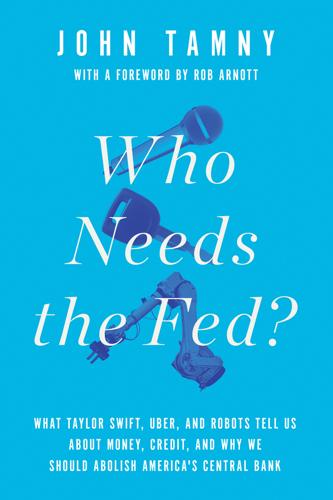
Who Needs the Fed?: What Taylor Swift, Uber, and Robots Tell Us About Money, Credit, and Why We Should Abolish America's Central Bank
by
John Tamny
Published 30 Apr 2016
The risk of lending the $10,000 to him is logically much greater. The loan may well be made (figure Lawrence would have all manner of credit sources lining up to lend to her), but only at a rate of interest that reflects the risk involved. That, in its most basic form, is high-yield finance. Enter Michael Milken. His name was needlessly sullied in the 1990s for having spent time in prison for alleged violations relating to “insider trading” (something the SEC, Congress, and the courts still can’t even define12). Yet Milken would be one of the faces on any Mount Rushmore meant to lionize the greatest capitalists ever.
…
No matter what the Fed does, the cost of credit (meaning the economy’s resources: those tractors, computers, actors and actresses, cameras, and so on) in the real economy is always detached from what the Fed wishes. In Hollywood, it is incredibly difficult to access credit, no matter one’s track record. In Silicon Valley, those who need credit acquire it by trading equity stakes in their concepts with venture capitalists and salary-deprived employees. On Wall Street, it’s often about track record, yet Michael Milken found credit for companies that were traditionally ignored by Wall Street and major banks but were willing to pay high rates of interest (“junk bonds”) for the privilege. What this should illustrate is that the Fed can’t change the on-the-ground economic reality. This is a good thing. While credit will always be easy for Apple no matter the fed funds rate, it will always be expensive for the up-and-coming company with an idea but little or no revenues.
…
Banks, too, have corporate lending arms that regularly work with small businesses, not to mention far more established companies in need of finance. For a company to expand and frequently create the jobs that come with that expansion, there must be savers first. Banks and investment banks are paid handsomely for bringing the two together. Going back to Michael Milken, while he cleaned the clocks of investment banks that turned their noses up at “junk bonds,” ultimately those same banks learned from their mistakes. Now, they all have junk-bond or “high-yield” bankers who raise money for the riskier business concepts willing to pay higher rates of interest in return for credit.
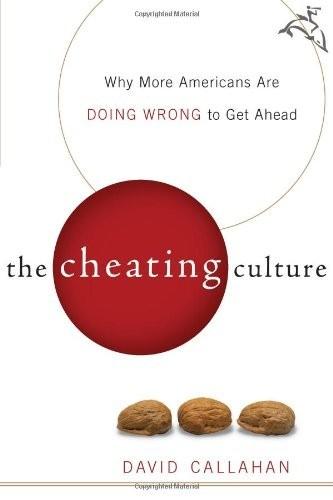
The Cheating Culture: Why More Americans Are Doing Wrong to Get Ahead
by
David Callahan
Published 1 Jan 2004
As sociologist Robert Merton wrote fifty years ago, the "sacrosanct goal" of wealth "virtually consecrates the means"—any means.30 F. Scott Fitzgerald's Jay Gatsby is an iconic figure in this regard—he was irresistibly appealing despite the sordid origins of his fortune. Real-life America has been filled with similar characters, ranging from Joseph P. Kennedy, who made much of his fortune illegally, to Michael Milken, who easily rehabilitated his image following his conviction for insider trading in the late 1980s. Even very nasty people who prevail in ugly mudslinging or backstabbing contests can win grudging respect—as Richard Hatch did when he triumphed on the reality television show Survivor. Survivor was supposed to simulate a situation in which a group of sixteen people must battle the elements and eke out an existence on a desert island off Borneo.
…
"Wall Street is a cesspool of hanky-panky and the biggest gambling casino in the country," complained a Republican former commissioner in 1982. "The SEC has got to let the industry know that there's a cop on the beat." Shad sent the opposite message.13 Shad lost some of his fervor for gutting the SEC as a crime wave engulfed the business world during the mid-1980s. He went on to prosecute Ivan Boesky, Michael Milken, and other insider traders with considerable zeal. In many ways Shad was cleaning up his own mess. Deregulation not only sent a permissive signal to Wall Street, it also led to increased corruption among accountants. While overshadowed by the insider trading cases and big scandals involving defense contractors, the 1980s saw the largest wave of accounting abuses in history.
…
It is the largest U.S. government law enforcement team focused exclusively on crimes related to the stock market, including insider trading, false earnings reports, and other kinds of deception. The office became famous in the 1980s, when it prosecuted the insider trading scandals involving Ivan Boesky and Michael Milken. In 2002, as scandals engulfed corporate America, the task force had only twenty-five lawyers. Assistant U.S. attorneys did their own copying. Numerous cases were not pursued because of a lack of resources. "We've got too many crooks and not enough cops," one federal regulator told Fortune magazine.
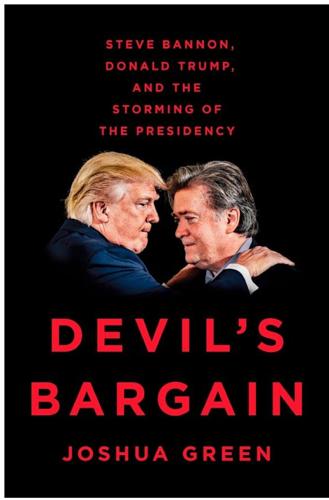
Devil's Bargain: Steve Bannon, Donald Trump, and the Storming of the Presidency
by
Joshua Green
Published 17 Jul 2017
FOUR “A DANGEROUS WAY TO LOOK AT THE WORLD” After Bannon graduated from Harvard Business School in 1985, he parachuted into a war zone, landing in Goldman Sachs’ New York office at the height of the hostile-takeover boom. The job thrust him into the kind of high-pressure situation he adored: a primal, intense, all-consuming struggle between two warring factions. Goldman Sachs put him on the front lines. A few years earlier, in the late 1970s, a young bond trader named Michael Milken had quietly set the stage for a revolution on Wall Street when he discovered that, in the aggregate, bonds of former blue-chip corporations that had fallen on hard times—known as “fallen angels”—consistently outperformed those of current blue chips with better creditworthiness. Because struggling corporations held a higher risk of failure, fallen angels had to offer higher interest rates than blue-chip bonds to attract customers.
…
After Milken was freed and had begun rehabilitating his image, Bannon appeared as a featured speaker at one of his conferences. More than anything, Milken was a kind of spirit animal who fired the imagination and showed just how far you could go if you stopped worrying about appearances and seized opportunity. His lesson was never forgotten. If you took Michael Milken and Drexel in 1985 and teleported them from Wall Street to Washington, D.C., in 2015, what you’d wind up with would look a lot like Stephen Bannon and Breitbart News: a band of outsiders laying siege to a comfortable, fattened, and vulnerable establishment. — Two big things were going on at Goldman Sachs in the late 1980s.
…
(Société Générale . . . not so much—the independent distribution business had dried up by then.) No longer needing a day job, Bannon dabbled in minor Hollywood moguldom. He became an executive producer of movies, including Anthony Hopkins’s 1999 Oscar-nominated Titus. He rolled up a succession of small media properties from, among others, Michael Milken, Terry Semel, and Doug Liman (the latter carrying residuals to Fox’s prime-time teen soap opera The O.C.—“great intellectual property,” Bannon boasted to Variety). “He loved doing deals,” said Vorse. “He had his hands in everything.” He invested in, or served on the board of, companies that made products ranging from homeopathic nasal spray to branded video games for Burger King.
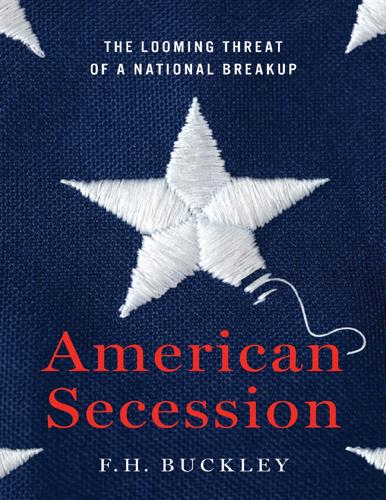
American Secession: The Looming Threat of a National Breakup
by
F. H. Buckley
Published 14 Jan 2020
After the acquisition, the very proper executives and lawyers of the tobacco firm traveled south in their three-piece suits to meet their new employees, and came across a group of women in one of the restaurants. “What do you do?” an executive asked them. “We’re FFMs,” was the response. “What’s that?” asked a lawyer. “We’re finger-f____ mammas.” The merger wasn’t a success. People like Michael Milken realized that the conglomerates were too large and too diversified. Executives had lost touch with their separate divisions, and the managers didn’t know how to run them. Breaking up a conglomerate was expected to increase the value of the separate parts, and the evidence shows that it did.
…
Busting up the corporate behemoths produced enormous wealth gains in our economy.3 If America is like a giant conglomerate, with the federal government trying to make rules for South Carolina and California and everything in between, we might be gaining less from economies of scale than we lose from being overlarge. We may need deconglomerization in the form of secession, and the people behind Calexit would be doing the political version of what Michael Milken did in the corporate world. Next, let’s look at how, simply as an exit option, secession might impose costs. Underinvestment Under the compact theory of federalism, a state could secede whenever it wanted, or at least whenever it asserted that the federal government was in breach of the Constitution.
…
In general, they’re all too big if the goal is to maximize a country’s per capita GDP. If smaller countries such as Czechoslovakia could benefit from a breakup, then wouldn’t large countries like China, Russia and the United States benefit even more? We’re too large and too centralized, like a 1970s conglomerate, and isn’t that an argument for a political version of Michael Milken’s breakup, deconglomerization mergers? Other countries have been able to bargain their way past the barriers to secession. When our country is so overcentralized in governance but so divided politically, when the level of mistrust is so high, when partisan rancor blocks needed reforms, the costs of secession might be smaller than the costs of remaining united.
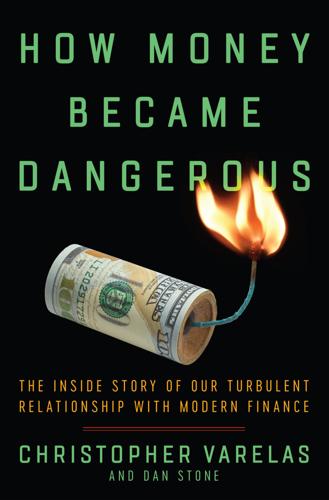
How Money Became Dangerous
by
Christopher Varelas
Published 15 Oct 2019
I recently attended a San Francisco Giants baseball game, and who threw out the first pitch? Our former-hero-turned-prison-inmate, Michael Milken. The crowd set down their hot dogs and beers and applauded him warmly. After serving two years in prison on multiple felony convictions, he had reinvented himself as a philanthropist, and even his once infamous history as the Junk Bond King was now celebrated. Except that nowadays, no one says junk bond. The accepted term is high-yield bond. So Michael Milken is again a hero, junk bonds are high-yield bonds, and corporate raiders have become activist investors. This signals a major evolution in American business, from the time of Steinberg’s attack on Disney through to the current day.
…
Only then had I made an impression, so that’s from where my job offer had come. I was fairly certain I would accept it—until I got interest from Drexel Burnham Lambert. A dozen or so years prior, Drexel had been a mere shrub in the towering forest of Wall Street firms, but that all began to change in the 1970s after Drexel lured a brilliant young Wharton student, Michael Milken, to join its ranks. At Wharton, Milken had noticed a simple market inefficiency—companies with lower credit ratings couldn’t effectively get financing. These weren’t necessarily bad companies; many of them were simply companies that had taken on too much debt, enough to threaten solvency, but they were still likely to survive and pay back their borrowings.
…
Drexel Burnham Lambert—which earned the nickname on Wall Street of Drain-’em Burn-’em & Lambast-’em—became the go-to investment bank and facilitator for these hostile takeovers on the strength of Milken’s high-yield bond market. Milken himself became a Wall Street celebrity, coronated as the Junk Bond King. Michael Milken had grown up in the San Fernando Valley outside of Los Angeles. The son of an accountant, he was exposed to numbers and finance at an early age. He was tirelessly ambitious, the definition of a workaholic—even in high school, he slept only three or four hours a night. He played on the basketball team and also served as head cheerleader (imagine the costume changes at timeouts), and he picked up shifts at a local diner for extra cash.
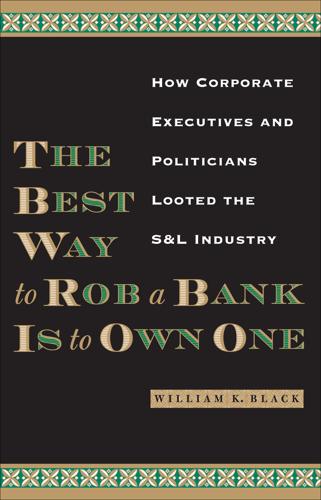
The Best Way to Rob a Bank Is to Own One: How Corporate Executives and Politicians Looted the S&L Industry
by
William K. Black
Published 31 Mar 2005
Without the 1986 tax act, the Arizona, Texas, and Louisiana real estate bubbles would have continued to inflate. The resultant real estate crash would have been far worse. • S&Ls were a small (overall) player in the junk bond markets. They were important because several of them, including Lincoln Savings, were “captives” of Michael Milken and Drexel Burnham Lambert (Black 1993c). • Economists controlled the drafting of the 1982 St Germain Act. The key lessons that proponents of the conventional wisdom drew were that “a rule against fraud is not an essential or even necessarily an important ingredient of securities markets” (Easterbrook and Fischel 1991, 285), that private market discipline turned presumed conflicts of interest into positive synergies, and that regulators like the Securities and Exchange Commission (SEC) were more harmful than helpful.
…
Beebe helped scores of control frauds acquire S&Ls and banks in the Southwest (Mayer 1990, 226). Beebe would loan the money to buy the S&L. The buyer would, in turn, cause his S&L to make far larger loans to Beebe’s straws. The straws, of course, would not repay the loans. Beebe won, the S&L owner won, and the taxpayers lost. Similarly, Michael Milken, the “junk bond king” of Drexel Burnham Lambert, financed Charles Keating’s purchase of Lincoln Savings and David Paul’s purchase of CenTrust Savings (Black 1993c). Keating did not have to spend a penny of his own money to buy the S&L. Another scam was to have the existing shareholders of the S&L direct it to fund the acquisition.
…
In 1993, when I served as the NCFIRRE’s deputy staff director, one of the members of the commission told me that Keating called him immediately after buying Lincoln Savings to offer him the job of CEO. Keating told him having a California charter was “a license to steal” and guaranteed his salary would exceed $1 million. He declined Keating’s offer. The third reason to fear Keating was that not a penny of his purchase of Lincoln Savings came from his pocket. Michael Milken and the junk bond operations he controlled at Drexel Burnham Lambert provided all the cash for the deal. Milken had a standard operating procedure in such cases. Drexel greatly overfunded the buyer. Keating needed $51 million to purchase Lincoln Savings, but Drexel issued over $125 million in junk bonds out of American Continental Corp.

A First-Class Catastrophe: The Road to Black Monday, the Worst Day in Wall Street History
by
Diana B. Henriques
Published 18 Sep 2017
Shad informed Volcker that the SEC and the U.S. attorney’s office in New York would hold simultaneous press conferences after the market closed on Friday, November 14, to announce that Boesky had been arrested, had agreed to pay $100 million to settle SEC charges of insider trading, would plead guilty to a single criminal charge, and was cooperating with the government’s continuing criminal investigation. For several months, Boesky had been secretly recording his conversations with various Wall Street figures, including Drexel’s powerful financier Michael Milken. So far, the clandestine tapes had not produced all that prosecutors had hoped for, but it wasn’t possible to keep Boesky’s undercover work a secret any longer. One of Boesky’s investment entities was publicly traded, and the next day, under SEC rules, it had to release its quarterly report—which, of course, would have to disclose the small detail of its CEO’s arrest.
…
Boesky’s various investment partnerships currently held about $2 billion in securities, Shad continued, and “for a short period of time, he will be permitted to be associated with these entities in order to preserve the assets and avoid defaults on bank and other loans.” * * * AFTER THE PRESS conferences, “three rumors—all of which turned out to be true—made the rounds on Wall Street,” one account noted. One rumor was that Boesky had been wearing a wire for months, another was that he might implicate Michael Milken and Drexel, and the third—“the one that seemed the most incredible, almost impossible to fathom or accept”—was that Boesky had been allowed to secretly sell hundreds of millions of dollars of stock before the announcement of his arrest. Yes, the SEC had let Boesky start liquidating his holdings in early November.
…
Soon Brady would be knee-deep in the savings and loan crisis, which gave him little time for the reforms his own commission had recommended. As the stock market gradually and fitfully recovered, any sense of urgency in Congress evaporated. In September 1988, David Ruder’s enforcement staff filed a landmark civil complaint against Drexel Burnham and its star executive, Michael Milken. As Drexel negotiated a settlement with the SEC and the Justice Department, it turned to former SEC chairman John Shad, asking him to serve as the firm’s new independent chairman as it desperately tried to rebuild its business. * * * CHICAGO WOULD NEED to rebuild, too. In January 1989, Leo Melamed was determined to enjoy the five-day pageantry surrounding the inauguration of George H.
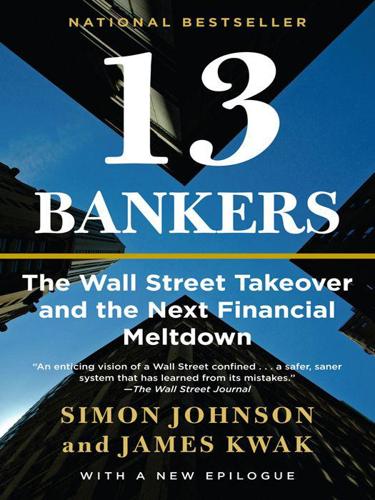
13 Bankers: The Wall Street Takeover and the Next Financial Meltdown
by
Simon Johnson
and
James Kwak
Published 29 Mar 2010
Their serial innovations created the new money machines that fueled the rapid, massive growth in the size, profitability, and wealth of the financial sector over the last three decades—all of which helped Wall Street become a dominant political force in Washington. This process began in the 1970s, when Michael Milken, a trader at Drexel Burnham Lambert, had the insight that “junk bonds”—bonds that were rated below “investment grade” by the credit rating agencies*—were generally underpriced, either because investors had an irrational aversion to them or because they lacked a liquid market in which to trade them.
…
—Alan Greenspan, chair of the Federal Reserve, July 16, 20031 The 1980s came to a close with the peak of the savings and loan crisis. The failure of over 2,000 banks between 1985 and 1992 was by far the largest financial sector mass die-off since the Great Depression.2 The government bailout of the S&L industry cost more than $100 billion, and hundreds of people were convicted of fraud.3 In 1990, Michael Milken, the junk bond king, pleaded guilty to six felonies relating to securities transactions. In 1991, Citibank was facing severe losses on U.S. real estate and loans to Latin America and had to be bailed out by an investment from Saudi prince Al-Waleed bin Talal. In 1994, Orange County lost almost $2 billion on complicated interest rate derivatives sold by Merrill Lynch and other dealers; county treasurer Robert Citron pleaded guilty to securities fraud, although no one on the “sell side” of those transactions was convicted of anything.
…
Each of them threatened a symbolic stack of paper documents with a pair of garden shears—except for James Gilleran, director of the OTS, who brought a chainsaw.44 Over the past twenty years, finance changed in the public eye from a boring and slightly untrustworthy pursuit to the glistening centerpiece of the modern American economy. In much of the country, suspicion of bankers remained high or even increased with the prosecutions of people from Ivan Boesky and Michael Milken (insider trading) to Henry Blodget (talking up bad stocks). But where it mattered most—on elite academic campuses, in the business and financial media, in think tanks, and in the halls of power in Washington—banking became the latest chapter of the American Dream, the way to make vast riches by working hard and creating innovative new products that would supposedly improve life for everyone.

Capitalism in America: A History
by
Adrian Wooldridge
and
Alan Greenspan
Published 15 Oct 2018
Junk bonds expanded from a mere 3.5 percent of the bond market in 1977 to a quarter of the market a decade later. Michael Milken became the symbol of the era, with his $550 million salary in a single year and his annual Predators’ Ball. Some of this looked too good to be true. Junk bonds lived up to their name: around a fifth of the bonds issued from 1978 to 1983 had defaulted by 1988. Many of the thrifts that bought junk bonds went bankrupt, as did Drexel Burnham itself in February 1990. Michael Milken was indicted on almost a hundred counts of racketeering, ending up in jail, and his company, Drexel Burnham, was forced into bankruptcy.
…
The new generation of entrepreneurs could draw on three resources that existed more abundantly in America than elsewhere, and that, when combined with an entrepreneur-friendly president in Washington, produced a business revolution. Financial innovators provided new sources of cash such as junk bonds from Michael Milken and venture capital from Silicon Valley’s well-established venture-capital industry. Great universities provided science parks, technology offices, business incubators, and venture funds. A liberal immigration policy provided a ready supply of willing hands and brains. Amar Bhidé of Tufts University suggests that “venturesome consumption” also promoted American entrepreneurialism.
…
The government largely stood back while all this restructuring took place on the grounds that corporate turmoil promoted wealth creation. Antitrust legislators stood pat for WorldCom’s $37 billion merger with MCI, and Citicorp’s $70 billion merger with Travelers. There were a few exceptions. Rudy Giuliani stepped in to discipline two of the greatest corporate raiders, Michael Milken and Ivan Boesky, and the antitrust authorities fought an intense battle with Bill Gates. Much discussed though they were at the time, however, these exceptions did little to change the character of the era. THE FINANCIAL REVOLUTION Ronald Reagan inaugurated the most exuberant era on Wall Street since the 1920s.
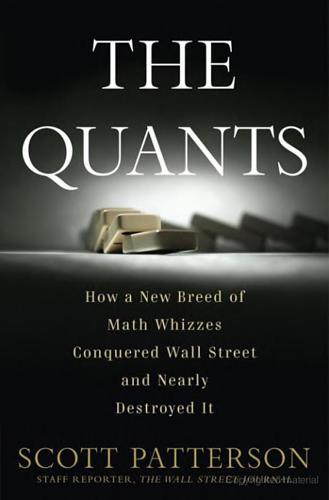
The Quants
by
Scott Patterson
Published 2 Feb 2010
Quants were agnostic on such matters, devoting themselves instead to predicting whether a company’s stock would move up or down based on a dizzying array of numerical variables such as how cheap it was relative to the rest of the market, how quickly the stock had risen or declined, or a combination of the two—and much more. That night at the St. Regis was a golden hour for the quants, a predators’ ball for the pocket-protector set. They were celebrating their dominance of Wall Street, just as junk bond kings such as Michael Milken had ruled the financial world in the 1980s or swashbuckling, trade-from-the-hip hedge fund managers such as George Soros had conquered the Street in the 1990s. Muller flicked a lock of sandy brown hair from his eyes and snatched a glass of wine from a passing tray, looking for his friends. A few nonquants, fundamental investors of the old guard, rubbed elbows with the quant crowd that night.
…
In mid-December 1987, an army of vans pulled up in front of a nondescript office complex in the heart of sleepy Princeton. A squad of fifty armed federal marshals clad in bulletproof vests burst from the vans and rushed into the office of Princeton/Newport Partners, which was perched in a small space over a Häagen-Dazs shop. They were searching for documents related to the fund’s dealings with Michael Milken’s junk bond empire at Drexel Burnham Lambert. The man in charge of the case was Rudolph Giuliani, the U.S. attorney for the Southern District of New York. He was trying to build more evidence for the government’s case against Drexel and was hoping employees of the hedge fund, threatened with stiff fines and possible prison terms, would turn against Milken.
…
Wall Street’s gut traders eventually proved to be no match for such explosive brainpower. Michael Lewis’s Wall Street classic, Liar’s Poker, exemplified and exposed the old-school Big Swinging Dick trader of the 1980s, the age of Gordon Gekko’s “greed is good.” Lewis Ranieri, the mortgage-bond trader made famous in the book, made huge bets based on his burger-fueled gut. Michael Milken of Drexel Burhman for a time ruled the Street, financing ballsy leveraged buyouts with billions in junk bonds. Nothing could be more different from the cerebral, computerized universe of the quants. Those two worlds collided when Aaron Brown strode onto Kidder’s trading floor. As an up-and-coming mortgage trader at a rival New York firm, Brown was an interloper at Kidder.
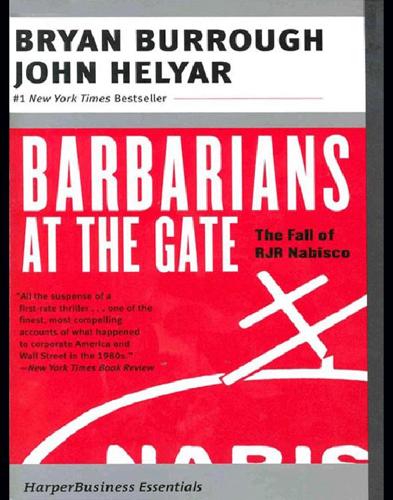
Barbarians at the Gate: The Fall of RJR Nabisco
by
Bryan Burrough
and
John Helyar
Published 1 Jan 1990
“Why have a dog and bark for yourself?” he would ask. The limited partnership idea had come from one of Johnson’s most determined pursuers, a wild-eyed Wall Street dealmaker named Jeffrey Beck. Beck worked for Drexel Burnham Lambert, the sharp-elbowed investment house whose Beverly Hills-based junk-bond chief, Michael Milken, almost single-handedly transformed the takeover business in the mid-1980s.* On Wall Street they called Beck “Mad Dog.” Although he sported a bow tie and horn-rim glasses, Beck more closely resembled a cross between a stand-up comedian and an assassin. A true character, Beck styled himself the ultimate wheeler-dealer, a rock-’em-sock-’em, behind-the-scenes operator, one of Wall Street’s top seven dealmakers—he could name the other six—a bit of hubris not terribly far from the truth.
…
For years the remaining 30 percent—the meat in the sandwich—came from a handful of major insurance companies whose commitments sometimes took months to obtain. Then, in the mid-eighties, Drexel Burnham began using high-risk “junk” bonds to replace the insurance company funds. The firm’s bond czar, Michael Milken, had proven his ability to raise enormous amounts of these securities on a moment’s notice for hostile takeovers. Pumped into buyouts, Milken’s junk bonds became a high-octane fuel that transformed the LBO industry from a Volkswagen Beetle into a monstrous drag racer belching smoke and fire. Thanks to junk bonds, LBO buyers, once thought too slow to compete in a takeover battle, were able to mount split-second tender offers of their own for the first time.
…
Oh, it’s a bid, Forstmann reasoned, that is, if Kravis doesn’t get a cold, if the Dodgers win the World Series, if his wife makes fourteen more dresses…. He could feel the anger welling up inside him. It was a familiar feeling. Ted Forstmann had been angry for five years now. Wall Street had been taken over by a cartel, Forstmann believed. A junk-bond cartel. A cartel whose guru was Michael Milken of Drexel Burnham Lambert and whose most powerful member was Henry Kravis of Kohlberg Kravis. A cartel that now had the upper hand in the looming battle for RJR Nabisco. The cartel’s product, the high-yield, or “junk,” bond, was by 1988 being used to raise money—usually for takeovers—by virtually every major investor, brokerage house, and leveraged-buyout firm.

Console Wars: Sega, Nintendo, and the Battle That Defined a Generation
by
Blake J. Harris
Published 12 May 2014
Anderson asked, making his rounds. Several hands rose, the faces below them revealing whimsical excitement and no trace of remorse. “Maybe you should think about leaving too,” Michael Milken suggested to Kalinske when they met for lunch in the summer of 1994. “Come join Larry and me—you’d be an absolutely perfect fit.” “That’s flattering,” Kalinske said, allowing himself for a moment to consider the possibility. Michael Milken, the renowned junk bond kingpin who had celebrated the eighties by shaking up Wall Street—which led to his starting off the nineties by serving twenty-two months in prison—was now a free man, and he wanted to do something good with his life.
…
Milken had admired his lunch date ever since the two met in the early eighties, but it was something Kalinske had done at the end of the decade that really got his attention. On April 23, 1989, when the country was busy blaming its financial problems on a recently-indicted Michael Milken, Kalinske wrote an op-ed to the Los Angeles Times declaring that “The U.S. government should have given Michael Milken a commendation and gold medal for the help he’s provided our country’s economy instead of indicting him.” That was the kind of thing someone never forgets, and it further convinced Milken that Kalinske was the right guy to run his new venture.
…
The board of directors had the final word, and there were always ways for them to silently retaliate. By 1983 the board’s trigger-happy acquisition strategy, coupled with major losses due to the videogame crash, had led Mattel to the brink of bankruptcy. Miraculously, the company managed to survive—with the last-minute help of junk bond guru Michael Milken. He raised enough money to keep Mattel afloat while simultaneously making the company leaner by selling off its recent, unrelated acquisitions. In the face of failure, the board’s power weakened and some members were let go, but those who remained were not happy to have been proven wrong. Nevertheless, they were in no position to retaliate, since they needed Kalinske’s help to rebuild the company.
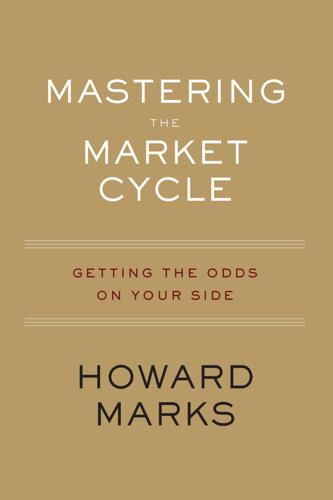
Mastering the Market Cycle: Getting the Odds on Your Side
by
Howard Marks
Published 30 Sep 2018
I’ve gained a great deal from reading the work of Peter Bernstein, John Kenneth Galbraith, Nassim Nicholas Taleb and Charlie Ellis. I’ve continued to pick up pointers from the people I cited in The Most Important Thing and others, including Seth Klarman, Charlie Munger, Warren Buffett, Bruce Newberg, Michael Milken, Jacob Rothschild, Todd Combs, Roger Altman, Joel Greenblatt, Peter Kaufman and Doug Kass. And since Nancy and I moved to New York in 2013 to follow our kids, I’ve been fortunate to add Oscar Schafer, Jim Tisch and Ajit Jain to this circle. Each of these people’s way of looking at things has added to mine.
…
And often conditions are exacerbated by exogenous events that sap confidence and damage the economy and the financial markets. In 1990 these consisted of: the Gulf War, which was set off by the Iraqi invasion of Kuwait; the bankruptcy of many of the prominent, highly levered buyouts of the 1980s; and the imprisonment of Michael Milken (the principal investment banker behind high yield bonds) and the collapse of Drexel Burnham (Milken’s employer and the investment bank most closely associated with high yield bonds). With Drexel and Milken gone from the scene, the remedial exchanges that had helped weakened companies avoid default were hard to effect.
…
“There’s a guy named Milken in California,” my boss said, “and he’s involved in something called high yield bonds. A client wants a portfolio of those bonds. Can you figure out what that means?” It was just in 1977 or 1978 that high yield bond investing had its institutional inception. That’s when Michael Milken achieved his first success in convincing investors that it’s okay for below-investment grade companies to issue bonds—and for institutions to buy them—if the interest rate is high enough to compensate for the risk. The high yield universe consisted of less than $3 billion of bonds at the time I first got involved.

Manias, Panics and Crashes: A History of Financial Crises, Sixth Edition
by
Kindleberger, Charles P.
and
Robert Z., Aliber
Published 9 Aug 2011
During economic slowdowns, many firms experience less rapid increases in their revenues than they had anticipated with the result that some that had been in the hedge finance group are shunted into the speculative finance group while some firms that had been in the speculative finance group move into the Ponzi finance group. Drexel Burnham Lambert, Michael Milken, and ‘junk bonds’ One of the great financial innovations in the 1980s was the development of ‘junk bonds’ – the bonds of firms that had not been ranked by one of the major credit-rating agencies. The interest rates on these bonds were generally three to four percentage points higher than interest rates on the bonds that had been ranked in one of the ‘investment grades’.
…
The sales pitch was that the buyers of junk bonds – say of a diversified portfolio of these bonds – had a ‘free lunch’ because the additional interest income would be more than enough to cover the losses when one or several of these bonds tanked because the borrowers went bankrupt. The innovation in the 1970s and 1980s was that Drexel Burnham Lambert, then a third-tier investment bank, began to issue junk bonds, known in more polite circles as high yield bonds; the mastermind of this innovation was Michael Milken. The firms that issued these bonds had to pay high interest rates to attract buyers. Many firms issued junk bonds to get the cash to finance leveraged buyouts; often the senior executives of a firm would seek to buy all of its publicly traded shares. Or Firm A might issue high yield bonds to get the cash to acquire Firm B before Firm B got the cash to buy Firm A.
…
Initially the supply of junk bonds had been limited to those of the ‘fallen angels’; bonds that had lost their investment grade rating because the firms that had issued them had fallen on tough times. The loss of the investment grade rating meant that some financial institutions could no longer hold these bonds, so the interest rates increased sharply. Michael Milken of Drexel Burnham Lambert developed some market innovations that greatly increased both the demand for and the supply of junk bonds. The decline in interest rates and the increase in the rate of economic growth of the 1980s created an encouraging environment for the growth of the junk bond market.

The Gods of New York: Egotists, Idealists, Opportunists, and the Birth of the Modern City: 1986-1990
by
Jonathan Mahler
Published 11 Aug 2025
My account of the SDNY’s raid on Princeton/Newport was drawn from Den of Thieves, news accounts, and an interview with James Regan. My portrait of Michael Milken and the SDNY’s pursuit of him was based on various news stories and profiles, including “Inside the Secret World of Michael Milken,” published in Manhattan, inc. in 1987, and a number of books, including The Predator’s Ball, by Connie Bruck, and Highly Confident: The Crime and Punishment of Michael Milken, by Jesse Kornbluth. My portrait of the Day of Outrage and Mourning in December 1987 was drawn from news accounts, most prominently the retrospective feature story “Death of the Black Activist Movement,” published in The Village Voice in 1992; interviews with Sharpton; and Bitter Fruit.
…
He was no longer just prosecuting bad actors on Wall Street; he was putting a whole era on trial. And there was no time to lose: He was planning to declare his Senate candidacy in a matter of weeks. It wasn’t Princeton/Newport that Giuliani was after. It was one of its trading partners, the investment bank Drexel Burnham Lambert, and its rainmaker, Michael Milken, whom Giuliani believed were at the very center of Wall Street’s culture of greed. Bringing the firm down—and putting Milken behind bars—would be the perfect capstone to Giuliani’s career at the Southern District. Milken was the architect of Wall Street’s junk bond revolution. He had grown up in a middle-class Jewish family in California’s San Fernando Valley, the son of an accountant, and had attended Berkeley in the late 1960s, studying business administration at ground zero of the countercultural revolution.
…
Kirtzman, Andrew. Giuliani: The Rise and Tragic Fall of America’s Mayor. New York: Simon & Schuster, 2022. Klein, Michael. The Man Behind the Sound Bite: The Real Story of the Rev. Al Sharpton. New York: Castillo International, 1991. Kornbluth, Jesse. Highly Confident: The Crime and Punishment of Michael Milken. New York: William Morrow and Company, Inc., 1992. Kozol, Jonathan. Rachel and Her Children: Homeless Families in America. New York: Crown Publishers, 1988. Kramer, Larry. Reports from the Holocaust: The Making of an AIDS Activist. New York: St. Martin’s Press, 1989. Kramnish, Michael, and Marc Fisher.
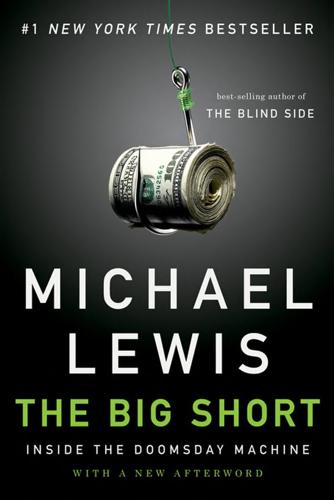
The Big Short: Inside the Doomsday Machine
by
Michael Lewis
Published 1 Nov 2009
Burry was right about this, too, but it would be three years before he knew it. The party on the other side of his bet against subprime mortgage bonds was the triple-A-rated insurance company AIG--American International Group, Inc. Or, rather, a unit of AIG called AIG FP. AIG Financial Products was created in 1987 by refugees from Michael Milken's bond department at Drexel Burnham, led by a trader named Howard Sosin, who claimed to have a better model to trade and value interest rate swaps. Nineteen eighties financial innovation had all sorts of consequences, but one of them was a boom in the number of deals between big financial firms that required them to take each other's credit risks.
…
He included me in a show, along with some child actors who'd gone on to become drug addicts, called "People Who Succeed Too Early in Life.") Anti-Wall Street feelings then ran high enough for Rudolph Giuliani to float a political career upon them, but the result felt more like a witch hunt than an honest reappraisal of the financial order. The public lynching of Michael Milken, and then of Salomon Brothers CEO Gutfreund, were excuses for not dealing with the disturbing forces underpinning their rise. Ditto the cleaning up of Wall Street trading culture. Wall Street firms would soon be frowning upon profanity, forcing their male employees to treat women almost as equals, and firing traders for so much as glancing at a lap dancer.
…
The crisis of 2008 had its roots not just in the subprime loans made in 2005 but in ideas that had hatched in 1985. A friend of mine in my Salomon Brothers training program created the first mortgage derivative in 1986, the year after we left the program. ("Derivatives are like guns," he still likes to say. "The problem isn't the tools. It's who is using the tools.") The mezzanine CDO was invented by Michael Milken's junk bond department at Drexel Burnham in 1987. The first mortgage-backed CDO was created at Credit Suisse in 2000 by a trader who had spent his formative years, in the 1980s and early 1990s, in the Salomon Brothers mortgage department. His name was Andy Stone, and along with his intellectual connection to the subprime crisis came a personal one: He was Greg Lippmann's first boss on Wall Street.

No Such Thing as a Free Gift: The Gates Foundation and the Price of Philanthropy
by
Linsey McGoey
Published 14 Apr 2015
Because the pictures were much better than the reality. But because I see myself as a global citizen, I go anyway’.3 An important stop on the elite conference circuit is the Milken Global Conference, an offshoot of the Milken Institute, founded by Michael Milken one year after he pleaded guilty to multiple felony charges for violating US securities law. In the TED Head world, as one former initiate put it, even ‘Wall Street’s criminals, like Michael Milken and Ivan Boesky, become larger than life. In a society that celebrates the idea of making money, it was easy to infer that the interests of the financial sector were the interests of the country’.4 The entrance fees are not cheap.
…
Despite the high withdrawal rate, Agora made about $72 million in income in 2011. Agora is managed by K12, a company founded by William Bennett, a former education secretary who suggested that setting up more online schools could help socially shy or bullied children to learn in the privacy of their homes. With investments from Michael Milken, K12 was soon pitching itself to state funders as a cost-effective alternative to public education, reaping vast profits in the process.29 Today, K12 receives about $5,500 to $6,000 per student from state and local governments. Many online schools run aggressive recruiting campaigns, spending taxpayer money on vans, billboards, and radio ads geared at enticing more students – a practice condemned by critics such as Jack Wagner, Pennsylvania’s state auditor general, who has suggested that it is ‘unfair for the taxpayer to be paying for additional expenses, such as advertising’.
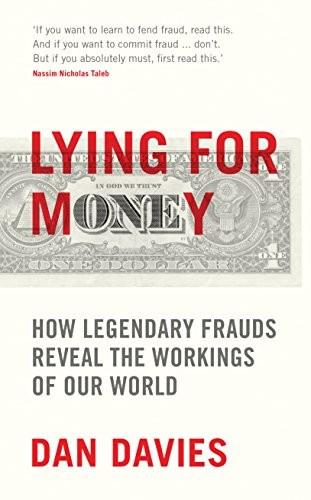
Lying for Money: How Fraud Makes the World Go Round
by
Daniel Davies
Published 14 Jul 2018
Before long, the S&L industry had moved on from its history of small local banks, and was increasingly characterised by quite large organisations, often owned or controlled by property developers, and several of which were connected to the junk bond financier (and later convicted securities fraudster) Michael Milken. It was at this point that the second phase of the S&L crisis can be said to have begun. Nobody better epitomises the S&L scandal than Charles Keating, an amazing fraud, crook and hypocrite. He was the owner of American Continental Corporation (ACC), a real estate company with its headquarters in Phoenix, Arizona.
…
The financial structure which Keating brought to the game was a clever means of cash extraction. Lincoln, in order to satisfy regulators, had to declare strong profits, and it did. ACC, on the other hand, did not carry out much profitable business other than borrowing money to finance half-built housing developments and acting as a place for Michael Milken to park junk bond deals. The two companies therefore entered into a ‘tax-sharing agreement’ which allowed ACC’s losses to offset Lincoln’s profits for corporation tax purposes, and incidentally allowed Keating to mingle the cash flows of the regulated bank he controlled with the less-regulated company that he owned.
…
Although he was able to bring huge amounts of political influence to bear, his attempts to get bank supervisors fired never really bore fruit. He found out that his detractors were simply better at bureaucratic infighting than his supporters. It did not help matters that ACC, his holding company, went ever more extravagantly bust as it got further and further involved with Michael Milken’s junk bond empire, and that he was financing ACC by selling bonds to widows and orphans in a way that was bound to attract the attention of other regulators, and burn the goodwill and political influence built up by his corrupt S&L. Lincoln Savings & Loan was seized by regulators in April 1989 and at $3.4bn was the most expensive of all the S&L failures.
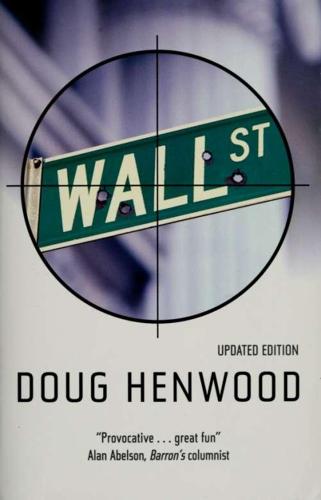
Wall Street: How It Works And for Whom
by
Doug Henwood
Published 30 Aug 1998
Unless there's some institutionalized oversight, a serious and representative supervisory board, managers can easily commandeer the institution for their own interest. But unfortunately for those who want to damn cooperative ownership entirely, shareholders in non-mutual thrifts did little better. One of the crucial junk bond buyers in Michael Milken's network was a public thrift, Columbia Savings. Shareholders can be as dispersed and inattentive as small depositors. Economists have their own understanding. Thrift pundit Robert Litan (1992) rejected popular explanations of the crisis, which center on "venality, greed and incompetence," out of professional discomfort.
…
Under the influence of Milton Friedman, economists paid attention only to money but not credit — that is, the medium of exchange used to grease immediate purchases and sales, but not the longer-term obligations used to finance investment and consumption. But MM's influence went well beyond the academy, as leverage artists, their bankers, and their apologists chanted a debt-doesn't-matter mantra throughout the 1980s mania. Forgetting the message in the 1958 paper about how debt can't really make you better off, another MM, Michael Milken, used the theory to convince people that debt doesn't hurt either, and thanks to tax deductibility, it really can make you better off. Here's how Business Wfee^(Farrell and Nathans 1989) characterized the popular influence of the MM theory, just after a wave of high-profile leveraged buyouts went bad in the summer of 1989: The rationale for such financings...dates back to seminal work in the late 1950s by two eminent economists, Merton H.
…
Two famous axioms from apostles of credit illustrate this faith. In the late 1970s, Citibank chair Walter Wriston, a promoter of Third World lending, rebutted skeptics with the argument that "Countries don't go bankrupt" (quoted in Kuczynski 1988, p. 5). The 1980s' chief debtmonger, the junk bond supremo Michael Milken, used to argue in the days before his incarceration that capital isn't a scarce resource, capital is abundant — it's vision that's scarce (quoted in Bruck 1988, p. 272). This credit culture is a long way from that described by a 19th century Scottish banker, G.M. Bell (quoted in Marx 1981, p. 679), who thought his colleagues to be finer moralists than clerics: RENEGADES Banking establishments are moral and religious institutions.
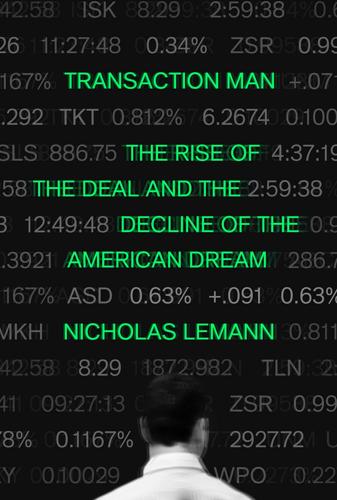
Transaction Man: The Rise of the Deal and the Decline of the American Dream
by
Nicholas Lemann
Published 9 Sep 2019
Within a few years, he had become the leading public advocate and justifier of a number of new techniques in the financial world that suddenly became pervasive: a large increase in mergers and acquisitions, including hostile ones; the development of the junk-bond market, whose high-risk, high-return instruments often financed these activities; enormous raises in the compensation of corporate chief executives, often in the form of stock options; the onset of leveraged buyouts and private equity as ways for financiers to take direct, usually temporary control of formerly publicly held companies. For a new coterie of raiders and financiers of a type Adolf Berle could hardly have imagined—Carl Icahn and Michael Milken, T. Boone Pickens and Irwin Jacobs—Jensen was the provider of the accompanying public philosophy, the scholar who could explain why their techniques were good for America. Between 1981 and 1983 alone, there were more than two thousand corporate takeovers a year valued at more than $1 million, far more than the country had ever seen, enabled in part by Ronald Reagan’s new administration in Washington signaling that it was going to interpret the antitrust laws more loosely.
…
A buyout firm would acquire control or even total ownership of a public company, financing the transaction with borrowed money; reorient the company from whatever had been distracting it from pursuing purely economic ends; and then resell it, as a whole or broken up into parts, either to another company or to a new set of public shareholders. The total value of leveraged buyouts in the United States was $1.4 billion in 1979, and $77 billion in 1988. The leading early leveraged buyout firm (of many) was Kohlberg Kravis Roberts, headed by Henry Kravis; the leading supplier of the debt that financed the buyouts was Michael Milken of Drexel Burnham Lambert, who created a substantial market for high-risk bonds to fund ungentlemanly financial transactions. Jensen was a great admirer of both men. On purely economic grounds, the argument against leveraged buyouts was that they piled too much debt onto the target companies.
…
Adolf Berle’s dream world of capitalism without capitalists had decisively ended within just a few years, without most of the world even noticing that a significant change had taken place or imagining that capital would now be looking for ways to take advantage of its new empowerment. But there were people who did understand. One of them was the most influential financier of the late twentieth century, Michael Milken of Drexel Burnham Lambert. That Milken—a guy in his thirties from a middle-class background, working out of Beverly Hills, California, for a formerly third-bracket investment firm—could be so important was a sign of how much and how quickly the financial world had changed. Milken saw that the bond markets were no longer the province of buy-and-hold trust officers and insurance companies; he created a market for high-risk, high-yield “junk bonds” that in the old days nobody would have wanted.
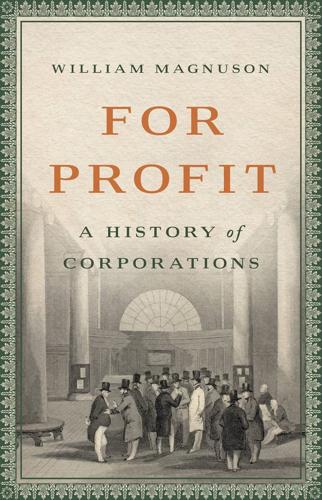
For Profit: A History of Corporations
by
William Magnuson
Published 8 Nov 2022
Now, its initial $10 million of cash had turned into $20 million—a return of 100 percent, all through the magic of debt. Of course, debt is not free. KKR had to pay interest on the money it borrowed, and the higher the interest rate, the harder it was to make money. KKR, recognizing this, turned to a newfangled debt market being developed by an investment banker named Michael Milken.20 In the 1980s, Michael Milken had transformed the sleepy world of bonds into a churning profit machine for his investment bank, Drexel Burnham Lambert. Operating out of his Beverly Hills office, Milken developed a market for so-called junk bonds, risky debt issued by debt-laden or struggling companies. Junk bonds had long been considered off-limits to most mainstream investors.
…
The only effective brake on private equity’s acceleration were two unrelated developments at the turn of the decade. The first was a rise in interest rates in the wider economy. Higher interest rates made debt more expensive, thereby making it harder for private equity firms like KKR to load their portfolio companies with bonds. The second development came when Michael Milken, the undisputed champion of junk bonds, was indicted for conspiracy and fraud in connection with his securities work. His investment bank, Drexel Burnham Lambert, pleaded guilty to mail and securities fraud and would eventually go bankrupt. Milken ultimately spent just twenty-two months in jail.
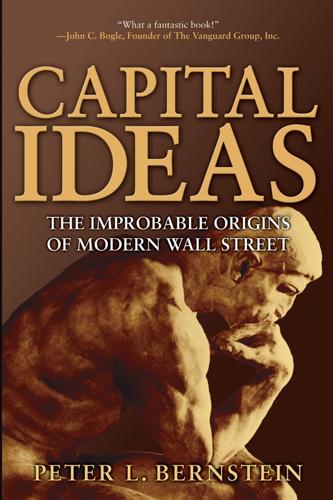
Capital Ideas: The Improbable Origins of Modern Wall Street
by
Peter L. Bernstein
Published 19 Jun 2005
In an article that appeared in the American Economic Review in December 1990, Leland and his Berkeley colleague Gerard Gennotte developed a full-scale model of crashes that reflects the same set of investor responses. It catches the sweat and pressure of real-time investing: All of us read and talk and listen and calculate and compute for hours on end and still never feel secure that we have as much—forget more—information than others. Even Ivan Boesky and Michael Milken were never certain they had the informational upper hand. The only hard information we have is the movement of stock prices themselves. “How’s the market?” is no idle question for most investors. The answer to that question on October 19, even when available, was devastating. The inundation of selling during the week preceding the crash and the tumultuous events of the early morning created a pervasive sense that “they” knew something awful.
…
Now they have the power to ruin the stock market.” This ad was not paid for by Ralph Nader or by one of the groups usually associated with attacking the rich and powerful. It was placed by a respected brokerage firm that is a full-fledged member of the Wall Street establishment. Just a few months later, Michael Milken, who had earned $25,000 in 1970 and $500 million in 1989, wrote to Judge Kimba Wood that “I never dreamed I could do anything that would result in being a felon.” The government’s measure of the damage he had done to others came to $685,614. Judge Wood sentenced him to ten years in jail. The stock market crash of October 19, 1987 wiped out $600 billion of wealth in six and a half hours.
…
Through it all, the only sound we hear is the clanking of primitive computers. They surveyed the scene from the top of the ivory tower. Let us now share their perspective, which reaches beyond the dickering business of eighths and quarters on a block trade and the flashing numbers on a computer screen. As the derring-do of Michael Milken and his cohorts fades from view, as financial innovation advances, and as the global economy fosters increasingly competitive financial markets, the vitality and flexibility of the capital markets come into sharp focus. These markets are the marvel of the capitalist system that the world yearns to emulate.
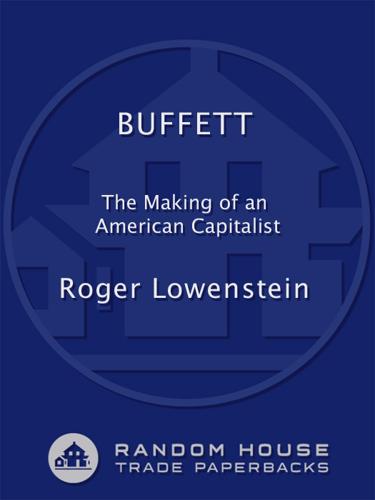
Buffett
by
Roger Lowenstein
Published 24 Jul 2013
They filled the seats and stood in the aisles—the same hearing room where a glowering Michael Milken had pleaded the Fifth. The front was filled with the technical paraphernalia of journalism—television cameras with their blinding spotlights, tape recorders, photographic equipment. The audience picked out Buffett, in a dark suit, seated at the witness table, and Katharine Graham, sitting in front. Now, in their preambles, the congressmen ascended to spasms of telegenic outrage. An arrogant disdain … the American people … ripped off by a few aggressive traders … Ivan Boesky … Michael Milken … our financial culture … these disgraceful episodes …23 Rep.
…
Many companies’ shares were being quoted for less than the value of their cash in the bank.19 But Graham, a classicist, could recognize Wall Street’s gloom as part of an all-too-human cycle: That enormous profits should have turned into still more colossal losses, that new theories should have been developed and later discredited, that unlimited optimism should have been succeeded by the deepest despair are all in strict accord with age-old tradition.20 Graham dissected common stocks, corporate bonds, and speculative senior securities (what Michael Milken would call junk bonds) as the biologist did the frog. At first blush, then, Security Analysis was a textbook for a profession still in the making.* But written during the madness of 1929 and its aftermath, the book was also a call to arms against the sins of speculation. In that sense, it was a total break.
…
There was no such thing as a bad bond. In a theoretical sense, Buffett agreed. The previous year, Berkshire had made a lot of money buying the (then cheap) bonds of a highly troubled creditor, Washington Public Power Supply System. Bankrupt credits often were attractive on a price-to-value basis; Michael Milken, Drexel’s junk-bond impresario, had gotten his start trading just such “fallen angels.” Junk bonds of recent vintage had the crucial distinction of not having yet fallen: they were weak credits issued at par (full price), with a long way to fall and little upside. Buffett, continuing in his “pejorative” vein, pointed out that the issuers of those junk bonds were raking in very fat fees, as were the deal promoters.
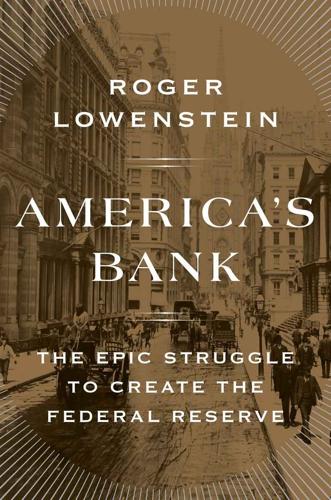
America's Bank: The Epic Struggle to Create the Federal Reserve
by
Roger Lowenstein
Published 19 Oct 2015
Owen, The Federal Reserve Act (New York: Century, 1919), 2–3. “Fear of a silver basis prevailed”: Barton Hepburn, A History of Currency in the United States (New York: Macmillan, 1924), 349–50. forced to go hat in hand: James Grant, Money of the Mind: Borrowing and Lending in America from the Civil War to Michael Milken (New York: Farrar, Straus and Giroux, 1992), 74. Morgan turned a profit: Vincent P. Carosso, The Morgans: Private International Bankers, 1854–1913 (Cambridge, Mass.: Harvard University Press, 1987), 339. Glass believed, on no evidence: Poindexter, “From Copy Desk to Congress,” 177. “It is just the money power”: Ibid., 206–7.
…
“Thoughtful students of economic history”: Speech of Senator Nelson W. Aldrich on S. Bill No. 3023, February 10, 1908, quoted in Warburg, The Federal Reserve System, 1:32. Given carte blanche to do as little: James Grant, Money of the Mind: Borrowing and Lending in America from the Civil War to Michael Milken (New York: Farrar, Straus and Giroux, 1992), 122–23. Tallies of the number of National Monetary Commission volumes differ. Andrew cites thirty-five volumes; see Andrew to Woodrow Wilson, November 23, 1911, A. Piatt Andrews Papers, Box 22, folder 7; however, Andrew L. Gray, Andrew’s grandnephew, cites twenty-three volumes in “Who Killed the Aldrich Plan?”
…
a scorching indictment: Untermyer was quite sarcastic in questioning Vanderlip, viz, “Of how many corporations are you a director Mr. Vanderlip; can you remember?”: Pujo Report. “Have you ever competed for any securities”: Ibid., 1542. “well-defined identity and community”: Ibid., 129. Public revulsion was nearly uniform: James Grant, Money of the Mind: Borrowing and Lending in America from the Civil War to Michael Milken (New York: Farrar, Straus and Giroux, 1992), 125. twenty-five thousand individual banks: This figure was widely used, including in the Pujo Report, 251. According to Robert A. Degen, The American Monetary System: A Concise Survey of Its Evolution Since 1896 (Lexington, Mass.: D.C. Heath and Company, 1987), 10, the total of banks in 1914 was twenty-eight thousand, a doubling from 1900.
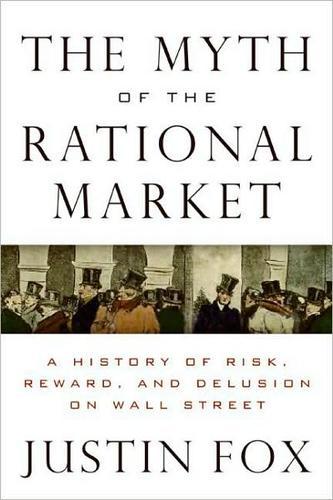
The Myth of the Rational Market: A History of Risk, Reward, and Delusion on Wall Street
by
Justin Fox
Published 29 May 2009
The $224 million all-cash hostile takeover of battery maker ESB (for Electrical Storage Battery Co.) by International Nickel in 1974 marked the beginning of a new era—notable because a blue-chip mining giant was doing the hostile bidding and a blue-chip Wall Street firm, Morgan Stanley, was representing it. Not many companies had that kind of money lying around. The advent of a takeover boom required the arrival of a financier. Michael Milken was that financier. As an undergraduate at UC–Berkeley in the 1960s, Milken had come across a 1957 National Bureau of Economic Research study showing that low-grade bonds delivered better returns than high-grade ones. This made perfect capital asset pricing model sense: Bonds downgraded by S&P or Moody’s had been deemed riskier than bonds that hadn’t, so investors should reap a reward for buying them.
…
These guys were just too big a piece of the market to assume that.”25 FINANCIAL RISK IS NOT JUST about numbers and scatter charts and pervasive forces. The actions of individuals matter. Ed Thorp managed his way through the market minefield of the late 1980s almost perfectly—Princeton-Newport Partners turned a profit in 1987—only to be blindsided by Rudy Giuliani. When the U.S. attorney for the Southern District of New York targeted Michael Milken for prosecution, Thorp’s Princeton partners got caught in Giuliani’s web. They were charged with parking securities for Milken’s Drexel Burnham Lambert. Thorp, while never accused of any wrongdoing himself, had to shut down his hedge fund. The influence of Giuliani paled, though, beside that of the most important one-man risk factor of modern times, the chairman of the Federal Reserve Board.
…
Drexel was not the first firm to “manufacture” junk bonds; Lehman Brothers was, in 1977. But Drexel soon came to dominate the business. 34. Years later, after a federal judge had thrown Milken in jail for securities fraud, Chicago professor and soon-to-be law school dean Daniel Fischel wrote a book with the very unprofessorial title Payback: The Conspiracy to Destroy Michael Milken and His Financial Revolution (New York: HarperBusiness, 1995). 35. Fischel, Payback, 38. (Despite the incendiary title, it’s a useful source of information.) 36. Economic Report of the President, February 1985, Washington, D.C.: U.S. Government Printing Office, 1995, 187–216. In an interview with the author, William A.

Unscripted: The Epic Battle for a Media Empire and the Redstone Family Legacy
by
James B Stewart
and
Rachel Abrams
Published 14 Feb 2023
But others detected a growing sense of invincibility. After the fire his ambitions expanded. His little-known National Amusements chain began buying large stakes in major entertainment companies: Twentieth Century Fox, Warner Communications, MGM Films, Columbia Pictures, and Time, Inc. The 1980s saw the emergence of the Michael Milken–financed corporate raiders, and Sumner joined their ranks. His opponents consistently underestimated his business acumen and fierce determination. Viacom management, who bid against him in 1987, belittled him as a provincial Boston theater operator, an impression reinforced when Sumner showed up at Viacom’s New York headquarters wearing a sports jacket he’d just bought at the discount chain Filene’s Basement—with the tags still on it.
…
She’d interrupt lunch with friends (as she often did with Stanger) the instant Sumner called. Soon Holland was indispensable. When Sumner asked Holland to move in with him, she did, taking on the roles of wife, secretary, business manager, and, increasingly, nurse. She redecorated the mansion. She arranged visits there with Sumner’s longtime friends Charlie Rose, Michael Milken, and Sherry Lansing, not to mention the women she imported for his sexual gratification. She oversaw his dealings with CBS and Viacom, organized a CBS board meeting at the house, arranged his Sunday movie screenings, and got him to his dentist and doctor appointments. Sumner made many demands on Holland, all of which she maintained she met: that she be present for every lunch and dinner with him; that she go to sleep when he did (even though this was much earlier than she preferred); that she not take overnight trips without him; that she stop seeing her friends.
…
The guest list was a who’s who of current and former Hollywood moguls, although virtually everyone had some direct financial interest in being there: Philippe Dauman and Leslie Moonves, of course; Sumner’s old pal Robert Evans; Sherry Lansing; the producer Brian Grazer; Michael Eisner, the Disney ex-chair; and Jeffrey Katzenberg, the DreamWorks cofounder Eisner had forced out at Disney. (Viacom had bought DreamWorks’ live-action studio for $1.6 billion in 2006.) The former junk-bond king Michael Milken, who had advised Sumner about his prostate cancer, was there, too. Sumner had given $30 million to George Washington University, home to the Milken Institute School of Public Health. Al Gore showed up; the former vice president’s Climate Reality Project was the recipient of $10 million from Sumner.
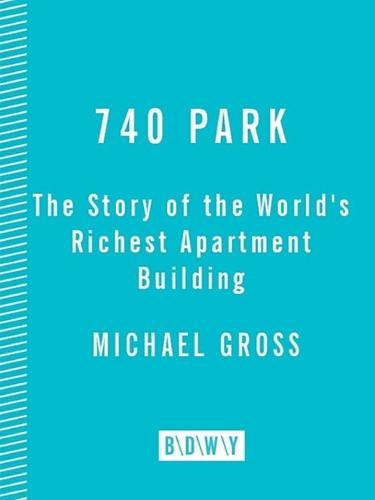
740 Park: The Story of the World's Richest Apartment Building
by
Michael Gross
Published 18 Dec 2007
He persuades Alfred this is a cool thing to do and we can make a lot of money, and then Alfred, who was always the brains figuring out the percentages and the legal structures, figures out a way to take over Bonbright, and the other guys there are happy to cash out and let these Young Turks drive the boat. And then it was the twenties and they were financing bonds, financing electric power plants, all over the world.” Soon they’d forged ties with every power in the power business, raising the money that funded the industry’s expansion. “He was the Michael Milken of the twenties,” says Peter Thorne, comparing his grandfather to the junk-bond king of the 1980s who also made a fortune and changed the world by financing what seemed like risky new technology. In the fall of 1924, Thorne and Loomis engineered the creation of United Light and Power, merging utilities in nine states into a $34-million-a-year colossus—and also revealed that they’d secretly organized the American Superpower Corporation, which had acquired ownership interests in some of the largest power companies across the country.
…
That was the first of several legal battles he’d have in the 1970s, including another against Barron’s, which accused him of questionable accounting, and a third with the Securities and Exchange Commission, which said he illegally manipulated a stock he was speculating in (Steinberg signed a consent decree without admitting or denying wrongdoing). At the same time, thanks to a young investment banker named Michael Milken at the firm Drexel Burnham Lambert, Saul found his way back to the cutting edge of finance. Saul’s specialty wasn’t really computers; it was investing. He was always on the hunt for new opportunities. In 1973, Milken had begun touting non-investment-grade bonds, also known as high-yield bonds, and later junk bonds, that paid exorbitant interest on what most investors saw as huge risks.
…
He started buying stock in Twentieth Century Fox, the New York Times, Filmways, Flying Tiger airlines, an insurance competitor called Republic Financial, Paine Webber, and the utility that owned the Three Mile Island nuclear reactor, but took none of them over; formed an investment partnership with Michael Milken that, Barron’s would say four years later, “has been a corporate whirling dervish, acquiring businesses, making leveraged buyouts and then spinning off pieces of its repackaged holdings to a pliant public”; bought himself a forty-first birthday party featuring a sit-down dinner for two hundred and songs by Broadway’s Evita, Patti LuPone; slept his way through several more women (he even moved out of 740 at the request of one of them, the Lancôme cosmetics model Nancy Dutiel); snorted a bunch more cocaine; and finally settled down for the long run.
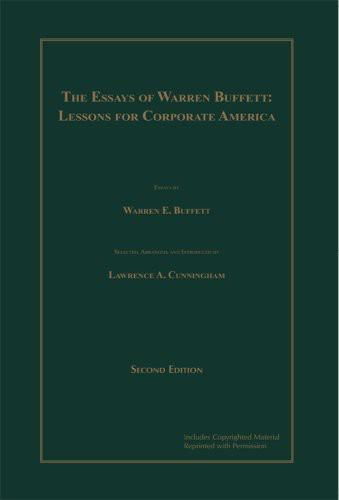
The Essays of Warren Buffett: Lessons for Corporate America
by
Warren E. Buffett
and
Lawrence A. Cunningham
Published 2 Jan 1997
He attributes this error to a flawed assumption recognizable to any first-year statistics student: that historical conditions prevalent during the study period would be identical in the future. They would not. Further illuminating the folly of junk bonds is an essay in this collection by Charlie Munger that discusses Michael Milken's approach to finance. Wall Street tends to embrace ideas based on revenue-generating power, rather than on financial sense, a tendency that often perverts good ideas to bad ones. In a history of zero-coupon bonds, for example, Buffett shows that they can enable a purchaser to lock in a compound rate of return equal to a coupon rate that a normal bond paying periodic interest would not provide.
…
The handiwork of the Wall Street of the 1980s is even worse than we had thought: Many important businesses have been mortally wounded. We will, though, keep looking for opportunities as the junk market continues to unravel. It is interesting to compare Wesco's approach (deliberate nondiversification of investments in an attempt to be more skillful per transaction) with an approach promoted for years by Michael Milken to help sell junk bonds. The Milken approach, supported by theories of many finance professors, argued that (1) market prices were efficient in a world where investors get paid extra for enduring volatility (wide swings in outcomes); (2) therefore, the prices at which new issues of junk bonds came to market were fair in a probabilistic sense (meaning that the high promised interest rates covered increased statistical expectancy of loss) and also pro- 1997] THE ESSAYS OF WARREN BUFFETT 103 vided some premium return to cover volatility exposure; and (3) therefore, if a savings and loan association (or other institution) arranged diversification, say, by buying, without much examination, a large part of each new Milken issue of junk bonds, the association would work itself into the sure to-get-better-than-averageresults position of a gambling house proprietor with a "house" edge.
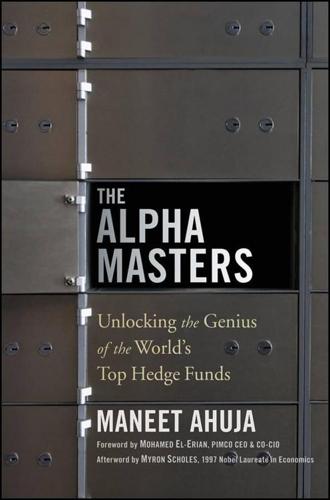
The Alpha Masters: Unlocking the Genius of the World's Top Hedge Funds
by
Maneet Ahuja
,
Myron Scholes
and
Mohamed El-Erian
Published 29 May 2012
Even though they were doing very well under the Bass umbrella, after about two years, the siblings were ready to really strike out on their own. “I think it was a little bit of hubris probably,” Lasry admits. He had learned a lot from the superstars at Bass and felt ready to invest his money on his own. What’s more, Drexel Burnham Lambert had collapsed in the wake of Michael Milken’s indictment for securities fraud, which plunged many companies with low junk bond credit ratings deeper in the red. Suddenly, there were massive opportunities for distressed investors. “You know, when you look back on it, I left what probably was one of the best jobs in America, running money for one of the world’s first billionaires,” Lasry says.
…
Tepper thinks of his investment track record as something similar to a connect-the-dots game, except the puzzle is never finished and the prize is billions of dollars. “When I got to Goldman, I changed the way junk bonds were traded. It was pretty radical, moving the whole market to trades on sectors. It used to be traded by maturities, which helped perpetuate the monopoly held by Michael Milken at Drexel Burnham,” explains Tepper. This approach to the U.S. junk bond market would serve Appaloosa well in its pursuit of global opportunities. International Intrigue Venturing into the world of emerging markets in the mid-1990s was like second nature to Tepper, who had been a key player in many “different capital markets and things that were happening around the world,” he says, from his time at Goldman.

The Greed Merchants: How the Investment Banks Exploited the System
by
Philip Augar
Published 20 Apr 2005
In the late 1980s Tom Wolfe’s bestseller Bonfire of the Vanities, Michael Douglas’s Oscar-winning portrayal of Gordon Gekko in the movie Wall Street and Michael Lewis’s tale of the Salomon Brothers jungle, Liar’s Poker, picked out some not very attractive characteristics of investment banking people.16 A crop of insider trading and market manipulation cases – notably the Boesky and Milken affairs in America and the Guinness scandal in the UK – revived old memories of greed and corruption in financial circles.17 Ivan Boesky was a prominent risk arbitrageur – someone who takes stock market positions in the hope of profiting from takeover bids – who received a prison sentence and a $100 million fine in 1986 after admitting to trading on insiders’ tips.18 Boesky was well known in financial circles but what shocked the public at large was where the trail led. Boesky turned state’s evidence and named Michael Milken as an insider dealer. Milken was the high profile investment banker who had transformed junk bonds – high risk, high yielding securities – from a backwater of the capital markets into a mainstream financial instrument. Under the leadership of Milken and the firm he worked for, Drexel Burnham Lambert, junk bonds were used to underpin the leveraged buy-outs – demergers funded largely by debt – that refinanced corporate America in the eighties.
…
And indeed it restored its reputation to such a degree that when in 2004 the founders of Google decided to list their company in a groundbreaking way, with all sorts of ethical objectives about the way they wanted ownership to work, guess who they chose to co-lead the issue? No Way In This background of financial volatility, staff turnover and scandal at Lehman, Salomon and CSFB should have provided ideal circumstances for other firms to join the top six. Drexel, Burnham in fact did so in the mid eighties on the back of Michael Milken’s junk bond revolution, but by 1990 it had collapsed when Milken was dragged into the Boesky insider dealing affair. Bankers Trust was another star that burned brightly for a while. It was eighth in 1990 and for the next three years its derivatives business helped to make it the most profitable major bank in the USA.
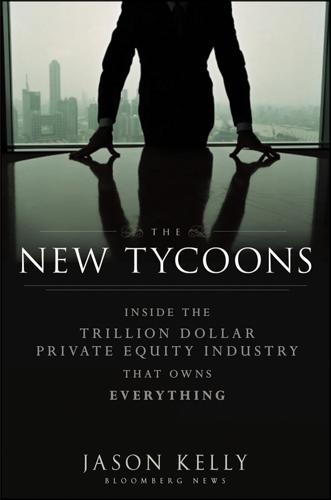
The New Tycoons: Inside the Trillion Dollar Private Equity Industry That Owns Everything
by
Jason Kelly
Published 10 Sep 2012
Jimmy Lee was eager to win clients and build a book of business at Chemical, and later Chase’s investment bank. He knew he wasn’t Schwarzman’s first call (because he’d told him so). So he decided to make himself indispensable as Blackstone’s financier and later adviser on M&A. Lee was playing in an area once dominated by Drexel Burnham Lambert Inc., specifically by Michael Milken. It was Milken, a Drexel trader, who pioneered the use of high-yield, noninvestment-grade bonds (aka junk bonds), often in hostile takeovers. Drexel and Milken helped fuel the surge of mergers and acquisitions, including leveraged buyouts, during the 1980s. Milken was indicted for securities violations tied to insider trading, triggering Drexel to file for bankruptcy in 1990.1 While that eliminated a major provider of debt for LBOs, Drexel was a de facto training ground for a number of men who went on to create or work at major private-equity and investment firms.
…
See Limited Partners (LPs) LVMH Moet Hennessy Louis Vuitton Madison Dearborn Major, John Manor Care Marchick, David Mark, Joncarlo Markell, Jack Marriott, Bill, Jr. Marriott, Bill, Sr. Mathias, Ed: Carlyle Group and on Conway and D’Aniello Mayer, Michael McKillickan, Rebecca McKinsey & Co. Mehlman, Kenneth Mergers and Acquisitions (M & A) activity Merrill Lynch Metropolitan Museum of Art Meyer, Andre Mezzanine loans Michelson, Michael Milken, Michael Miller, Bill Miranda, Javier Moelis & Company MOIC. See Multiple of invested capital (MOIC) Monaghan, Thomas Monitoring fees Moore, Michael Moran, Garrett Morelli, Vincenzo Morgan Stanley Morris, John Motorola Mount Sinai Hospital Moynihan, Brian Mubadala Development Company Mulroney, Brian Multiple of invested capital (MOIC) Murray, Steve Nassetta, Chris National Venture Capital Association Nature Conservancy Navab, Alexander Nelson, Dean: as head of Capstone KKR recruitment of Regal Cinemas deal New Jersey, commitment to Blackstone New Jersey Investment Council New Jersey pension plan Newman, Arthur Newman, Howard Newsweek New York City Investment Fund New Yorker New York’s Museum of Modern Art New York Times New York University Law Review Nexio Noninvestment-grade bonds (junk bonds) Norris, Steven Norton, Ed Novy-Marx, Robert Nunnelly, Mark Nuttall, Scott Obama Administration Occupy Wall Street movement OMG.
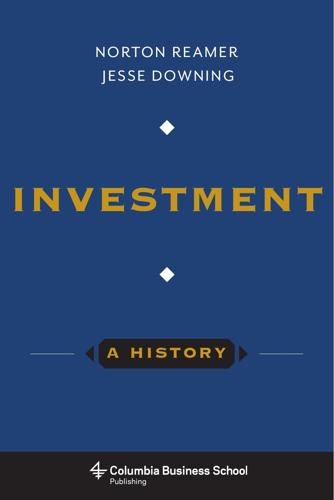
Investment: A History
by
Norton Reamer
and
Jesse Downing
Published 19 Feb 2016
The real secret to his wealth, though, was not brilliant utilization of a merger arbitrage strategy; it was instead a strategy as old as time—to play “hardball” to stay ahead.133 Boesky consistently relied on insider information and failed to disclose who else was working with him to influence the market. Figures like Dennis Levine, Michael Milken, and Martin Siegel, whose firms had access to information—for example, by virtue of being retained in an advisory capacity on merger and acquisition deals—clandestinely and illegally worked with Boesky to pass along information on what to purchase so that they could share in the profits.134 Illustrating how Boesky’s schemes worked, an early deal Martin Siegel fed Boesky involved Diamond Shamrock, a chemical company that was at the time interested in expanding its operations in oil and planning to do so through an acquisition.
…
Boesky did precisely that and made millions when the deal eventually went through.135 The SEC became wise to all of these ostensible acts of prescience by Boesky when it charged Dennis Levine, an investment banker at Drexel Burnham Lambert in New York, with insider trading in 1985.136 Levine cooperated, and the SEC was made aware of Boesky’s involvement.137 Boesky ended up getting a generous deal from the SEC in return for his help turning their attention to what the SEC seemed to regard as an even bigger fish: Michael Milken, also at Drexel Burnham Lambert. In the end, though he did pay $100 million for his transgressions, Boesky was even allowed to sell off his investments, saving him a great deal of money.138 He was sentenced to only three years of jail time.139 Boesky managed to receive minimal punishment largely because of his cooperation.
…
The law allowed the SEC to pursue treble damages, or three times the amount of money gained by trades based on inside information. The law came during the 1980s, a difficult decade marked by financial improprieties of many kinds. It was these laws that would aid in making examples of people like Ivan Boesky, Dennis Levine, and Michael Milken, who were extracting enormous fortunes from illicit informational edges and manipulation.163 CONCLUSION The United States has made remarkable progress in democratizing access to a fair market by overhauling the laws and regulations against market manipulation, trading on inside information, and fraud.
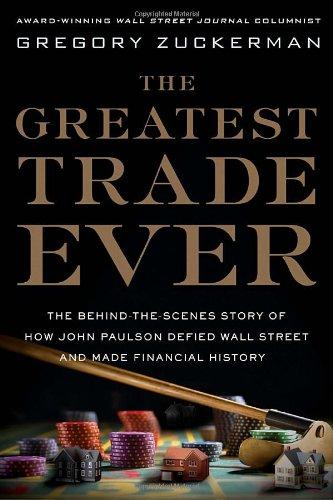
The greatest trade ever: the behind-the-scenes story of how John Paulson defied Wall Street and made financial history
by
Gregory Zuckerman
Published 3 Nov 2009
By buying shares of companies being acquired, and selling short companies making acquisitions, Gruss was able to generate profits that largely were shielded from stock-market fluctuations. The ideal Gruss investment had limited risk but held the promise of a potential fortune. Marty Gruss drilled a maxim into Paulson: “"Watch the downside; the upside will take care of itself.”" Paulson’'s buyout business never really took off, however. The 1989 indictment of junk-bond king Michael Milken and a slowing economy made it hard to finance buyouts, and Martin Gruss seemed distracted, perhaps due to a recent second marriage. Soon he and Paulson parted company. Despite Paulson’'s fierce ambition and his love of making money and landing big deals, other urges were distracting the thirty-five-year-old.
…
But they proved so unwilling to shell out money at the start of a trade that Simon and his team gave up, unable to sell the fund, thereby losing a chance to undertake the same trades as Paulson. Even the most successful investors shun negative carry; it is like garlic to vampires. In the 1980s, when junior traders suggested that junk-bond king Michael Milken short especially risky bonds, he scoffed at the notion of paying high interest on the debt while waiting for it to fall in price. Trades that lock in instant payments in the hopes of a payday someday in the future make even the likes of George Soros queasy. “"I don’'t know if I would have done it myself, if I was in [Paulson’'s] shoes,”" Soros says.
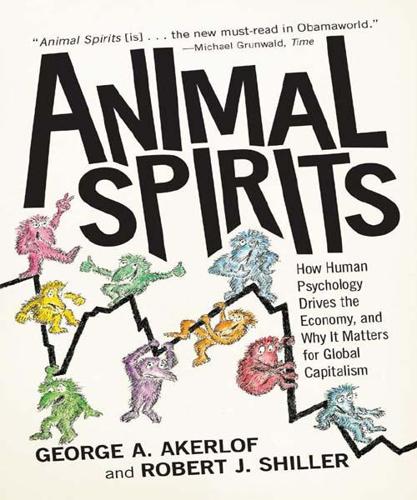
Animal Spirits: How Human Psychology Drives the Economy, and Why It Matters for Global Capitalism
by
George A. Akerlof
and
Robert J. Shiller
Published 1 Jan 2009
The S&Ls were not worth anything as going enterprises—but they were worth a great deal for whatever sweetheart deals their owners could make. Such deals could involve real estate, with receipt of kickbacks from developers, or they could involve the purchase of risky but high-paying assets. The most inventive user of S&L sweetheart money was the junk bond impresario Michael Milken. Up until the 1980s the prevailing wisdom among economists had been that it was very difficult, if not impossible, to engage in a profitable hostile takeover bid. If the firm was undervalued before the bid was made, the bid itself would cause it to rise in value. By the time the deal was closed, the surplus for the bidder would be insufficient to pay the transaction costs of the takeover.10 But Milken found a way to drastically reduce the cost of takeovers.
…
Risk, Uncertainty and Profit. New York: Houghton Mifflin. Knoppik, Christoph, and Thomas Beissinger. 2003. “How Rigid Are Nominal Wages? Evidence and Implications for Germany.” Scandinavian Journal of Economics 105(4):619–41. Kornbluth, Jesse. 1992. Highly Confident: The Crime and Punishment of Michael Milken. New York: William Morrow. Krueger, Alan B., and Lawrence H. Summers, 1988. “Efficiency Wages and the Inter-Industry Wage Structure.” Econometrica 56(2):259–93. Krueger, Alan B., and Diane M. Whitmore. 1999. “The Effect of Attending a Small Class in the Early Grades on College-Test Taking and Middle School Test Results: Evidence from Project STAR.”
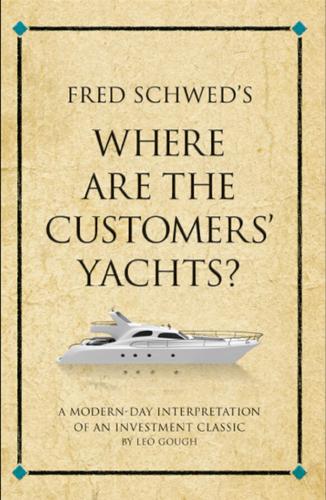
Fred Schwed's Where Are the Customers' Yachts?: A Modern-Day Interpretation of an Investment Classic
by
Leo Gough
Published 22 Aug 2010
Here are just a few of the prominent characters from the Rogues’ Gallery during the last few years: Bernie Madoff, arrested in December 2008 for running a fraudulent investment scheme that collapsed owing more than 60 billion dollars; Bernard Ebbers, former CEO of Worldcom, a large telecommunications company, jailed in 2005 for false financial reporting that resulted in a loss of some 11 billion dollars to investors; Jack Grubman, a stock analyst who was fined and banned for life from the securities industry in 2004 for producing over-optimistic reports and ratings on some of the companies he followed; David Walsh, founder of Bre-X Mining, which went bankrupt in 1997 after it was discovered that a gold mine it owned in Borneo had been fraudulently ‘salted’ with gold; Michael Milken, father of the junk bond industry, convicted of insider trading in 1989. The list just goes on and on, but you get the idea: yes there are crooks around in the stock market – lots of them! HERE’S AN IDEA FOR YOU… Your best defence from being cheated is information. Read and learn about how financial frauds happen, and inoculate yourself against the disease of gullibility. 33 AVOIDING THE BIG COLLAPSES ‘… an effort to put a little truth into the falsest text in the English language: “God tempereth the wind to the shorn lamb”.
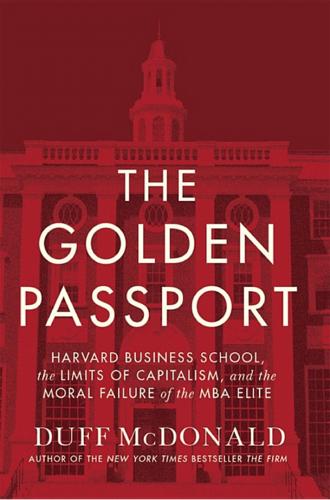
The Golden Passport: Harvard Business School, the Limits of Capitalism, and the Moral Failure of the MBA Elite
by
Duff McDonald
Published 24 Apr 2017
Enjoying the controversy, Thiel wandered into the realm of gross generalization when addressing a conference of gay MBAs in San Francisco. There he made the claim that MBAs only buy into innovations after they’ve peaked. They were late to the junk bond boom, he pointed out, only arriving en masse in 1989, a year before Michael Milken went to jail. None of them went near Silicon Valley until 1999, he added, at which point “[graduates of] HBS perfectly timed the dot-com bubble.”1 It was all very entertaining, especially for non-MBAs. But it was also wrong. While Thiel was obviously generalizing about the herd behavior of MBAs, the experience of many HBS graduates, in particular, undercut those generalizations at their source.
…
But a change in behavior almost always means giving up an associated way of thinking, and giving up a way of thinking is almost always a painful process. Providing students with an opportunity to learn material that fundamentally changes the way they see the world generates confusion, discomfort, and controversy.”24 And get a load of this gem of an argument: “As an example of the confrontation of emotions with reason, we use the case of Michael Milken and Drexel. Who, we ask our students, has created more value in this century than Milken? Was Milken overcompensated for that effort (even after legal penalties) by his contract with Drexel, which gave him a $50,000 salary and approximately one-third of the profits of the division he founded at Drexel?
…
From there, everything snowballed. Levine implicated Ivan F. Boesky, an arbitrageur, who then implicated Martin Siegel (’71), formerly of Kidder Peabody but then working for Drexel Burnham Lambert. And here’s a fun fact for your next cocktail party: It was insider trading in the shares of none other than Enron, which Michael Milken had helped finance, that tipped investigators off to Levine in the first place.25 A number of HBS graduates were ensnared in the ensuing investigation, including Siegel, Paul Bilzerian (’77), and Ira Sokolow (’81). Fred Joseph (’63) was CEO of Drexel when it was brought to its knees during the scandal, although he denied any involvement in the insider trading schemes and claimed he was only guilty of “surprising naïveté.”
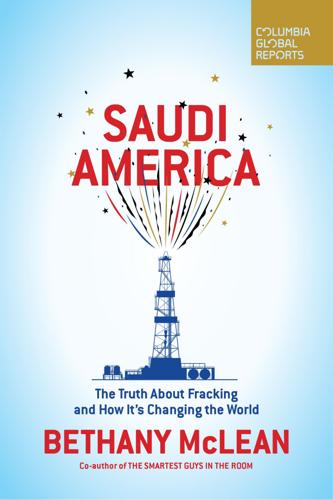
Saudi America: The Truth About Fracking and How It's Changing the World
by
Bethany McLean
Published 10 Sep 2018
He was, in many ways, the embodiment of a transformation that has changed the face of not just the oil and gas industries but of geopolitics as well. The contradictions and questions in McClendon’s story continue to reverberate across the industry he did so much to create. You might think of McClendon as a bit of J. R. Ewing, the fictional character in the television series Dallas, mixed with Michael Milken, the junk bond king who pioneered an industry and arguably changed the world, but spent several years in prison after pleading guilty to securities fraud. Over and over, I heard the same refrain: “Aubrey epitomizes everything we’re talking about.” Unlike many others who come from nothing and make their fortunes in the oil patch, McClendon, who was born on July 14, 1959 in Oklahoma City, was oil industry royalty.
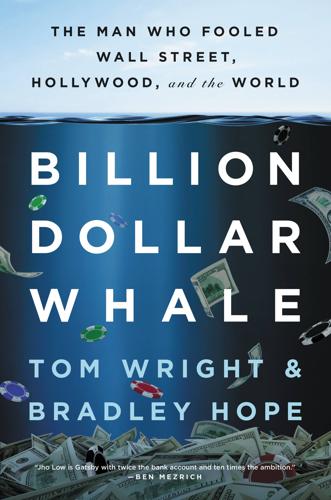
Billion Dollar Whale: The Man Who Fooled Wall Street, Hollywood, and the World
by
Tom Wright
and
Bradley Hope
Published 17 Sep 2018
Malaysia’s economy was growing at over 5 percent annually, powered by the export of commodities like palm oil, as well as garments, computer chips, and electronic devices. Attracted by the hot growth, foreign investors poured money into Malaysian stocks and bonds. But there was no oversight. Insiders regularly broke securities laws, as if taking their cues from the excesses of 1980s figures such as Michael Milken, the U.S. junk bond king, and insider trader Ivan Boesky. Malaysians who knew how to play the system became incredibly rich, while minority shareholders lost out. People who worked with Larry considered him charming and a wheeler-dealer, albeit with a lazy streak, preferring drinking late in nightclubs to work, but he benefited nevertheless from a run-up in the garment company’s stock.
…
By the time the scheme imploded in late 2008, Madoff had amassed a paper fortune of $800 million, but most of this was the value of his market-making business; the amount he personally stole was a fraction of the amount lost. Low’s mark—the little-known 1MDB, a Malaysian government fund—wasn’t asking for any money back and it wouldn’t so long as he controlled it through his proxies. Low also wasn’t like junk-bond king Michael Milken, who had amassed a personal fortune in the 1980s before going to prison for violating securities laws. The Malaysian had simply taken hundreds of millions of dollars. The excesses of Madoff or the 1980s would seem prosaic compared to the multiyear spending spree on which Low was about to embark.
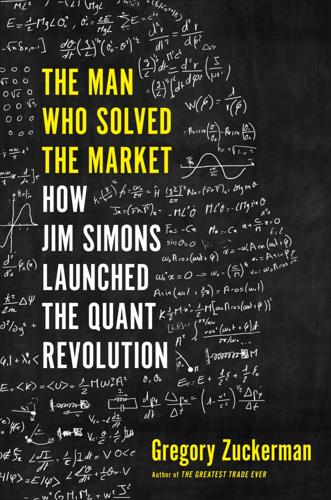
The Man Who Solved the Market: How Jim Simons Launched the Quant Revolution
by
Gregory Zuckerman
Published 5 Nov 2019
The unquenchable thirst of traders, bankers, and investors for market-moving financial news unavailable to the general public—known as an information advantage—helped fuel Wall Street’s gains. Tips about imminent corporate-takeover offers, earnings, and new products were coin of the realm in the twilight of the Reagan era. Junk-bond king Michael Milken pocketed over one billion dollars in compensation between 1983 and 1987 before securities violations related to an insider trading investigation landed him in jail. Others joined him, including investment banker Martin Siegel and trader Ivan Boesky, who exchanged both takeover information and briefcases packed with hundreds of thousands of dollars in neat stacks of $100 bills.1 By 1989, Gordon Gekko, the protagonist in the movie Wall Street, had come to define the business’s aggressive, cocksure professionals, who regularly pushed for an unfair edge.
…
Skeptics sniffed—one told the Journal that “the real investment world is too complicated to be reduced to a model.” Yet, by the late 1980s, Thorp’s fund stood at nearly $300 million, dwarfing the $25 million Simons’s Medallion fund was managing at the time. But Princeton/Newport was ensnared in the trading scandal centered on junk-bond king Michael Milken in nearby Los Angeles, ending any hopes Thorp held of becoming an investment power. Thorp never was accused of any impropriety, and the government eventually dropped all charges related to Princeton/Newport’s activities, but publicity related to the investigation crippled his fund, and it closed in late 1988, a denouement Thorp describes as “traumatic.”

King Icahn: The Biography of a Renegade Capitalist
by
Mark Stevens
Published 31 May 1993
Of all the forces reshaping the business community in the eighties, none had a greater impact than Drexel. The product of a 1971 merger that linked two small, struggling securities firms—Burnham & Company and Drexel Firestone—the combined entity would rise to power on the strength of a young Wharton School graduate, Michael Milken, who had launched his business career with Drexel Firestone. Fascinated by a now-classic study of corporate bonds (conducted by W. Braddock Hickman), Milken came to the conclusion that bonds carrying low ratings from Moody’s or Standard & Poor’s were not the high risk instruments many thought them to be.
…
But in his heart Icahn knew the answer. As he surveyed the Wall Street landscape in the new decade of the nineties, he saw carnage, defeat, and despair where just a few years before there had been boundless opportunity and staggering profits. Just like that, Drexel Burnham was gone. Ivan Boesky was gone. Michael Milken was gone. Dennis Levine was gone. Trump’s empire had come unglued. Once rich and arrogant lawyers and investment bankers were scrounging for clients. Increasingly, Icahn talked of the dangers of an economic catastrophe. He made a point of reading The Great Depression of 1990. In private, he speculated that real estate and the stock market might well be on the verge of collapse.
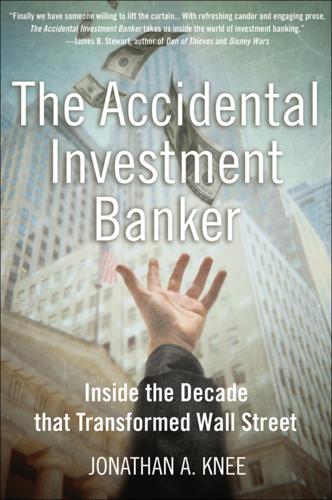
The Accidental Investment Banker: Inside the Decade That Transformed Wall Street
by
Jonathan A. Knee
Published 31 Jul 2006
In place of this ideal a culture of contingency emerged, a sense not only that each day might be your last, but that your value was linked exclusively to how much revenue was generated for the firm on that day—regardless of its source. At the height of the boom in 1999, I had recently left Goldman Sachs for Morgan Stanley. Once white-shoe Morgan was now locked in battle with relative upstart Donaldson, Lufkin and Jenrette to claim the mantle of junk bond king, up for grabs since the final implosion of Michael Milken’s Drexel Lambert in 1990. The popularization of junk bonds by Drexel had made the debt markets available to all manner of highly leveraged speculative companies—companies, in short, that were the antithesis of Morgan Stanley’s once-pristine client list. Morgan’s primary weapon in this war was its willingness to sponsor debt for “emerging” telecom companies that required huge capital investments.
…
DLJ was founded by its named partners in 1959 and focused primarily on underwriting smaller, less-established companies with greater growth prospects than the blue chip corporations the more established investment banks served. As late as the 1980s, DLJ was still a relatively modest firm, although it had made a successful early push into the controversial areas of establishing principal equity funds with its own capital. But after the bankruptcy of Michael Milken’s Drexel Burnham in 1990, DLJ would emerge by the mid-1990s to take the mantle of leading junk bond house. Junk bonds are issued by companies that are too small, too young, too leveraged, or otherwise seen as too risky to attract more traditional and less expensive forms of financing. Junk bonds are defined as those that receive a rating from Moody’s or S&P that designates them as “speculative” credits as contrasted to the “investment grade” ratings earned by larger, less leveraged, more established companies.

The Price of Time: The Real Story of Interest
by
Edward Chancellor
Published 15 Aug 2022
The Great Depression kicked off a multi-decade decline in inequality, what economists refer to as the Great Compression. The turning point came in the early 1980s, as falling interest rates inaugurated a decades-long bull market in stocks and bonds. Wall Street’s fortunes recovered. The leverage buyout industry emerged, minting fortunes for the founders of private equity firms and junk bond issuers, such as Michael Milken of Drexel Burnham Lambert. Interest rates continued declining in the 1990s. Over the course of that decade, ‘inequality went up mainly because of rising stock prices, asset valuations and the incomes drawn from stock option realizations and capital gains, as well as wages and salaries paid in sectors that were financed by new equity.’21 During the Dotcom bubble changes in income inequality were correlated with movements in the Nasdaq index of technology stocks, with most income gains clustered around Silicon Valley and Wall Street, the epicentres of the bubble.22 The final stage of the bubble occurred after the Fed’s rate cut in the fall of 1998.
…
Graham, Benjamin and Dodds, David, Security Analysis: Principles and Technique [1940] (New York, 2009). Grant, James, Bagehot: The Life and Times of the Greatest Victorian (New York, 2019). Grant, James, Grant’s Interest Rate Observer (2008–2021). Grant, James, Money of the Mind: Borrowing and Lending in America from the Civil War to Michael Milken (London, 1992). Grant, James, The Forgotten Depression: 1921: The Crash That Cured Itself (New York, 2014). Grantham, Jeremy, ‘This Time Seems Very, Very Different (Part 2 of Not With a Bang but a Whimper – A Thought Experiment)’, GMO Quarterly Letter, April 2017. Grantham, Jeremy, ‘Time to Wake Up: Days of Abundant Resources and Falling Prices are Over Forever’, GMO Quarterly Letter, April 2011.
…
Martin Fridson, It Was a Very Good Year: Extraordinary Moments in Stock Market History (New York, 1998), p. 50. 19. Anderson, Economics and Public Welfare, p. 147. 20. Fridson, It Was a Very Good Year, p. 64. 21. Ibid. 22. Anderson, Economics and Public Welfare, p. 209. 23. James Grant, Money of the Mind: Borrowing and Lending in America from the Civil War to Michael Milken (London, 1992), pp. 184–5. 24. Perry Mehrling, The New Lombard Street: How the Fed Became the Dealer of Last Resort (Princeton, 2011), pp. 41–2. 25. See Irving Fisher, Appreciation and Interest [1896] (New York, 1908). 26. See Homer Hoyt, One Hundred Years of Land Values in Chicago: The Relationship of the Growth of Chicago to the Rise of Its Land Values, 1830–1933 [1933] (Washington, DC, 2000); also Herbert D.
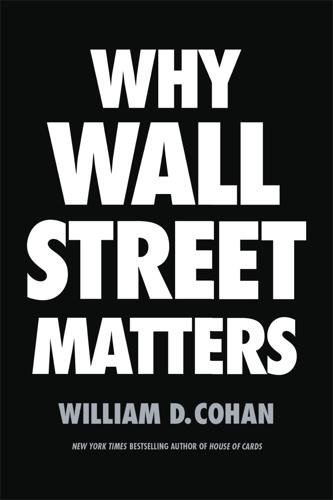
Why Wall Street Matters
by
William D. Cohan
Published 27 Feb 2017
“People don’t get smarter about things that get as basic as greed,” Buffett once said. “You can’t stand to see your neighbor getting rich. You know you’re smarter than he is, but he’s doing all these [crazy] things, and he’s getting rich…so pretty soon you start doing it.” Another Wall Street revolutionary was Michael Milken. Milken’s innovation was to realize—as a graduate student at the Wharton School of Business in the 1970s—that investors could make more money, on a risk-adjusted basis, from buying the bonds issued by companies with less-than-stellar credit ratings than they could by investing in the bonds of AAA-rated companies.
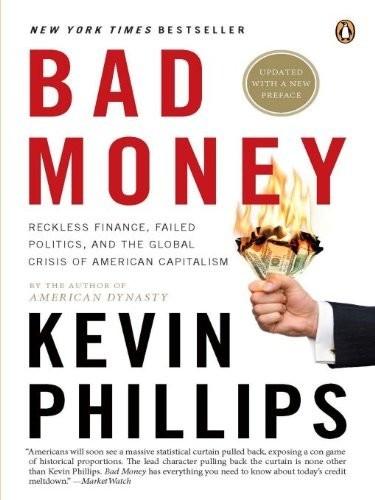
Bad Money: Reckless Finance, Failed Politics, and the Global Crisis of American Capitalism
by
Kevin Phillips
Published 31 Mar 2008
Bankers and savings and loan executives, handed new investment latitude by early 1980s deregulation, got our permissive quarter century off to a raucous start with an orgy of bad real estate loans, scams, financial toga parties, and Texas-sized insolvencies that led, beginning in 1989, to a $200 billion federal bailout. Ambitious financiers, some of whom also wound up in jail, explored grander new frontiers of debt issuance. Michael Milken pioneered high-yield or “junk” bonds for lower-rated corporate borrowers until his firm, Drexel Burnham, failed in 1991. Raiders like Henry Kravis, T. Boone Pickens, and Ivan Boesky made a household expletive out of the term “leveraged buyout”—the lucrative process by which companies were taken over, stripped, loaded up with debt, and sold off.
…
Episode number three involved the Federal Reserve Board’s early- 1990s bailout of junk (high-yielding) bonds through sharp interest-rate reductions that took the federal funds rate down to twenty-year lows. Some of these bonds were issued to raise money for weaker corporate borrowers, but others funded the leveraged buyouts that became so notorious. Such bonds also lost cachet as Michael Milken of Drexel Burnham, the architect and promoter of the junk bond concept and distribution system, was indicted on ninety-eight counts in 1989, eventually plea-bargained, went to jail, and paid a fine of $600 million. Drexel itself filed for bankruptcy in 1990. Let me hypothesize: If these innovations and misadventures—prototypical “bad money”—hadn’t been bailed out, the recession of 1990- 91 would probably have deepened into the multiyear crisis of 1990-93 or some such.
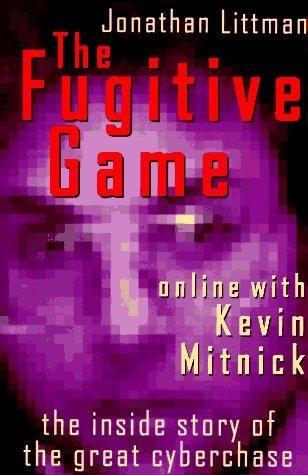
The Fugitive Game: Online With Kevin Mitnick
by
Jonathan Littman
Published 1 Jan 1996
Today, the automated Sprint operator is offering a collect call from Kevin Poulsen at Mitnick's old haunt, the Los Angeles Metropolitan Detention Center. Poulsen's working on his fourth year behind bars, and he's still facing another federal case. He sounds optimistic, and frankly I don't understand. Because he's been awaiting trial, Poulsen's never enjoyed a federal camp like the Ivan Boeskys and Michael Milkens of the 1980s. Kevin Poulsen's four years in the 1990s have been hard time. He hasn't studied anything, worked on a degree, or picked up a hobby. He smokes, reads a lot, and beats everyone at Ping-Pong and chess. He has no plans because he can't survive inside dreaming about the future when he doesn't know if he's got one.
…
Kevin Mitnick didn't successfully pocket millions of dollars. He pranked who knows how many people and illegally copied a big corporation's software. He got what he considers torture as his punishment. Mitnick was punished because of what he represented, and, I suspect, because he couldn't afford the kind of lawyers that work for the likes of Michael Milken and Ivan Boesky. But I'm not convinced of the great conspiracy Mitnick keeps harping on. I think Mitnick is cyberspace enemy number one for simpler reasons. Because he or De Payne keep pranking the FBI. Because either the Justice Department or the Assistant U.S. Attorney in California decided he would make a great scapegoat for a much bigger problem they can't control.
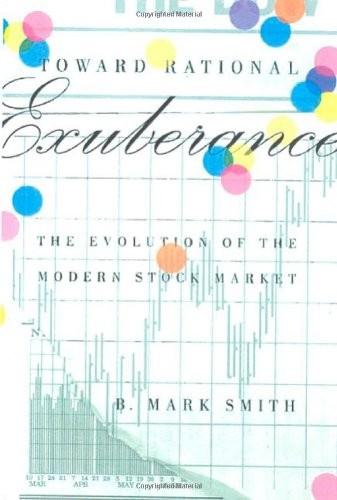
Toward Rational Exuberance: The Evolution of the Modern Stock Market
by
B. Mark Smith
Published 1 Jan 2001
Boesky told prosecutors about the arrangement he had made with Siegal, which called for Boesky to pay Siegal a secret cash “bonus” each year based on the value of the information Siegal provided. As a result, Siegal was arrested. But the investigators wanted more than just Siegal. They had reason to believe that Boesky had had improper dealings with one of the most powerful figures on Wall Street, a man who had revolutionized the way the Street did business. That man was Michael Milken. Michael Milken, of Drexel Burnham Lambert, was the apostle of what had become known as the junk bond revolution. By outward appearances he was hardly a natural salesman. Obviously shy, of lean stature, and wearing a toupee with curly brown hair that hid his premature baldness, Milken looked more like a meticulous accountant than a flamboyant promoter.
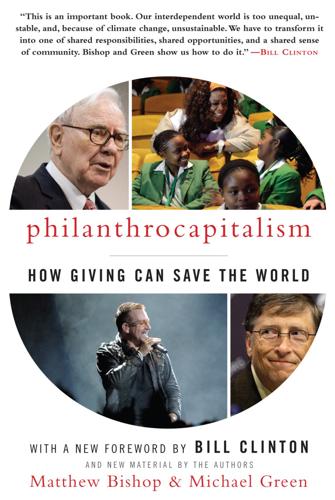
Philanthrocapitalism
by
Matthew Bishop
,
Michael Green
and
Bill Clinton
Published 29 Sep 2008
But this is changing, reports Handy in The New Philanthropists: a European tycoon who once would have said that paying taxes was enough to fulfill his responsibilities is nowadays more likely to give back as well. The causes that the superrich feel a responsibility to address often start with a personal experience. This was certainly true of disgraced-but-still-rich former “junk bond king” Michael Milken. The man who is often seen as the epitome of 1980s financial greed suffered from prostate cancer in the 1990s and has since given $750 million to fight the disease. The Larry King Cardiac Foundation was inspired by the veteran interviewer’s quintuple heart bypass in 1987. New York mayor Michael Bloomberg managed to give up his addiction to smoking, which has inspired him to dedicate his foundation to eradicating smoking everywhere.
…
Venture capitalist John Doerr was one of the backers of the New Schools Venture Fund, launched in 1998 to give to or invest in nonprofit and for-profit education entrepreneurs, helping them grow their organizations to scale and connect their work to broader systems change. Since the mid-1980s, Michael Milken’s Milken Family Foundation has recognized thousands of outstanding teachers by giving them $25,000 Educator Awards. The achievements of the winners are widely publicized in an attempt to encourage talented people to teach and generally raise the overall standards of the profession. Across the pond, several philanthropists have given money to start new city academy schools in Britain—a sort of equivalent to U.S. charter schools.
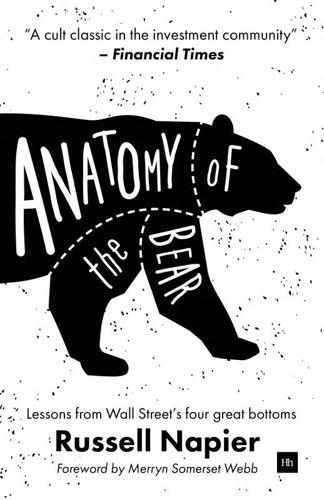
Anatomy of the Bear: Lessons From Wall Street's Four Great Bottoms
by
Russell Napier
Published 18 Jan 2016
Endnotes 52 John Brooks, Once In Golconda – A True Drama of Wall Street 1920–1938 [return to text] 53 Address to the American Liberty League, 25 January 1936, Mayflower Hotel. Washington DC [return to text] 54 Marriner Eccles, Beckoning Frontiers – Public and Personal Recollections [return to text] 55 Wall Street Journal, 2 January 1946 [return to text] 56 James Grant, Money of the Mind: Borrowing and Lending in America From the Civil War to Michael Milken [return to text] 57 Address at Westminster College, Fulton, Missouri, 5 March 1946 [return to text] 58 President Truman’s address to Congress, 12 March 1947 [return to text] Structure of the market in 1949 On one side of the room were the doors of offices; the other side was covered with tremendous pictures of factories and ships and railroads.
…
Geisst, Wall Street: A History: From its Beginnings to the Fall of Enron (Oxford University Press, 2004) Benjamin Graham, The Intelligent Investor (Harper & Row 4th Revised Ed., 1973) James Grant, Bernard M. Baruch, The Adventures of a Wall Street Legend (John Wiley & Sons, 1997) James Grant, Money of the Mind: Borrowing and lending in America from the Civil War to Michael Milken (Noonday Press, 1994) William C Greenough, A New Approach to Retirement Income (CFA, New York, 1951) William Greider, Secrets of the Temple, How the Federal Reserve Runs the Country (Touchstone, 1987) Alex Groner and the Editors of American Heritage and Business Week, The American Heritage History of American Business and Industry (American Heritage Publishing, 1972) William Peter Hamilton, The Stock Market Barometer: A Study of Its Forecast Value Based on Charles H.
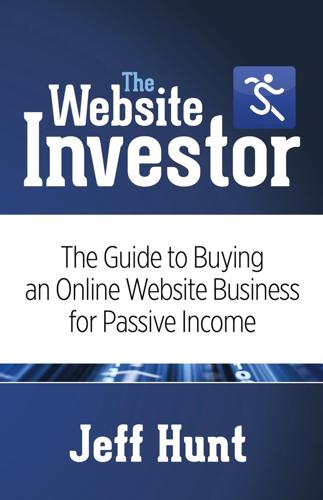
The Website Investor: The Guide to Buying an Online Website Business for Passive Income
by
Jeff Hunt
Published 17 Nov 2014
If you are selling a particular shoe, Amazon might show your ad to buyers who have opened a product page for that shoe or other items connected to what you are selling. “My experience indicates that most people who’ve accumulated a great deal of wealth haven’t had that as their goal at all. Wealth is only a by-product, not the original motivation.” —Michael Milken Another way to work with Amazon is to sell on Amazon. That means you offer products that Amazon is either already selling or not selling. If they already sell the product, there is an existing sales page with images and sales copy about the product. If that doesn’t exist, you create your own product page.

The End of Wall Street
by
Roger Lowenstein
Published 15 Jan 2010
Eager lenders such as Countrywide and New Century were hailed as suburban Johnny Appleseeds, planting a mortgage in every backyard. Countrywide’s cofounder, Angelo Mozilo, son of an Italian immigrant, was feted for helping to democratize credit. In Mozilo’s view, every citizen was entitled to a mortgage. In this, he was echoing Michael Milken, who had earlier preached the gospel that every corporation—not just sniffy blue chips—should have access to Wall Street. The Mozilos and the Milkens answered to a distinctly American yearning for a capitalism that was egalitarian, or at least broadly accessible. It was a cross between the Puritan ideal of self-improvement—uplift through work—and the more forgiving siren of populism: uplift (or adjustable mortgages, at any rate) as an unlabored entitlement.
…
Though two of his sons, both senior executives, fled the company—one when Hank lost confidence in him, the other because his father was so difficult—the staff held him in terrified awe. His diminutive stature seemed to heighten his aura, as though his power emanated from an invisible source. In 2002, just as the mortgage boom was heating up, Greenberg tapped Joseph Cassano, a tough-talking son of a Brooklyn cop and a former colleague of Michael Milken’s, to run Financial Products. Under Cassano, revenue soared, ultimately topping $3 billion a year.9 The street-smart Cassano, who had joined AIG in 1987, when the trading unit was formed, had an instinct for finance. He used the parent corporation’s triple-A balance sheet to procure cheap credit for the derivatives operation in London—a business that, had it stood alone, would have been regarded as highly suspect.
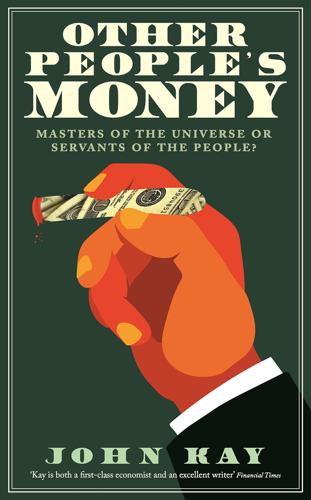
Other People's Money: Masters of the Universe or Servants of the People?
by
John Kay
Published 2 Sep 2015
This occasion is widely described as the beginning of the application of shareholder value principles in American business: and as he implemented this strategy over the following two decades, Welch became America’s most admired business leader.32 In 1965 an American economist, Henry Manne, had coined the phrase ‘the market for corporate control’.33 The right to manage a corporation was an asset that could be bought and sold. Neglect of ‘shareholder value’ exposed managers to the threat of hostile takeovers. In the 1980s this threat intensified when Michael Milken of Drexel Burnham Lambert invented ‘junk bonds’, and found institutional investors to subscribe for them. These securities, which offered high yields and acknowledged high risks, enabled raiders to threaten even the largest company. The contested takeover in 1988 of RJR Nabisco, the tobacco and food conglomerate, is described by Bryan Burrough and John Helyar in their book Barbarians at the Gate: The Fall of RJR Nabisco, perhaps the best business book of that decade.34 Burrough and Helyar end their book with the plaintive question ‘But what did it have to do with business?’
…
Within three months, all the directors were behind bars. Richard Whitney, president of the New York Stock Exchange, spent over three years in New York’s fearsome Sing Sing maximum-security gaol. Even in the early 1990s Charles Keating, the most notorious fraudster in the deregulation of US thrifts, and Michael Milken, the inventor of junk bonds, went to prison. Scapegoats for the new economy bubble were less harshly treated. The SEC devoted little energy or resource to identifying wrongdoing, and such cases were brought to light through the dogged investigations of now disgraced former New York Attorney General Eliot Spitzer.
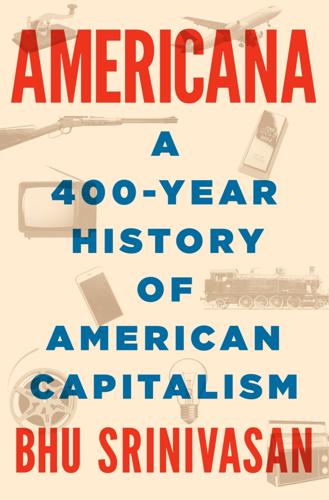
Americana: A 400-Year History of American Capitalism
by
Bhu Srinivasan
Published 25 Sep 2017
In this industrial funeral procession, Wall Street assumed the roles of underwriter and undertaker. • • • AT THE HEIGHT of 1980s finance, the epicenter of Wall Street was at the corner of Rodeo Drive and Wilshire Boulevard in Beverly Hills. On one of the floors of the nondescript building, sitting at an X-shaped desk with traders all around him, Michael Milken operated in a once-sleepy backwater of the corporate bond market. His salary at his peak in the eighties was $550 million in cash for one year’s work. The work, in his case, required being in total control of the American junk bond market, the fuel that had transformed corporate America into a giant chessboard.
…
There was only one small area of distinction. Some companies were riskier to lend to than others. For investors to buy bonds of a less creditworthy company, they simply required a higher rate of interest to justify the risk, just as individuals with poor credit ratings pay higher rates. Not much was ever made of this until Michael Milken arrived on Wall Street. As an undergrad at Berkeley in the 1960s, Milken had come across a study by an economist named Walter Braddock Hickman. In a look at nearly every corporate bond that had existed between 1900 and 1945, Hickman’s research revealed that a diversified portfolio of the lowest-rated bonds, the bonds that seemed to present the most risk, returned substantially more than a portfolio of middle-grade bonds.
…
Whereas the start-up entrepreneur was starting with a blank slate to build new things, the financial entrepreneur saw himself as playing a vital, natural role in cleaning up the carcasses of old things in corporate America. There was some truth to this. Yet the logic of the argument was alone not enough. Just as Silicon Valley entrepreneurs needed venture capital, their equivalents on Wall Street needed their own specialized financing. The best and the brightest among them looked west to Beverly Hills, where Michael Milken could raise billions of dollars when the need arose, junk bonds becoming the pirate ship on which the corporate raiders sailed. • • • IF THERE WAS A COMPETITION to find a real-life equivalent to Larry the Liquidator, who relished the persona of financial agitator in the 1980s, the award would have gone to Carl Icahn.

Americana
by
Bhu Srinivasan
In this industrial funeral procession, Wall Street assumed the roles of underwriter and undertaker. • • • AT THE HEIGHT of 1980s finance, the epicenter of Wall Street was at the corner of Rodeo Drive and Wilshire Boulevard in Beverly Hills. On one of the floors of the nondescript building, sitting at an X-shaped desk with traders all around him, Michael Milken operated in a once-sleepy backwater of the corporate bond market. His salary at his peak in the eighties was $550 million in cash for one year’s work. The work, in his case, required being in total control of the American junk bond market, the fuel that had transformed corporate America into a giant chessboard.
…
There was only one small area of distinction. Some companies were riskier to lend to than others. For investors to buy bonds of a less creditworthy company, they simply required a higher rate of interest to justify the risk, just as individuals with poor credit ratings pay higher rates. Not much was ever made of this until Michael Milken arrived on Wall Street. As an undergrad at Berkeley in the 1960s, Milken had come across a study by an economist named Walter Braddock Hickman. In a look at nearly every corporate bond that had existed between 1900 and 1945, Hickman’s research revealed that a diversified portfolio of the lowest-rated bonds, the bonds that seemed to present the most risk, returned substantially more than a portfolio of middle-grade bonds.
…
Whereas the start-up entrepreneur was starting with a blank slate to build new things, the financial entrepreneur saw himself as playing a vital, natural role in cleaning up the carcasses of old things in corporate America. There was some truth to this. Yet the logic of the argument was alone not enough. Just as Silicon Valley entrepreneurs needed venture capital, their equivalents on Wall Street needed their own specialized financing. The best and the brightest among them looked west to Beverly Hills, where Michael Milken could raise billions of dollars when the need arose, junk bonds becoming the pirate ship on which the corporate raiders sailed. • • • IF THERE WAS A COMPETITION to find a real-life equivalent to Larry the Liquidator, who relished the persona of financial agitator in the 1980s, the award would have gone to Carl Icahn.
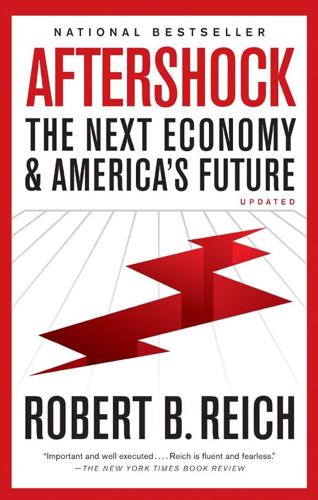
Aftershock: The Next Economy and America's Future
by
Robert B. Reich
Published 21 Sep 2010
In the 1980s, irresponsible gambles by some savings-and-loan banks cost taxpayers $125 billion; one such bank was owned by Charles Keating, who “donated” $300,000 to five U.S. senators, thereby greasing the skids with federal regulators. Insider trading scandals involving junk-bond kings including Ivan Boesky and Michael Milken did their damage. The BCCI money-laundering scandal ruined the reputation of Clark Clifford, advisor to four presidents. Then came the corporate looting scandals: In 2002, CEOs of giant corporations like Enron and WorldCom were found to have padded their nests at the expense of small investors.
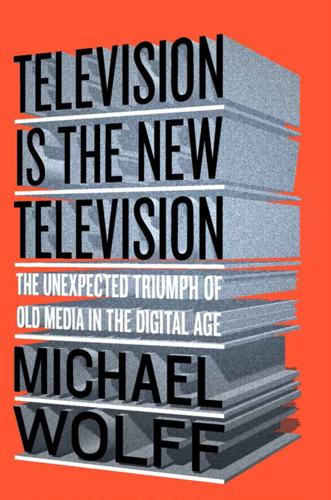
Television Is the New Television: The Unexpected Triumph of Old Media in the Digital Age
by
Michael Wolff
Published 22 Jun 2015
The hierarchical media business was, arguably, disrupted not so much by new technologies as by those lower down on the media ladder suddenly being able to push up by seeming to be more farsighted, more quick-witted, more knowing, more adventurous. The economic power might still reside with the old, but who would not choose foresight over temporary riches? Ken Lerer, for example, Michael Milken’s PR man in the 1980s, and one of the most astute media players (and, subsequently, tech players), went to AOL as its PR chief, helping to create an extraordinary public profile for the company, one that formally turned tech into media. That in turn led to Time Warner’s disastrous merger with AOL, among other results, cementing the impression that technology-led media companies were a thing apart from old-fashioned entertainment and journalism media companies.
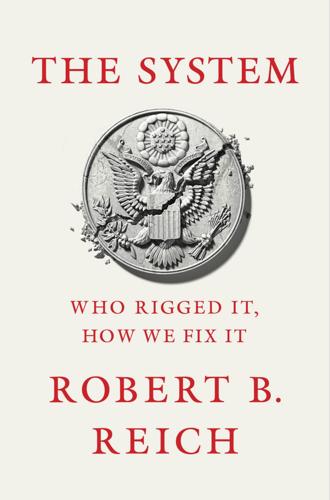
The System: Who Rigged It, How We Fix It
by
Robert B. Reich
Published 24 Mar 2020
In 1981, the Business Roundtable formally adopted a resolution noting that although shareholders should receive a good return, “the legitimate concerns of other constituencies must have appropriate attention.” But starting in the 1980s, as a result of the takeovers mounted by Icahn and a few other raiders such as Michael Milken and Ivan Boesky, a wholly different understanding about the purpose of the corporation emerged. The system changed profoundly. Raiders targeted companies that could deliver higher returns to shareholders mainly by abandoning their other stakeholders—increasing profits by fighting unions, cutting workers’ pay or firing them, automating as many jobs as possible, abandoning their communities by shuttering factories and moving jobs to states with lower labor costs, or simply moving them abroad.
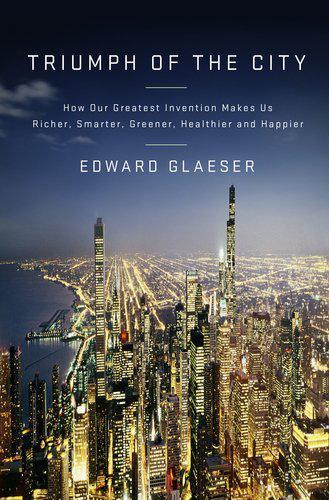
Triumph of the City: How Our Greatest Invention Makes Us Richer, Smarter, Greener, Healthier, and Happier
by
Edward L. Glaeser
Published 1 Jan 2011
A more connected world has brought huge returns to the idea-producing entrepreneurs who can now scour the earth in search of profits. New York reinvented itself during the bleak years of the 1970s when a cluster of financial innovators learned from each other and produced a chain of interconnected ideas. Academic knowledge about trading off risk and return made it easier to evaluate and sell riskier assets, like Michael Milken’s high-yield (junk) bonds, which made it possible for Henry Kravis to use those bonds to get value out of underperforming companies through leveraged buyouts. Many of the biggest innovators acquired their knowledge not through formal training but by being close to the action, like mortgage-backed security magnate Lewis Ranieri of Liar’s Poker fame, who started in the Salomon Brothers mailroom.
…
In the County Business Patterns, 2007 payroll in Oregon was $56 billion and in Nevada was $44.4 billion, and 2007 employment in New Hampshire was 573,209 and in Maine was 503,789. U.S. Census Bureau, County Business Patterns 2007, www.census.gov/econ/cbp. 5 Academic knowledge about . . . assets: Bernstein, Against the Gods, 300-302. 5 Michael Milken’s high-yield (junk) bonds: Lewis, Liar’s Poker, 111. 5 Henry Kravis to use those . . . leveraged buyouts: “The Team,” KKR, Kohlberg Kravis Roberts & Co., 2010, www.kkr.com/team/theteam.cfm. 5 mortgage-backed security magnate . . . mailroom: Lewis, Liar’s Poker, 96. 5 Today, 40 percent . . . still- thriving city: Because New York County is equal to Manhattan, we are able to add up the total payroll of all industries in New York County in 2007, which is nearly $210 billion.
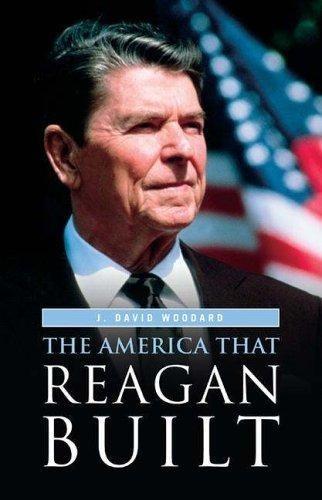
The America That Reagan Built
by
J. David Woodard
Published 15 Mar 2006
As in any business, a few successful corporate raiders operated outside the law. On May 12, 1986, Dennis Levine, who had made $12.6 million on insider-trading deals, implicated two well-known Wall Street traders: Michael Milken and Ivan Boesky. Both men 68 THE AMERICA THAT REAGAN BUILT were charged with violations of federal securities law. Boesky agreed to pay $100 million in forfeitures and penalties, and Michael Milken admitted to six felonies and agreed to pay $600 million in fines. The amount of the fines was staggering, but more revealing was the corporate raider lifestyle the investigations uncovered. In the early 1980s Milken was reportedly making $550 million a year.12 Overall, the freeing of the market for corporate control had important benefits for women in the workforce.

The Spider Network: The Wild Story of a Math Genius, a Gang of Backstabbing Bankers, and One of the Greatest Scams in Financial History
by
David Enrich
Published 21 Mar 2017
Meister cherished the certainty behind the finite, controllable science and math. But he soon recognized another certainty, which was that chemical engineering wasn’t sexy. Meister’s attention strayed. He kept reading news stories about the era’s fearless prosecutors, who were cracking down on the New York Mafia’s five families and the likes of Ivan Boesky and Michael Milken, the financiers who would go to jail for crimes related to insider trading. Meister was inspired—and, if he was honest about it, lured by the flame of publicity. Abandoning engineering, he enrolled in law school. After graduating, Meister landed a job at a firm where he defended accused financial criminals for a few years.
…
Tighe’s legs wobbled. Then she vomited. * * * Late that afternoon, Roger Darin was at home in a Zurich suburb when his phone rang. On the line was Bruce Baird, his UBS-appointed lawyer in Washington. Baird was best known for his time as a federal prosecutor in New York, when he led the criminal prosecution of Michael Milken. He subsequently became a white-collar defense attorney. Baird had known that Darin was in legal jeopardy in the Libor case, because Justice had refused to grant him immunity; in fact, the investigators hadn’t even interviewed him. That couldn’t be a good sign. But Baird had doubted his client would actually be charged anytime soon, at least not without someone placing a courtesy call to the well-connected lawyer.
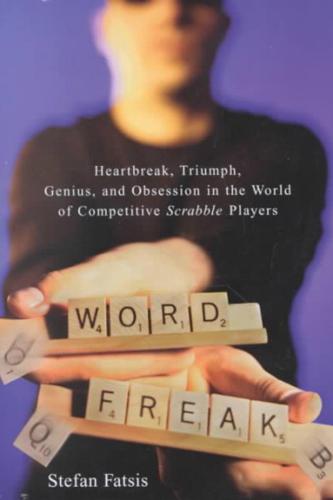
Word Freak: Heartbreak, Triumph, Genius, and Obsession in the World of Competitive ScrabblePlayers
by
Stefan Fatsis
Published 27 Jul 2001
Regardless, say the word “Scrabble” and everyone knows what you’re talking about: the game in which you make words. But it’s much more than that. Before I discovered Washington Square Park, I was aware of the game’s wider cultural significance. Scrabble is one of those one-size-fits-all totems that pops up in movies, books, and the news. I once wrote an article that mentioned the Scrabble tournament that Michael Milken had organized in the white-collar prison where he did time for securities fraud. There’s the scene in the movie Foul Play in which one little old lady plays the word MOTHER and another extends it with FUCKERS. Mad magazine has regularly made fun of the game. (A 1973 feature on “magazines for neglected sports” included Scrabble Happenings: “My Wife 4 ❑ Word Freak Made XEROXED on a Triple . . .
…
That’s the essential act of Scrabble. You don’t need probabilities, you don’t need to win, you don’t need to care about anything else other than finding plays. It doesn’t matter. It’s just finding the plays.” Winning becomes a byproduct, I conclude on my own. Find the right play, and the winning follows. I think of Michael Milken, the junk bond Pied Piper, whom I covered as a reporter. Milken liked to say that money is a byproduct. Make the right deal, and the money will follow. Edley, I decide, is more Mike Milken than Darth Vader: tireless, single-minded, preachy, pensive, persuasive, unflappable, intellectually abstract, a bit of a charlatan.
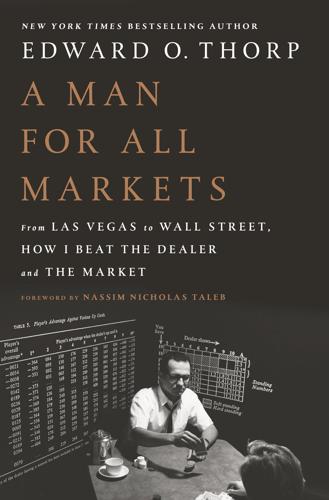
A Man for All Markets
by
Edward O. Thorp
Published 15 Nov 2016
This was part of a campaign by Rudolph Giuliani, US Attorney for the Southern District of New York, to prosecute real and alleged Wall Street criminals. As a prosecutor later told a defense attorney, Giuliani’s real objective in attacking individuals in our Princeton office was to get information to further his case against Michael Milken at Drexel Burnham and Robert Freeman at Goldman Sachs. My partner Jay Regan knew them both well and spoke to them often. Freeman had even been a roommate of Regan’s at Dartmouth. Giuliani believed that Regan could help him bring them down. Regan refused to cooperate. The government used evidence from the raid and testimony from a disgruntled former employee to develop their case.
…
To understand why it really happened, you need to go back to the 1970s, when first-tier companies could routinely meet their financing needs from Wall Street and the banking community, whereas less established companies had to scramble. Seizing an opportunity to finance them, a young financial innovator named Michael Milken built a capital-raising machine for these companies from within a stodgy old Wall Street firm, Drexel Burnham Lambert. Milken’s group underwrote issues of low-rated, high-yielding bonds—the so-called junk bonds—some of which were convertible or came with warrants to purchase stock. The higher yield was the extra compensation investors required to offset the perceived risk that the bonds would default.
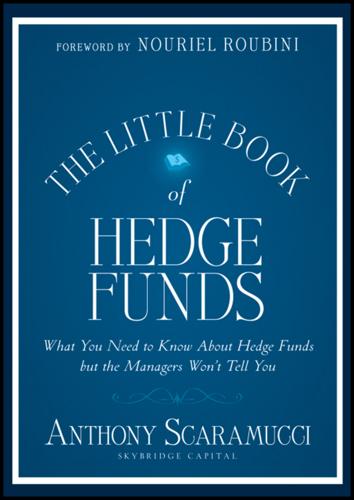
The Little Book of Hedge Funds
by
Anthony Scaramucci
Published 30 Apr 2012
Biggs, Lee Ainslie, Steve Tanabaum, Steve Kuhn, Theo Phanoes, Deepak Narula, John Burbank, Andrew K. Boszhardt Jr., Dan Loeb, Paul Singer, Cliff Asness, Izzy Englander, Jamie Dinan, Russ Bernard, Ken Griffin and many others. We are also pride ourselves in being students of Nouriel Roubini, David M. Darst, Michael Milken, Ed Mathias, David Rubenstein, William Conway, Dan D’Aniello, Prof. Josh Shapiro, Woody Brock, Frank Meyer, and Oliver Stone. My friends at CNBC have been nothing short of amazing. Susan Krakower, Mark Hoffman, Nik Deogun, Melissa Lee, Scott Wapner, Mary Duffy, John Melloy, Patty Martell, Lydia Thew, Gary Kaminsky, Maria Bartiromo, David Faber, Guy Adami, Joe Terranova, Tim Seymour, Amanda Drury, Carl Quintanilla, Jim Cramer, Brian Steel, Brian Sullivan, Maneet Ahuja, Pete and Jon Najarian, Steve Grasso, Steve Cortes, Karen Finerman, Brian Sullivan, Samantha Wright, and a legion of others who always make my time on the network a great learning experience.
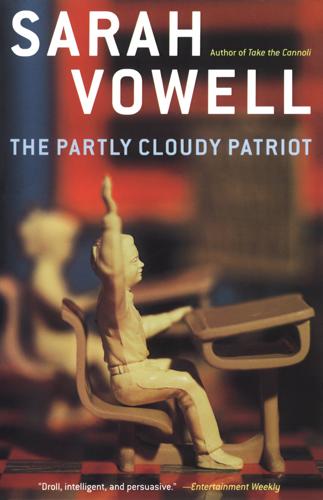
The Partly Cloudy Patriot
by
Sarah Vowell
Published 26 Aug 2002
The friend was so touched he sold the map to the Grahamarader, who promptly called the friend the very next day bragging that he’d sold it, and for a tidy profit at that. Map dealers, I came to learn, are not like that. As a group, they tend to be polite, bookish, and don’t inspire comparisons to Schwarzenegger or any other mythic pop figure. Graham is the map dealers’ Michael Milken, their Elvis Presley. In financial terms, he put antiquarian maps on the map. And he popularized them like no one ever had through sheer charisma. “The antiquarian map market before Graham Arader,” says Graham, “was a fairly sophisticated market. The people who collected had in-depth knowledge and understanding, I guess the effect that I had is that I brought map collecting to a lot more people who perhaps in the beginning were not as sophisticated.
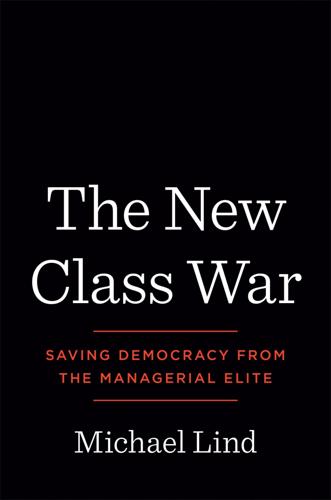
The New Class War: Saving Democracy From the Metropolitan Elite
by
Michael Lind
Published 20 Feb 2020
This is a common theme among rich people who feel entitled to a supporting cast of low-wage, foreign-born servants. The billionaire and former New York mayor Michael Bloomberg has asked: “Who takes care of the greens and the fairways in your golf courses?”18 Speaking to a wealthy audience in Abu Dhabi, at a summit organized by the disgraced former financier Michael Milken’s think tank, former president George W. Bush, the former governor of Texas, once the leading cotton-producing slave state in the US, declared: “Americans don’t want to pick cotton at 105 degrees but there are people who want to put food on their family’s tables and are willing to do that.”19 Another Texan born like Bush into an upper-class family, Representative Robert “Beto” O’Rourke, agreed with Bush, his partisan and political opposite, that low-wage immigrants were needed to pick and process cotton in the former Confederate state of Texas.

Wealth and Poverty: A New Edition for the Twenty-First Century
by
George Gilder
Published 30 Apr 1981
When a company reaches a certain size, it becomes an object of assault by government and by countless pressure groups professing to enhance the interests of “the people.” Despite the achievements of such heroic creators as John D. Rockefeller, J. J. Hill, Andrew Carnegie, Thomas Edison, George Westinghouse, George Eastman, Henry Ford, Walt Disney, A. P. Giannini, Estée Lauder, Charles Merrill, Chester Carlson, Bill Gates, Ray Kroc, Norman Borlaug, Michael Milken, Steve Jobs, Jeff Bezos, Mark Zuckerberg, Larry Page, Sergey Brin, and so many others, commerce is perceived as a somewhat-grubby, less-than-exalted undertaking. It is portrayed as something of a Faustian bargain: businesspeople succeed by appealing to our baser instincts; they are motivated by greed and too often may bend the rules.
…
Why should Warren Buffett be permitted to parlay positions in newspapers, insurance companies, and Coca Cola into a fortune that sometimes makes him the world’s richest man while Sarah Cinderella holds down two jobs—working as a receptionist during the day and waitressing at night—to make ends meet as a single mom? Why should coffee monger Howard Schultz command a fortune worth $5 billion while Harry Homeless lives on a blanket on a grate outside a Starbucks, holding out a discarded paper cup for spare change? And why should Michael Milken, the junk bond pioneer who spent time in jail for trumped up “economic crimes,” still be a billionaire, while the president of the United States earns some $450,000 per year? Does any of this make any sense? These huge disparities seem to defy every measure of proportion and propriety. They apparently correspond neither to need, nor to virtue, nor to IQ, nor to credentials, nor to education, nor to social contribution.
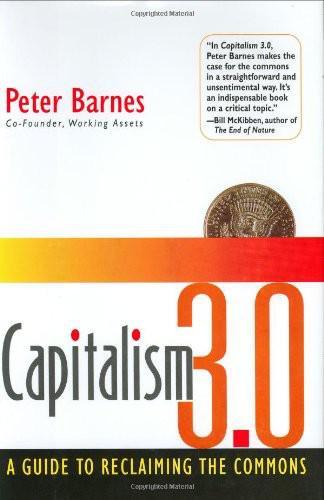
Capitalism 3.0: A Guide to Reclaiming the Commons
by
Peter Barnes
Published 29 Sep 2006
Williams, 457 U.S. 55, 1982. 146 Economist Vernon Smith: Sean Butler, “Life, Liberty, and a Little Bit of Cash,” Dissent, Summer 2005. www.dissentmagazine.org/article/?article=211. Chapter 4: The Limits of Privatization 152 “. . . a license to obfuscate.”: Clive Cook, “The Good Company,” The Economist, Jan. 20, 2005. 153 Hurwitz: Ned Daly, “Ravaging the Redwoods: Charles Hurwitz, Michael Milken, and the Costs of Greed,” Multinational Monitor, Sept. 1994. www.multinationalmonitor.org/hyper/issues/1994/09/mm0994_07.html. See also David Harris, The Last Stand: The War Between Wall Street and Main Street Over California’s Ancient Redwoods (San Francisco: Sierra Club Books, 1997). 172 | Notes to Pages 54–82 154 Working Assets: Report on Socially Responsible Investing Trends in the United States (Washington, D.C.: Social Investment Forum, 2005). www.socialinvest.org/areas/research/trends/sri_trends_report_2005.pdf. 155 Fortune 500 companies socially responsible?
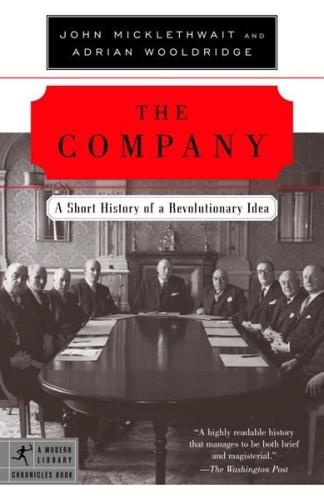
Company: A Short History of a Revolutionary Idea
by
John Micklethwait
and
Adrian Wooldridge
Published 4 Mar 2003
This was unfair: the seventeen companies bought out by KKR in 1977–1989 increased employment by 310,000 (and also spent more on research and development).16 But the process could be savage. At Safeway, for instance, where the company motto had been “Safeway offers security,” 63,000 people lost their jobs.17 LBOs, in turn, relied on another Wall Street invention: “junk bonds.” Wall Street had always traded bonds in distressed companies. The genius of Michael Milken was to create bonds specifically for this “non-investment-grade” market, opening up the market to ventures that were too small or risky to issue regular bonds. Milken first began to push his “high-yield” bonds in the 1970s; by the 1980s, his firm, Drexel Burnham Lambert, dominated the junk-bond market, and his annual Predators Ball in Los Angeles had become a fixture for entrepreneurs and politicians.
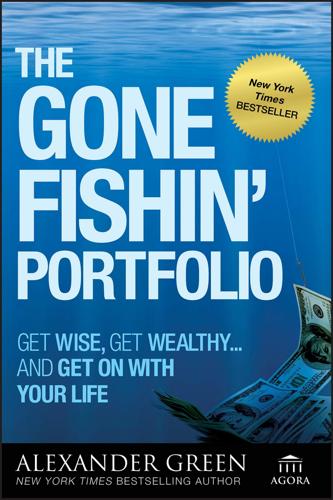
The Gone Fishin' Portfolio: Get Wise, Get Wealthy...and Get on With Your Life
by
Alexander Green
Published 15 Sep 2008
High-yield bonds are more closely correlated to stocks than investment grade bonds. True again. But so what? The two asset classes don’t move in lock step and there are plenty of periods when high-yield bonds perform better than equities. To those who insist high-yield bonds are simply too risky to include, remember the words of junk bond king Michael Milken: The rating on triple-A bonds only has one way to go—down. Sure, most investment-grade obligations maintain their standing. But in no case do triple-A-bonds receive upgrades. In short, including a 10% allocation to high-yield bonds gives you an edge. Historically, portfolios that include exposure to this asset class have performed better than those that rely solely on investment-grade bonds for the fixed-income allocation.
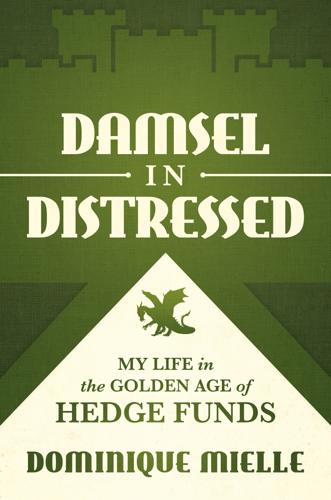
Damsel in Distressed: My Life in the Golden Age of Hedge Funds
by
Dominique Mielle
Published 6 Sep 2021
The opportunity to make a wide range of creative decisions in ever-changing markets and investments is the reason I was so excited to join this Los Angeles-based hedge fund, then mostly dedicated to special situations and distressed investments. In addition, they enjoyed a pedigree of the noblest level in my ranking, the founders being former close associates of Michael Milken, the financial guru creator of the junk bond market at the now-defunct investment bank Drexel Burnham Lambert. When I met the founders for my interview, I was wearing five-inch stilettos, making me five feet nine, which, by the way, is rather tall in the world of high finance. One partner was coming from the gym.

Survival of the Richest: Escape Fantasies of the Tech Billionaires
by
Douglas Rushkoff
Published 7 Sep 2022
Funders, scientists, and royals end up with better excuses to stay at one of Jeffrey Epstein’s properties; Israeli and U.S. intelligence services get surveillance assets and backdoor technologies; and the Davos elite get to explore “solutions” for their own death (transhumanism) or for global inequality (eugenics). Do just a little reading on any of these initiatives and you see names like felons Jeffrey Epstein, Ghislaine Maxwell, and Michael Milken alongside those of royals like Princes Charles and Andrew, tech founders like Bill Gates and Paul Allen, politicians like Bill and Hillary Clinton, and mega-project science advisors like Boris Nikolic and Melanie Walker. Each name serves as a trailhead to an entitled culture of would-be philosopher kings for whom conventional notions of morality and equity are mere obstacles to perpetuating their own dominance.
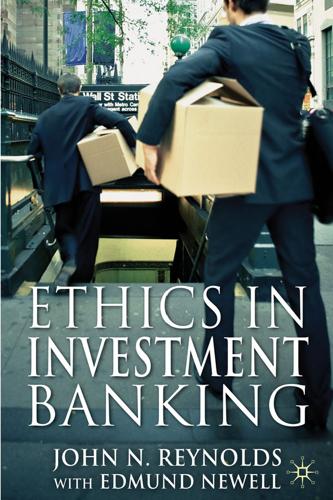
Ethics in Investment Banking
by
John N. Reynolds
and
Edmund Newell
Published 8 Nov 2011
Yet the academic discipline of business ethics is relatively new, developing primarily over the last quarter of a century or so. A major impetus for business schools – and indeed businesses – to turn their attention to ethics was a spate of financial scandals in the late 1980s, which exposed the problem of “insider trading” in Wall Street, when the activities of Ivan Boesky, Michael Milken and others captured international headlines. Here was an issue of moral judgement – whether to use privileged information for personal gain – that caused public outcry and raised questions about the trustworthiness of employees and the way firms conducted their business. Since then a number of high-profile and highly damaging incidents have also raised ethical concerns over finance.
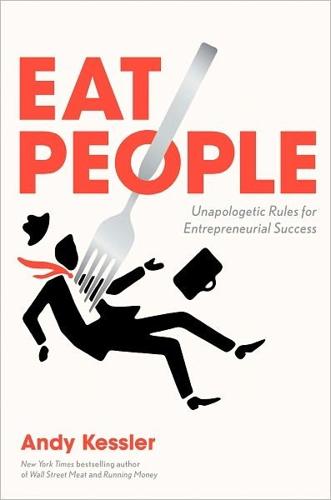
Eat People: And Other Unapologetic Rules for Game-Changing Entrepreneurs
by
Andy Kessler
Published 1 Feb 2011
Time Warner and Comcast: cable. Disney: TV licenses and cable stations like ESPN. News Corp.: TV licenses, cable stations, and newspapers. Even Warren Buffett got in on the game, trying to make Buffalo, New York, a one-newspaper town so he could control a pipe. Years ago, I sat through a presentation by junk bond king Michael Milken, long released from involuntary housing for manipulating markets (“stock parking,” if you want to get technical). Milken flashed some photos of his former clients: Ted Turner, John Malone, John Kluge, Rupert Murdoch, Craig McCaw. Each one of them had borrowed billions in high-yield junk debt to build their media empires.
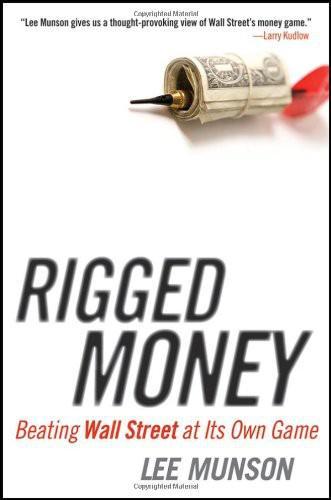
Rigged Money: Beating Wall Street at Its Own Game
by
Lee Munson
Published 6 Dec 2011
Now that I have your attention, let’s break down the major issues with junk bonds, and more specifically ETFs that trade baskets of those bonds. Don’t worry, there is a place for these ugly ducklings, but they are not for those trying to get fixed income risk and return. If that doesn’t keep you reading, nothing will. The junk bond market developed by Michael Milken in the 1980s is predominately a U.S. phenomenon, though they exist anywhere there is tradable debt. Simply stated, they are bonds with a poor rating. Most notably, junk bonds have higher credit risk and illiquidity, but also higher interest payments—as long as they keep paying. I want to cover the problem with junk bonds within a portfolio, the true cost of owning them, and how investors should approach the junk bond market.
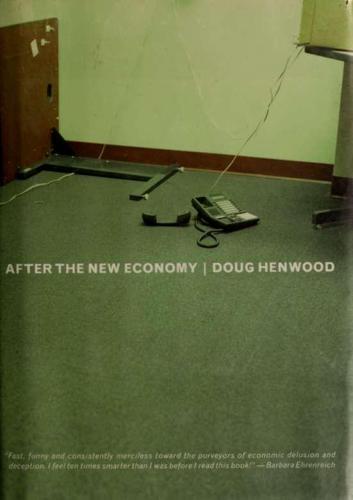
After the New Economy: The Binge . . . And the Hangover That Won't Go Away
by
Doug Henwood
Published 9 May 2005
Grubman wasn't Wall Street's only renaissance man—nor was telecommunications the only industry field in which the multiply talented actors performed. At Credit Suisse First Boston (CFSB), another son of South Philly, Frank Quattrone, played promoter, banker, and analyst. He operated from the Sihcon Valley, far from CFSB's New York headquarters, prompting comparisons to Michael Milken's Beverly Hills operation in the 1980s, which was largely independent of Drexel Burnham Lambert's Manhattan home office. One of his synergistic innovations, which once might have been considered a conflict of interest, was that he also ran a venture-capital frind; Quattrone's shop would invest in startups, then take them pubhc in an IPO.

Broken Markets: A User's Guide to the Post-Finance Economy
by
Kevin Mellyn
Published 18 Jun 2012
They only embraced change when their future suddenly became insecure, and then it was mostly too late. No, the parade into the new Golconda was led by a motley crew of outsiders who saw gold in the sheer rottenness of the old regime. These included takeno-prisoners bond houses, such as the Solomon Brothers, who were immortalized by Michael Lewis in Liar’s Poker (Penguin, 1990). Michael Milken’s junk bonds fueled Drexel Burnham and the leveraged-buyout firms that followed. The entire venture capital industry that funded Silicon Valley and much else was equally new as a market force, though it traces its roots to the repressed 1940s. Private equity represented another essentially new industry in the 1980s, and the same is true for hedge fund industry that grew up a decade or so later.
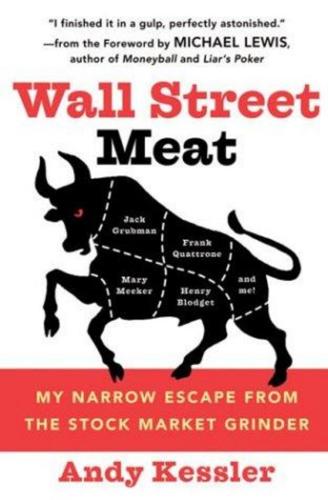
Wall Street Meat
by
Andy Kessler
Published 17 Mar 2003
It wasn’t the rip-roaring bull market that would show up in 1987, but things were hopping. All of New York caught stock fever. Still, it wasn’t so easy. No matter how good a call you had, most of the stocks that were working were takeovers, leveraged buyouts and companies put in play by Drexel Burnham and its junk bond king, Michael Milken. I heard about these guys every day. The rest of the street was in awe. One day, I was walking down 5th Avenue with one of our salesmen and his client, when the salesman asked why the account didn’t do more business with us. The client was brutally honest. “Who needs you? I get a call every morning from my Drexel salesman who tells me the next set of companies that are going to be in play.
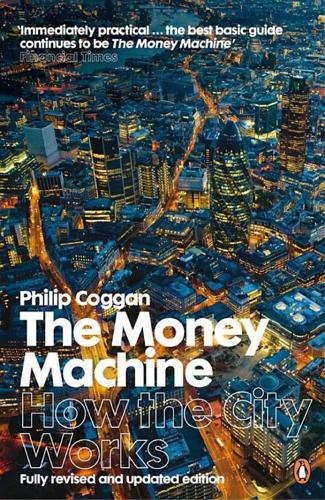
The Money Machine: How the City Works
by
Philip Coggan
Published 1 Jul 2009
The market marked down the price of the bond because it feared the company would be unable to repay the capital, or even maintain the interest payments. In the language of the rating agencies (referred to above), the bonds would be ‘below investment grade’ with a rating below BBB. A smart trader called Michael Milken, who worked for a US banking group called Drexel Burnham Lambert, saw the opportunity for profit in junk bonds. Say a bond was issued with a coupon of 10 per cent, but the company gets into difficulty and its price falls to 50 (compared with a face value of 100). If the company just pays the interest, the investor will earn a running yield of 20 per cent (10/50).
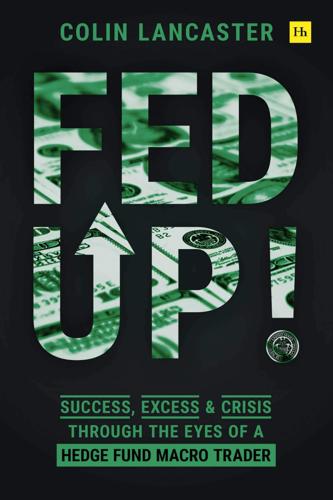
Fed Up!: Success, Excess and Crisis Through the Eyes of a Hedge Fund Macro Trader
by
Colin Lancaster
Published 3 May 2021
But not the Big D. He’s not yet concerned. In a tweet, he wrote, “The coronavirus is very much under control in the US. We are in contact with everyone and all relevant countries. CDC and World Health have been working hard and very smart. Stock market starting to look very good to me!” He also pardoned Michael Milken. Milken was featured in books such as Den of Thieves and Predators Ball when I was first getting interested in this business. He surfed a couple of big waves. He rode one better than anyone else. Another was a complete wipeout. The third was an amazing model of rehabilitation. His waves were a sign of the times.
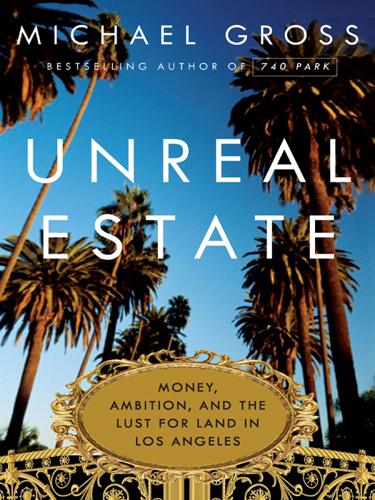
Unreal Estate: Money, Ambition, and the Lust for Land in Los Angeles
by
Michael Gross
Published 1 Nov 2011
Winnick’s mother called him the mitten drinnen kid, Yiddish for “in the middle of everything,” and after a brief stint selling furniture, Winnick found himself in the middle of something big in May 1973, when he was promoted from trainee to account executive at Drexel Burnham & Co., a company that was the combination of a declining old-school Wall Street brokerage and a feisty, mostly Jewish one staffed by eager come-from-nowheres like Winnick hoping to make a mark and some money. The firm was known as Drexel Burnham Lambert by the time Winnick was promoted to bond salesman and met Michael Milken, who ran a then backwater department selling high-yield securities considered so risky they were called junk bonds. Their first encounter in 1976 wasn’t a good one, wrote James B. Stewart in his book Den of Thieves. Though Winnick was supposed to earn a preestablished cut of a deal he made through Milken, the more experienced trader cheated him out of most of it, leading Winnick to complain to Milken’s boss.
…
Their cast of regulars features Huffington, Hollywood types like David Geffen, Mike Medavoy, Lawrence Bender, Norman Lear, Albert Brooks, Rob Reiner, Michael York, Warren Beatty and Annette Bening, Aaron Sorkin, Yvette Mimieux, Bill Maher, and Larry David and his activist ex-wife Laurie, as well as the writer Gore Vidal and the former financier Michael Milken. “It’s a fuller life when you know, in the same life, Martha Stewart and Jared Diamond, Edgar Doctorow and Joan Didion and Sylvester Stallone,” Lynda said when she was profiled in The New Yorker. Yes, The New Yorker. What attracts them all? “To have dinner at the long table under the huge chandelier in the dining room,” observed the author Amy Wilentz, “is to feel as if one were a part of some kind of modern aristocracy, of an entitled few.

The Power Law: Venture Capital and the Making of the New Future
by
Sebastian Mallaby
Published 1 Feb 2022
By freeing talent to convert ideas into products, and by marrying unconventional experiments with hard commercial targets, this distinctive form of finance fostered the business culture that made the Valley so fertile. In an earlier era, J. P. Morgan’s brand of finance fashioned American business into muscular oligopolies; in the 1980s, Michael Milken’s junk bonds fueled a burst of corporate takeovers and slash-and-burn cost cuts. In similar fashion, venture capital has stamped its mark on an industrial culture, making Silicon Valley the most durably productive crucible of applied science anywhere, ever. Thanks to venture capital, the Traitorous Eight were able to abandon William Shockley, launch Fairchild Semiconductor, and set this miracle in motion.
…
His name was Yuri Milner. To Shleifer’s amazement, Milner thought the way he did. The son of a Soviet management professor who specialized in American business, he had been the first Russian to study at Wharton, and he was romantically pro-capitalist. The 1980s takeover artists—Henry Kravis, Ronald Perelman, Michael Milken—were among his heroes.[28] After returning to Russia and losing his banking job in the financial crisis of 1998, Milner had read a pile of investment bank studies, seeking career inspiration. Among them was an internet report by Mary Meeker, then Morgan Stanley’s star tech analyst. At the time, nobody in Russia was talking about the internet, and Milner himself did not even use email.
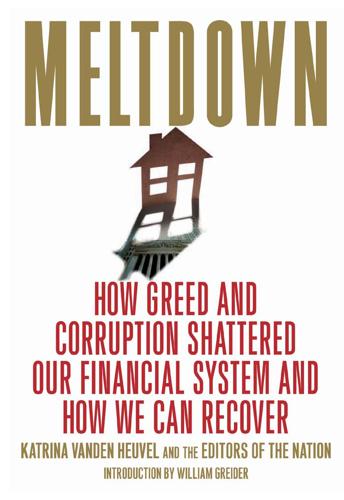
Meltdown: How Greed and Corruption Shattered Our Financial System and How We Can Recover
by
Katrina Vanden Heuvel
and
William Greider
Published 9 Jan 2009
When the savings and loan industry was deregulated in the early 1980s, Keating saw a window of opportunity as big and as gloriously brilliant as the stained glass of Sainte-Chapelle. Saying that he was certain that he could “profit immensely,” in 1984 he bought for $51 million the old-line Lincoln Savings & Loan of Irvine, California, which had assets of almost $1 billion. Money for the purchase was obtained, naturally, by everyone’s favorite junk-bond swindler, Michael Milken of Drexel Burn-ham Lambert. How could a guy who only five years earlier was battling the S.E.C.’s fraud charges, which he escaped not by proving his innocence but by promising to behave himself, wind up with a savings and loan? Why would the bank board approve such a purchase? It was one of the blackest marks on Ed Gray’s record, hardly lessened by his claim of ignorance: “I had never heard of Charles Keating.
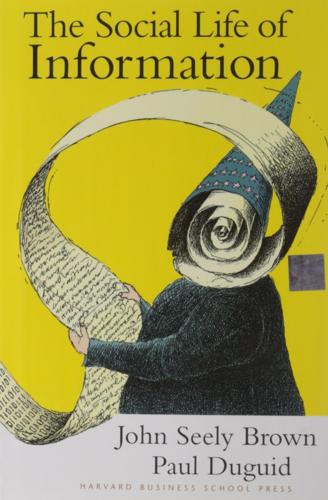
Social Life of Information
by
John Seely Brown
and
Paul Duguid
Published 2 Feb 2000
S. adult education, has grown in twenty years (it was accredited in 1978) to a school with 61,000 students, 77 campus centers, and 450,000 alumni. As a sign of the new competition from the for-profit sector, the University of Phoenix has also charmed the stock market, allowing its parent company to double revenues and split stocks in the four years since its IPO in December 19944 From freelancing professors to the junk bond king Michael Milken, people are realizing that there is serious money to be made in education. For-profit colleges compete in particular with smaller, less-well-endowed conventional schools that cannot protect themselves with generous scholarships.5 But their strategy of what might be called "unplug and pay"offering individual courses at rates cheaper than the conventional college threatens all schools.

Exponential Organizations: Why New Organizations Are Ten Times Better, Faster, and Cheaper Than Yours (And What to Do About It)
by
Salim Ismail
and
Yuri van Geest
Published 17 Oct 2014
To do so, we: Reviewed sixty classic innovation management books by such authors as John Hagel, Clayton Christensen, Eric Ries, Gary Hamel, Jim Collins, W. Chan Kim, Reid Hoffman and Michael Cusumano. Interviewed C-Level executives from several dozen Fortune 200 companies with our survey and frameworks. Interviewed or researched ninety top entrepreneurs and visionaries including Marc Andreessen, Steve Forbes, Chris Anderson, Michael Milken, Paul Saffo, Philip Rosedale, Arianna Huffington, Tim O’Reilly and Steve Jurvetson. Investigated the characteristics of the one hundred fastest growing and most successful startups across the world, including those that comprise the Unicorn Club (Aileen Lee’s name for the billion-dollar market cap startup group), to tease out commonalities the companies used to scale.
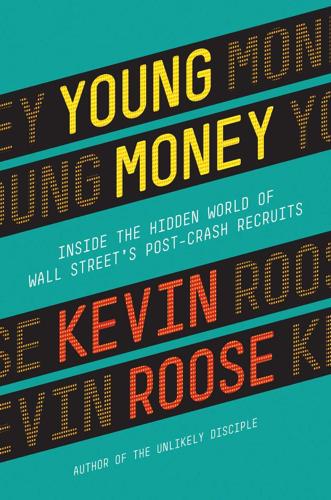
Young Money: Inside the Hidden World of Wall Street's Post-Crash Recruits
by
Kevin Roose
Published 18 Feb 2014
More than half of Wharton’s six-hundred-person undergraduate class typically heads to banks, hedge funds, private equity firms, and other financial services companies after graduation. Among the celebrity financiers the school has churned out are SAC Capital billionaire Steven A. Cohen, the junk-bond impresario Michael Milken, and real estate megagoon Donald Trump. Wharton’s list of famous alumni, and the fact that its graduates emerge armed with advanced finance training, has made it a place where recruiters are prone to drooling. “Penn, and especially Wharton, is in a league of its own,” one hiring manager at a top Wall Street firm told me.
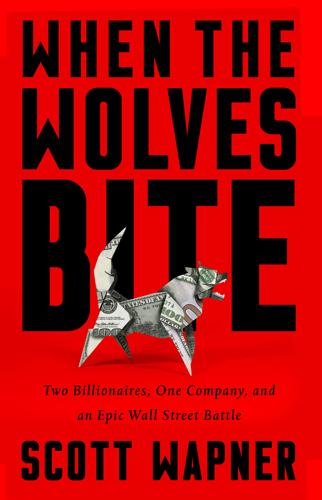
When the Wolves Bite: Two Billionaires, One Company, and an Epic Wall Street Battle
by
Scott Wapner
Published 23 Apr 2018
While Saxon initially talked tough, the company settled after only six months and agreed to buy back Icahn’s stock for $10.50 a share, more than three dollars above Icahn’s average purchase price.20 Icahn made $2.2 million on the deal, and the scores kept coming.21 Icahn pocketed $10 million in a deal with Hammermill Paper the same year, $7 million from Simplicity Pattern in 1981, and $17 million on an investment in the storied department store chain Marshall Fields the following year.22 By the mid-1980s, Icahn had become a player on Wall Street’s emerging takeover scene alongside the day’s other dealmakers, such as Ivan F. Boesky, T. Boone Pickens, and Michael Milken, the Drexel Burnham Lambert banker whose infamous “junk bonds” helped finance the buying frenzy of the times. Milken’s high-yielding securities had earned him the nickname “The Junk Bond King” since he had all but invented the market for the securities. The men—coined corporate raiders by the media—were shrewd, often ruthless negotiators, stopping at nothing to shake up companies whose CEOs were deemed either too “imperial” or too “country-club,” more interested in their golf scores than their shareholders.

Health and Safety: A Breakdown
by
Emily Witt
Published 16 Sep 2024
Skip Notes * Love Saves the Day: A History of American Dance Music Culture, 1970–1979, by Tim Lawrence, is the most comprehensive history of the Loft. 7 In the 1980s, when I was a kid in Minneapolis, my mom had subscribed to Spy magazine so she could keep up with New York City derision even though we lived in the placid upper Midwest. Spy had a lot of graphic design elements that a child could understand, and from its cartoons and jokes I learned the names of the New York City villains in the tabloids at the time for tax evasion or securities fraud, people like Leona Helmsley, Michael Milken, and Ivan Boesky. I liked “Separated at Birth,” which compared thumbnail portraits of the tabloid figures as a joke, or “Celebrity Math,” which added or subtracted two famous people to come up with a third. A six-year-old could get the joke of Tammy Faye Bakker having been separated at birth from an Ewok.
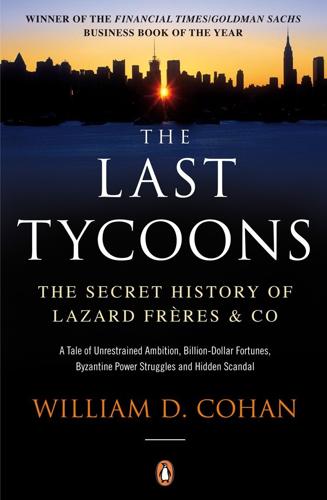
The Last Tycoons: The Secret History of Lazard Frères & Co.
by
William D. Cohan
Published 25 Dec 2015
One could argue, quite rightly, that Felix invented the persona of investment banker as trusted corporate M&A adviser. Although he might find the comparison indelicate because he abhorred junk bonds, in the 1960s Felix divined the business of providing independent M&A advice to corporate chieftains in much the same way as the infamous Michael Milken conjured up the high-yield junk-bond market in the 1980s. In an utterly typical week in January 1969, for instance, Felix had many meetings, including those with Howmet, a French aerospace company where he was on the board of directors, and with Harold Geneen (CEO of ITT), Nicholas Brady (then a banker at Dillon Read and later the U.S.
…
Felix represented Revlon, thanks to his enduring friendship with its CEO, Michel Bergerac, a Frenchman whom Felix had met when Bergerac was one of Geneen's top lieutenants at ITT. While far from the biggest deal, at a mere $1.83 billion, the Perelman-Revlon fight seemed to have it all: an upstart corporate raider, using money borrowed with the help of Michael Milken, trying to buy one of the world's best-known consumer brands, versus a proud corporate pillar, run by a sophisticated Frenchman, desperately hoping to avoid his clutches. The process dragged on for months, with Bergerac and Felix bringing in Forstmann Little, the buyout firm, to put together a competing bid.
…
In February 1986, he and Perella were named co-heads of investment banking at First Boston, a major promotion that put the two men in charge of all the firm's corporate relationships while keeping them in control of the M&A group. But by the mid-1980s, the M&A fraternity would be thoroughly dislodged once again by the emergence of Michael Milken and his firm, Drexel Burnham Lambert. As has been well documented, Milken revolutionized corporate finance through the creation and use of high-yielding junk bonds. Not only did Drexel underwrite these bonds for corporations that could not get financing from more traditional sources--banks, insurance companies, and the public-equity markets--but also Milken pioneered the use of these securities to finance the huge financial ambitions of corporate raiders, like Carl Icahn and T.
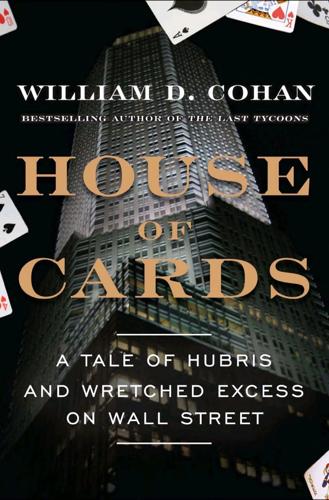
House of Cards: A Tale of Hubris and Wretched Excess on Wall Street
by
William D. Cohan
Published 15 Nov 2009
And then they announce a big stock buyback at $65 a share and they sell stock at $38 a share. I mean, they don't know what they're doing. And yet they get rewarded for doing that. It makes me sick.” Sedacca had witnessed firsthand a few blowups in his day. He worked at the investment bank Drexel Burnham Lambert—the former home of junk-bond king Michael Milken—when it was liquidated in 1990 and lost virtually overnight the stock he had in the firm as it plunged from $110 per share to zero (Drexel was a private company but the stock had been valued for internal purposes). “It was enough that it stunned,” he explained. “It was more than a twenty-nine-year-old would want to lose.”
…
Morgenson could have gone on to mention Bear's roles in both the mutual-fund scandal and the scandal involving the exchange of favorable research coverage for investment banking business, but she did not, as her point was already well made. “And so, Bear Stearns, a firm that some say is this decade's version of Drexel Burnham Lambert, the anything-goes, 1980s junk-bond shop dominated by Michael Milken, is rescued,” she wrote. “Almost two decades ago, Drexel was left to die. Bear Stearns and Drexel have a lot in common. And yet their differing outcomes offer proof that we are in a very different and scarier place than in the late 1980s.” Black insisted that the JPMorgan teams camped out on the firm's eighth floor read Morgenson's column.
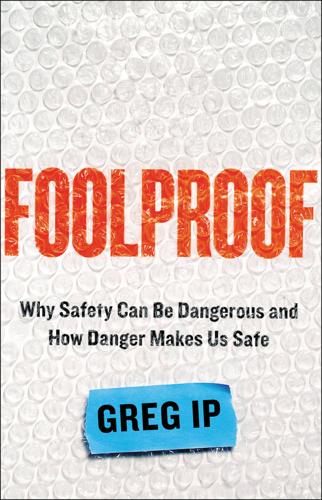
Foolproof: Why Safety Can Be Dangerous and How Danger Makes Us Safe
by
Greg Ip
Published 12 Oct 2015
Mexico learned its lesson, and thereafter kept a floating exchange rate and stuck to borrowing in its own currency. When the rich world sank into crisis in 2008, Mexico’s central banker observed, with relief, “This time it wasn’t us.” Individual firms learned lessons, as well. While almost forgotten now, the collapse in 1990 of Drexel Burnham Lambert, home of the junk bond king Michael Milken, was the largest closure of an investment bank in the United States. Drexel had borrowed by issuing commercial paper, essentially a short-term loan from an investor rather than a bank, secured not by collateral, like a house or a Treasury bond, but merely by its promise to repay. Secured financing is supposed to be safer because if the borrower goes bankrupt, the lender can seize the collateral.
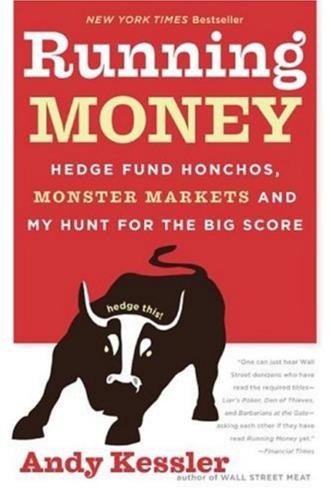
Running Money
by
Andy Kessler
Published 4 Jun 2007
Kaye was a reasonably slight, very New York–looking guy, with black hair and eyes set a little close together, which gave him both a serious and mysterious, almost sinister look at the same time. He was also smart as shit. At PaineWebber, he had made the firm and its clients tons of money (I assume he did well himself too). Courtesy of Michael Milken and Drexel Burnham and hot money in junk bonds, the late ’80s saw mergers announced almost daily. If a stock was trading at $45 and a deal was announced at $60, the stock might jump to $57. You could still make $3, not much, but in only three months, which was a 21% return, even higher if you borrowed money.
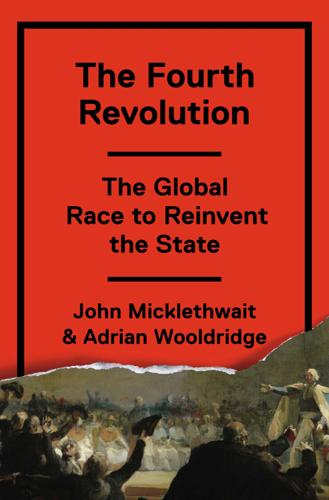
The Fourth Revolution: The Global Race to Reinvent the State
by
John Micklethwait
and
Adrian Wooldridge
Published 14 May 2014
More important, some of the design faults in California’s structure have begun to be fixed, thanks to initiatives passed in Schwarzenegger’s time. Budgets no longer need a two-thirds majority to pass the legislature. The state has forged ahead with both open primaries and redistricting, with some interesting results. There is even something of a rebirth of centrist pragmatism. One trailblazer was Michael Milken, the former junk bond king, whose Santa Monica–based institute issues annual reports on the state of the state and produces a constant stream of ideas, many of them backed up by money, for fixing it. Another is Nicolas Berggruen’s Think Long Committee, a technocratic group of Republican and Democratic grandees and business leaders, which is trying to narrow the gap between Silicon Valley and Sacramento.
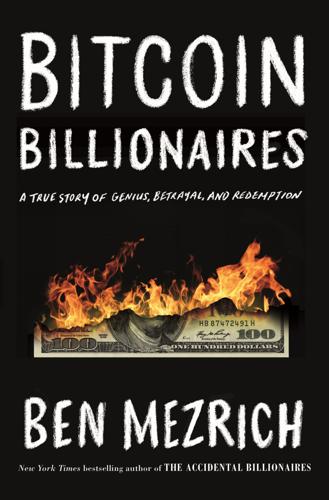
Bitcoin Billionaires: A True Story of Genius, Betrayal, and Redemption
by
Ben Mezrich
Published 20 May 2019
He descended from two of the most prominent financial families in the country: on his father’s side, Judge Thomas Mellon had founded Mellon Bank in 1869, once one of the largest banks in the world, which in 2006 had merged with the Bank of New York, the oldest company in the United States, to become Bank of New York Mellon. On his mother’s side, he was a direct descendent of Anthony Joseph Drexel, the founder of Drexel Burnham Lambert, a Wall Street investment bank created in 1935 that had gone bankrupt fifty-five years later, in 1990, following the indictment of its rainmaker Michael Milken, dubbed the Junk Bond King. So Mellon had been born to banking royalty—and with that came all the ups and downs one would imagine. His father had killed himself when Matthew was in college at the Wharton School at the University of Pennsylvania. During his senior year, the younger Mellon had inherited $25 million at the age of twenty-one—and promptly bought himself a six-bedroom apartment off campus, a red Ferrari, and a black Porsche.
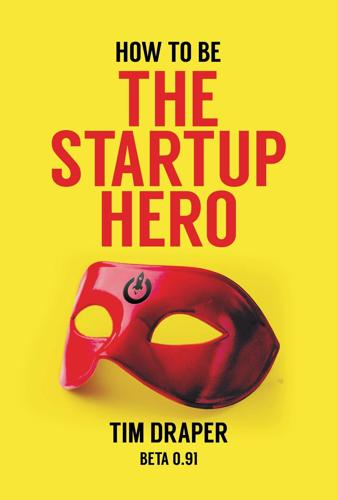
How to Be the Startup Hero: A Guide and Textbook for Entrepreneurs and Aspiring Entrepreneurs
by
Tim Draper
Published 18 Dec 2017
Go on a safari in Botswana Go to the Consumer Electronics Show in Las Vegas (many times) Visit the New York Stock Exchange (BizWorld and MeVC) See the opening of a Broadway show (Crazy She Calls Me) See Steve Miller Band in concert (with the Doobie Brothers at Shoreline—met him later) Visit the pyramids (and Ramses II) Go to the Olympics games (Summer in Atlanta, Winter in Utah) Friends Play touch football with Joe Montana Meet each President since Richard Nixon (so far, so good) Meet Barry Bonds (he helped coach my kids’ T-ball team) Meet Charles Barkley Meet Michael Milken (Spoke at the Milken Institute) Meet Michael Jackson (I had backstage passes to his concert in London, but he died before the concert was scheduled to begin) Meet Phil Collins (at the Oscars) Freaks Attend a funeral (this has happened too many times) Be in a hurricane (swam during Hurricane Bob) Be in an earthquake (dove under my desk at work) Be in a flood (our dog had to swim through the house) See an active volcano (in Pucon, Chile, and Mt Saint Helens, both from the sky) Visit a prison (Sonora State Prison with Defy Ventures) Fulfillment Create a board game (Stanford: The Game, Voter’s Choice) Create a game for a class (BizWorld) Paint 10 good paintings (“good” is in the eyes of the painter) Plant a tree that lives Build a treehouse with my kids (at my parents’ house before they tore it down) Produce a movie (The Tic Code, The Naked Brothers Band, Stella’s Last Weekend) Produce a CD-ROM title (I think technology has moved past me here) Get 10 articles published (most are about supporting entrepreneurship and driving technology) Write a very long poem Make a success of a dropout (there have been many) Get jobs for 10 friends (very satisfying) Grow a vegetable garden (it attracted crows) Free a prisoner Get a law changed or eliminated (made school vouchers legal) Teach a class at Stanford Business School (with Bill Sahlman) Fascination Learn more Japanese Learn to play 3 songs on the piano well Read 1000 books (I am at 350) Learn to make one spectacular dessert Read the Bible (Old and New) Read the Koran (brilliant legal document) Read the book of Mao (he was awesome, then he was awful) Read The Book of Mormon Shoot below 85 in golf (best score 86; typical score 110) Foolishness Bareback ride an unknown horse (with my brother-in-law in Hawaii) Hang glide (crashed and cracked the mast) Pilot an airplane (bush plane in Alaska) Parasailing (in Mexico) Drink snake blood in Snake Alley (in Taiwan) Swim in the Crystal Springs Reservoir (so muddy!)
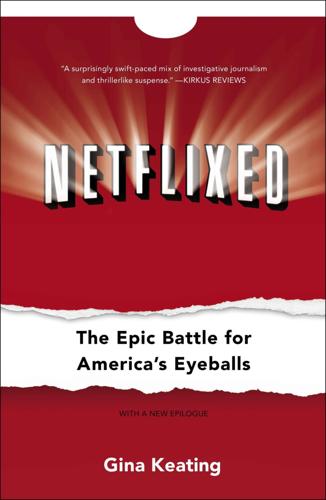
Netflixed: The Epic Battle for America's Eyeballs
by
Gina Keating
Published 10 Oct 2012
He had perfected the art of greenmail—secretly accumulating a big stake in a target company, either by himself or with a cadre of like-minded investors, and demanding a premium to sell back his shares and go away. Although he had worked to rehabilitate his image since the days when he was grouped with Michael Milken and Ivan Boesky as a parasite on the financial world, his tactics remained the same. Icahn maintained an office in the General Motors Building in Midtown Manhattan, overlooking Central Park and the Plaza Hotel. The decor, with its rich, bold colors and original artwork depicting famous battles, conveyed a sense of power and state.
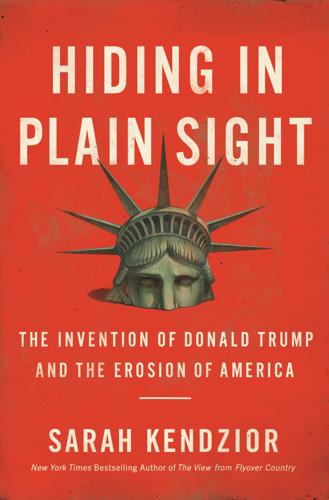
Hiding in Plain Sight: The Invention of Donald Trump and the Erosion of America
by
Sarah Kendzior
Published 6 Apr 2020
The transformation of the media into an industry for elites who may not recognize white-collar corruption as abnormal—or who may be reluctant to upset their family or social circles by revealing a crime—is described in depth over the next few chapters. The late 1980s brought a flurry of accountability for Wall Street criminals and dirty Republicans—Michael Milken, Ivan Boesky, Leona Helmsley, the felons of the Iran Contra cases—but Trump was not among the indicted. However, he did not escape the bottoming out of the greed decade unscathed. By the end of the 1980s, Trump properties had gone bankrupt, and some were tarnished by their connection to tragedies and crimes—such as the 1989 freak helicopter crash that killed top executives running his dying Taj Mahal casino.
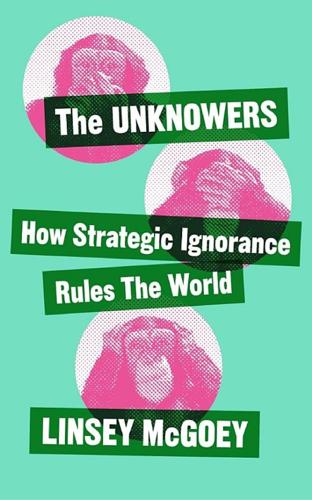
The Unknowers: How Strategic Ignorance Rules the World
by
Linsey McGoey
Published 14 Sep 2019
Bannon shares with Green his underlying mantra for amassing power, claiming that he learned the tactic when he was a banker with Goldman Sachs. ‘One of the things Goldman teaches you is, don’t be the first guy through the door because you’re going to get all the arrows,’ Bannon said. ‘If it’s junk bonds, let Michael Milken lead the way.’ He added that one of Goldman’s strongest principles is ‘never lead in any product. Find a business partner.’10 It’s a doctrine of deliberate anti-visibility: the strategic effort to make one’s idea seem to have originated elsewhere to avoid the appearance of primary involvement.
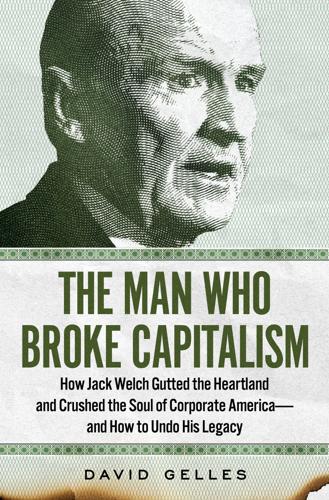
The Man Who Broke Capitalism: How Jack Welch Gutted the Heartland and Crushed the Soul of Corporate America—and How to Undo His Legacy
by
David Gelles
Published 30 May 2022
The nineteenth-century robber barons tried to atone for their monopolistic business practices with philanthropy, endowing foundations and universities with so many billions that, decades on, the names Rockefeller, Carnegie, and Mellon are associated more with charities than they are with monopolies. Some of Welch’s peers were similarly dexterous. Michael Milken, the junk bond king of the 1980s, was convicted of racketeering and fraud, sentenced to ten years in prison, and barred from the securities industry. After his sentence was reduced for cooperating with prosecutors, he reinvented himself as a philanthropist and would-be public intellectual, footing the bill for a major economic and policy conference where he entertained celebrities including Tom Brady and former president George W.
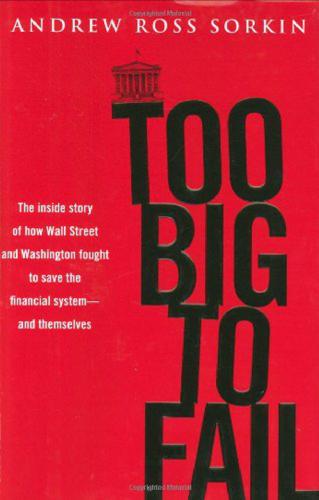
Too big to fail: the inside story of how Wall Street and Washington fought to save the financial system from crisis--and themselves
by
Andrew Ross Sorkin
Published 15 Oct 2009
The board also granted him options that would amount to another $72 million if he could bring Merrill’s shares above $100; they rose 1.6 percent to $57.86 on the news that Thain would come on board but still had a long way to go for that bonus to kick in. As soon as he arrived, he moved quickly to shore up Merrill’s capital base, hoping to move a step ahead of the problem. His frame of reference was the end of Drexel Burnham Lambert, Michael Milken’s firm, which had filed for bankruptcy in 1990. “The demise of Drexel was really a liquidity problem,” he said at one of the firm’s Wednesday-morning risk-committee meetings, explaining how the firm didn’t have enough cash on hand. “Liquidity is the most important thing.” In December and January, Merrill raised $12.8 billion from the sovereign wealth funds Temasek Holdings of Singapore and the Kuwait Investment Authority, among other investors.
…
A great deal of money can be made from derivatives, which are, in simplest terms, financial instruments that are based on some underlying asset, such as residential mortgages, to weather conditions. Like the bomb that ended the film Dr. Strangelove, derivatives could, and did, blow up; Warren Buffett called them weapons of mass destruction. Sosin had been at Drexel Burnham Lambert, Michael Milken’s ill-fated junk bond operation, but left before that Beverly Hills-based powerhouse folded amid an epoch-defining scandal that drove it into bankruptcy in 1990. Seeking a partner with deeper pockets and a higher credit rating, Sosin fled to AIG in 1987 with a team of thirteen Drexel employees, including a thirty-two-year-old named Joseph Cassano.
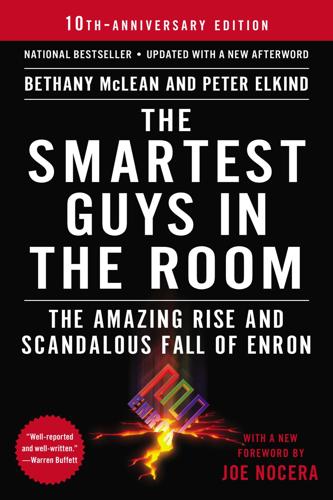
The Smartest Guys in the Room
by
Bethany McLean
Published 25 Nov 2013
Texaco and the other major oil companies were no longer content to trade merely as a price hedge. Now they hoped to make money purely on the act of trading. It wasn’t long before they all had trading desks. And it wasn’t just the energy industry that piled in. Wall Street firms like Drexel Burnham Lambert (whose most famous employee was Michael Milken) and Goldman Sachs jumped into the business. So did many less reputable players, sketchy fly-by-nighters who saw a chance to make quick profits. By some accounts, those early years in the oil-trading business were wild and woolly. There were all kinds of little scams being run, even by the reputable trading firms.
…
According to their view, what the Enron executives had done was nothing worse than what dozens of CEOs had done in Silicon Valley, where people who worked for companies with far less to offer than Enron had fed Internet hype, cashed out, and walked away unscathed. A more extreme version of this thinking was that Enron’s sins were not incompetence and fraud but rather innovation and free-spiritedness. Enron’s dwindling collection of defenders made the same argument as Michael Milken’s defenders had in the 1980s: They were being prosecuted because they were a threat to staid, old corporate America. “You can always tell who the pioneers are, because they’re the ones with arrows in their backs,” became their refrain. But that was a minority perspective. Most former Enron employees voiced outrage upon learning how their company had remained such a highflier for so long.

Fooled by Randomness: The Hidden Role of Chance in Life and in the Markets
by
Nassim Nicholas Taleb
Published 1 Jan 2001
Imagine the book being written in 1982, after the prolonged erosion of the inflation-adjusted value of the stocks, or in 1935, after the loss of interest in the stock market. Or consider that the United States stock market is not the only investment vehicle. Consider the fate of those who, in place of spending their money buying expensive toys and paying for ski trips, bought Lebanese lira denominated Treasury bills (as my grandfather did), or junk bonds from Michael Milken (as many of my colleagues in the 1980s did). Go back in history and imagine the accumulator buying Russian Imperial bonds bearing the signature of Czar Nicholas II and trying to accumulate further by cashing them from the Soviet government, or Argentine real estate in the 1930s (as my great-grandfather did).
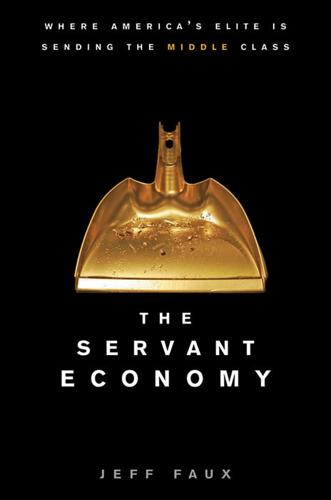
Servant Economy: Where America's Elite Is Sending the Middle Class
by
Jeff Faux
Published 16 May 2012
Moreover, their customers were often not just the average small investor but people in charge of large institutions, including pension funds, responsible for huge pools of money. When the junk bond–propelled market inevitably crashed in 1987, the Federal Reserve promptly flooded the market with cheap loans, keeping companies that should have been bankrupt afloat. Junk bond king Michael Milken was eventually indicted on ninety-six counts, including insider trading, illegal profiteering, and tax evasion. But the actual lesson was that crime pays. It cost Milken about six hundred million dollars in penalties, but he got to keep about a billion dollars for himself after spending less than two years in a minimum-security prison.
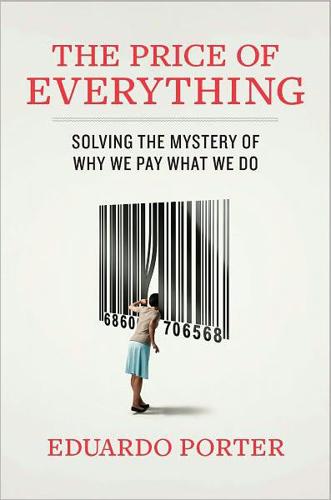
The Price of Everything: And the Hidden Logic of Value
by
Eduardo Porter
Published 4 Jan 2011
Banks pay enormous bonuses to draw the brightest MBAs or quantum physicists. These bright financiers, in turn, invent the fancy new products that make banking one of the most profitable endeavors in the world. Remember the eighties? Gordon Gekko sashayed across the silver screen. Ivan Boesky was jailed for insider trading. Michael Milken peddled junk bonds. In 1987 financial firms amassed a little less than a fifth of the profits of all American corporations. Wall Street bonuses totaled $2.6 billion—about $15,600 for each man and woman working there. Today, this looks like a piddling sum. By 2007 finance accounted for a full third of the profits of the nation’s private sector.
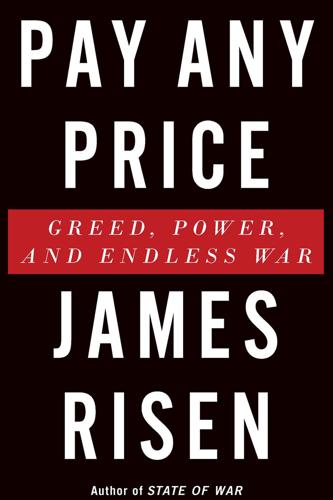
Pay Any Price: Greed, Power, and Endless War
by
James Risen
Published 15 Feb 2014
He usually came up short but that didn’t stop him from playing blackjack on a nightly basis, racking up unwieldy debts that eventually led to his 2010 arrest for bouncing more than $1 million in bad checks at Caesar’s Palace in Las Vegas. Gambling is how he met his first backer, Warren Trepp. Trepp got rich in the biggest casino of them all, Wall Street. He had been Michael Milken’s right-hand man in the heyday of Milken’s famous Beverly Hills trading desk during the “greed is good” era of insider trading in the 1980s. When a hungry federal prosecutor named Rudolph Giuliani went after Milken for insider trading, he tried to get Trepp to roll over on his boss. Trepp refused, even in the face of a threat that he would be charged himself if he failed to cooperate.
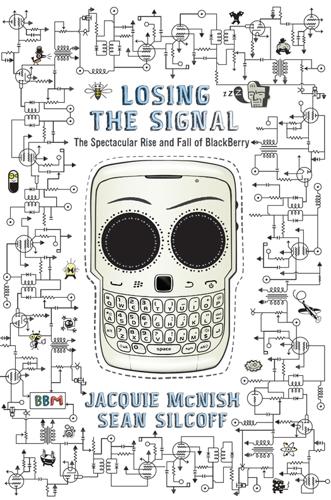
Losing the Signal: The Spectacular Rise and Fall of BlackBerry
by
Jacquie McNish
and
Sean Silcoff
Published 6 Apr 2015
“I was afraid you wouldn’t,” came a nervous reply. Balsillie was on his way back to Ontario. His friends were stunned by his career choice. Wall Street was the number one destination of any aspiring finance grad. It was the nerve center of what was then the biggest corporate takeover binge in history. Junk bonds, buyout barbarians, and Michael Milken were such household names that Hollywood named a blockbuster movie Wall Street. Balsillie’s Harvard peers had never heard of Waterloo and Canadian friends knew nothing of Sutherland-Schultz. “We were astonished. It didn’t seem to fit Jim’s game plan,” said Wright. What they failed to grasp was that Balsillie’s career vision had shifted: new spreadsheet applications at Clarkson Gordon revealed to him the power of technology.

Fool's Gold: How the Bold Dream of a Small Tribe at J.P. Morgan Was Corrupted by Wall Street Greed and Unleashed a Catastrophe
by
Gillian Tett
Published 11 May 2009
Morgan, it basked in the luxury of a triple-A credit rating. But within AIG, an entrepreneurial upstart subsidiary was booming. In the late 1980s, the company hired a group of traders who had previously worked for Drexel Burnham Lambert, which had infamously developed the junk bond business under the leadership of Michael Milken in the mid-1980s, before it blew up. They had been tasked by AIG with developing a capital-markets business, known as AIG Financial Products, which was based in London, where the regulatory regime was less restrictive. This was run by Joseph Cassano, a tough-talking trader from Brooklyn. Cassano was creative, bold, and highly ambitious.
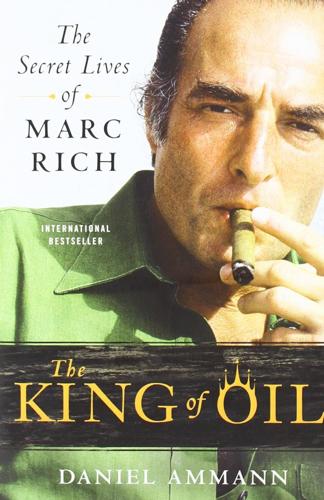
The King of Oil: The Secret Lives of Marc Rich
by
Daniel Ammann
Published 12 Oct 2009
He had actively supported Al Gore’s candidacy, and he was deeply frustrated over the election recount fiasco in his home state of Florida. He was in an even worse mood after he received a call from Michael Isikoff, a reporter for Newsweek. “Hi, Sandy. What do you think of the pardon?” the reporter asked. “Michael Milken got pardoned?” Weinberg asked with little sign of interest. “No, Marc Rich,” Isikoff answered. “I uttered a vulgarity,” Weinberg tells me. “ ‘This is outrageous,’ I thought. ‘This is just outrageous.’ ” In a staccato voice—one, two, three, four—he proceeds to list the four points that from his point of view made it impossible for the president to pardon Rich.
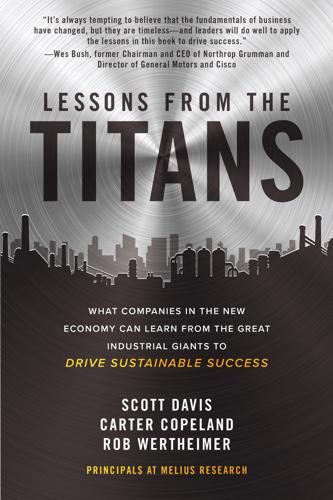
Lessons from the Titans: What Companies in the New Economy Can Learn from the Great Industrial Giants to Drive Sustainable Success
by
Scott Davis
,
Carter Copeland
and
Rob Wertheimer
Published 13 Jul 2020
With the unexpected success at Jacobs, the Raleses aimed for bigger acquisitions where Lean could be applied. But banks were naturally risk averse, and debt markets on Wall Street were still emerging, which brought Danaher into the world of junk bonds. After an introductory meeting with junk bond king Michael Milken, the Danaher team decided that junk bonds would supply the next stage of growth. In the late 1980s, junk bonds fueled both growth successes and debt excesses—and Milken was the gatekeeper. Companies now had a new tool to fund aggressive plans. Investors rushed to the higher yields provided. History shines a negative light on this era, but like anything else, there was both good and bad.

MegaThreats: Ten Dangerous Trends That Imperil Our Future, and How to Survive Them
by
Nouriel Roubini
Published 17 Oct 2022
Many financial markets experts and gurus have allowed me to connect my macroeconomic ideas with their market and asset price implications: Mohamed El Erian, George Soros, Louis Bacon, Alan Howard, Chris Rokos, Ray Dalio, Byron Wien, Stelios Zavvos, Steve Roach, David Rosenberg, Mark Zandi, Jim O’Neill, Luis Oganes, Joyce Chang, Lewis Alexander, Jens Nystedt, Robert Kahn, Joshua Rosner, Bill Janeway, Ron Perelman, Avi Tiomkin, Arnab Das, George Magnus, Christian Keller, Jan Hatzius, Richard Koo, Michael Milken, John Paulson, Xavier Botteri, Richard Hurowitz, Jeff Greene. There are also many public intellectuals and some media commentators who have shaped my thinking and views: Ian Bremmer, Martin Wolf, Fareed Zakaria, Eric Schmidt, Nicholas Berggruen, Gillian Tett, Richard Haass, Mustafa Suleyman, Jared Cohen, Andrew Ross Sorkin, Jacques Attali, Tom Keene, Jon Ferro.
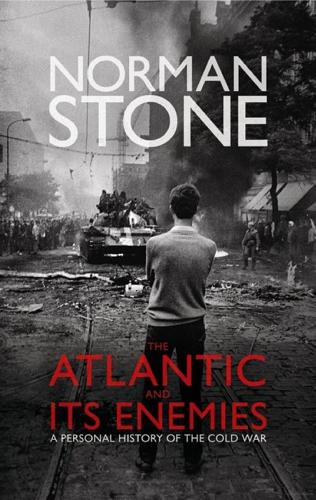
The Atlantic and Its Enemies: A History of the Cold War
by
Norman Stone
Published 15 Feb 2010
These involved a real risk, being bonds raised against the possibility of taking over, via the stock exchange, some firm or other, allegedly badly managed and overextended. In 1980 such bonds raised $5bn, but by 1986 almost $50bn, falling back to around $35bn thereafter. Their chief architect, Michael Milken, made himself vastly unpopular and eventually was imprisoned (though on a lesser offence). He financed Turner Broadcasting and many other well-known, now well-established, concerns, and two thirds of the ‘junk bond’ money went quite productively into such corporate growth, not into the spectacular takeovers.
…
In the mid-1980s Tim Congdon wrote in warning against what was happening, and was followed a decade later by Peter Warburton. They were proven right, but only a decade later, in 2008, when the bubble appeared to collapse, and trillions disappeared, the exports of Japan (at this moment of writing) dropping a quarter in a month (January 2009). But such works appeared in the 1980s to be wolf-crying. Michael Milken might be led off, to boos, in handcuffs. But a far greater drama was going ahead elsewhere: Moscow and Peking had noticed what was happening. 25 Floréal Moscow and Peking had supposed that the Third World would rescue them. In the Russian Revolution, the Bolsheviks had really won because they had recruited the earliest version of it: you could tell assorted downtrodden Eastern peoples that colonialism was the enemy, that Marxism was the friend.

Living in a Material World: The Commodity Connection
by
Kevin Morrison
Published 15 Jul 2008
Aron & Co, a family-owned commodity-trading business (Endlich, 2000) which had been a big precious metals trader until the gold price collapsed after its peak in January 1980. Morgan Stanley was also a new customer, as was Drexel Burnham Lambert, which is better known for employing junk-bond trader Michael Milken. ‘The cartel was breaking up and the trend was towards free-market oil pricing . . . once a commodity was established as a futures contract, it pretty much became a monopoly and a franchise . . . and I thought that if we could establish the franchise, it could last for ever and ever,’ said Marks.

The End of Illness
by
David B. Agus
Published 15 Oct 2012
To Max Nikias, Carmen Puliafito, and Eli Broad, for bringing me to USC, a remarkable academic home. To Sumner Redstone, for your unwavering belief in me. To Larry Norton, Danny Hillis, and Murray Gell-Mann, for making me think beyond my own discipline and putting up with my endless questions. To Lance Armstrong and the late Steve Jobs, for your unending inspiration. To Michael Milken and Stuart Holden for your encouragement over the past decade. To John Doerr and Mark Kvamme, for supporting my beliefs and me through the years. To Yossi Vardi and Joe Schoendorf for opening my eyes to health and technology outside the US. To Dan Case, Dennis Hopper, Raul Walters, and Johnny Ramone for teaching me to never give up.
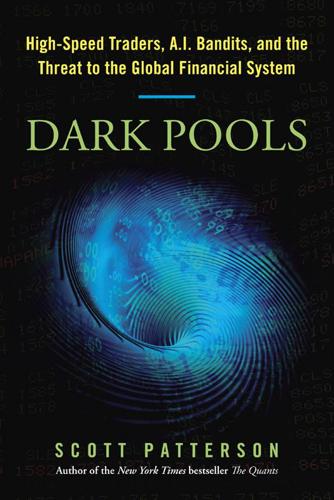
Dark Pools: The Rise of the Machine Traders and the Rigging of the U.S. Stock Market
by
Scott Patterson
Published 11 Jun 2012
Ex–Clinton aide James Carville would address the group the following morning. (It was nothing unusual. Past keynote speakers at the conference had included luminaries such as former Federal Reserve chairman Alan Greenspan, former secretary of state Colin Powell, and the onetime junk-bond king Michael Milken.) Mathisson hit the button, calling up a chart showing that cash had flowed out of mutual funds every single month through 2010, following the Flash Crash. Legions of regular investors had become fed up, convinced the market had become either far too dangerous to entrust with their retirement savings, or just outright rigged to the benefit of an elite technorati.

In FED We Trust: Ben Bernanke's War on the Great Panic
by
David Wessel
Published 3 Aug 2009
The call stretched on for more than two hours. “There were one or two points where someone said, ‘Well, suppose we don’t? What happens then?’” recalled Don Kohn, the Fed vice chairman. In 1990, the Fed had stood by when Drexel Burnham Lambert went under after it was accused of illegal shenanigans in the market for junk bonds pioneered by Michael Milken, the creative financier who ended up in jail. But this was a very different time. “It was the whole market environment,” Kohn said. “People were running from all kinds of financial counterparties,” he said. “Bear happened to be the weakest, so it was kind of the leading edge of the run. But it was clear that spreads were spiking out” — meaning that investors were demanding unusually high yields to buy anything besides the safest securities — “that banks and other financial firms were having increasing trouble raising money, that hedge funds were cutting back their exposure to all kinds of counterparties.
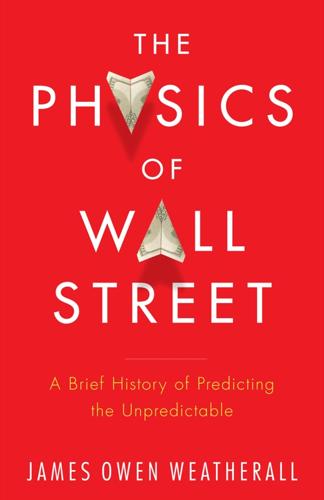
The Physics of Wall Street: A Brief History of Predicting the Unpredictable
by
James Owen Weatherall
Published 2 Jan 2013
And Princeton-Newport’s demise was particularly dramatic. On December 17, 1987, about fifty FBI, ATF, and Treasury Department agents pulled up in front of the firm’s Princeton office. The agents stormed into the building, looking for records and audiotapes regarding a series of trades the firm had made with the soon-to-be-indicted junk bond dealer Michael Milken. A former Princeton-Newport employee named William Hale had testified to a grand jury that Regan and Milken were engaged in a tax dodge known as stock parking. One downside to delta hedging and related strategies is that profits from short-term and long-term positions are taxed differently. So when you buy and sell at the same time, profits and losses that otherwise would cancel each other out don’t cancel from a tax perspective.
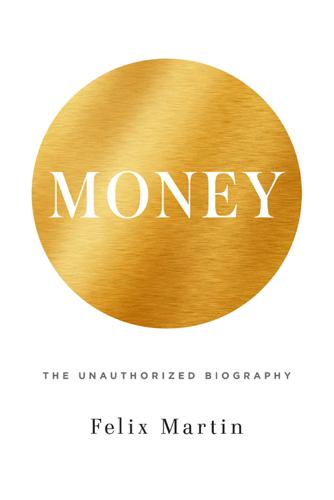
Money: The Unauthorized Biography
by
Felix Martin
Published 5 Jun 2013
With a large part of the commercial banking sector in repair mode, the credit markets took up the slack. By the end of 1993, they accounted for more than 60 per cent of U.S. corporate debt finance. A decade later, their share reached 70 per cent. And not only the scale, but the scope, of the credit markets was being transformed. When Michael Milken was almost single-handedly creating the market for bonds issued by small or risky companies from his famous Beverly Hills office in the early 1980s, few would have predicted that two decades later issuance of what were then derisively called “junk” bonds would grow to U.S. $150 billion a year, and displace a substantial part of the banking sector’s financing of Main Street U.S.A.24 An even bigger revolution was taking place in the provision of debt finance to individuals.
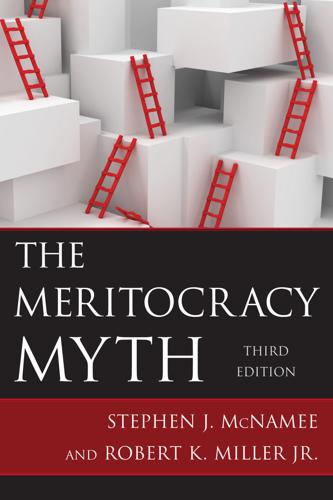
The Meritocracy Myth
by
Stephen J. McNamee
Published 17 Jul 2013
When white-collar crimes are exposed, the sums procured in their commission are often shocking—often totaling in the millions and sometimes even in the billions of dollars. The Ponzi scheme stock fraud perpetrated by Bernard Madoff (an ironic surname for a white-collar criminal) totaling $65 billion is one particularly noteworthy example. Other examples include the notorious and illegal stock manipulations of Ivan Boesky (deal stocks), Michael Milken (junk bonds), and Charles Keating (the savings-and-loan scandal); corporate wrongdoing, including ethics scandals at Enron, WorldCom, Arthur Andersen, Adelphia, Global Crossing, Tyco, and many others; and suspected misconduct in the vast mutual funds and mortgage industries that led to the near collapse of credit markets and the debilitating Great Recession that followed.
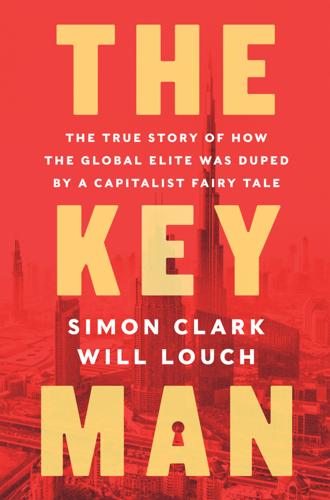
The Key Man: The True Story of How the Global Elite Was Duped by a Capitalist Fairy Tale
by
Simon Clark
and
Will Louch
Published 14 Jul 2021
* * * Arif launched into a new world tour in 2017 to spread the message that he was raising the new fund. Mark, Matt, and other Abraaj executives often tagged along. In Los Angeles Arif spoke at a conference that President George W. Bush also attended. Other speakers included the chiefs of JPMorgan and Google, and the conference organizer Michael Milken, an American billionaire philanthropist who was trying to rebuild his reputation after spending some time in jail for financial crimes. When Arif’s turn to speak about his endeavors came around, he compared himself to Moses, the biblical prophet. “It is about creating a better world,” Arif said.

Casino
by
Nicholas Pileggi
Published 13 Aug 2015
He was shot dead in what is now the 90210 zip code—Beverly Hills. By the 1970s, Las Vegas was poised for such unprecedented growth that the city was much too big to be dominated, or even influenced, by a bunch of men with funny accents and pinky rings. Public corporations like Sheraton, Hilton, and MGM, along with Wall Street investment bankers and Michael Milken’s Drexel Burnham Lambert, were becoming increasingly interested; tentative investments had already begun to turn what was essentially an inhospitable, crop-defying, windblown, alkaline-salted town on the eastern end of the Mojave Desert into the fastest-growing city in the United States. From 1970 to 1980, Las Vegas would double the number of its visitors, to 11,041,524, and the amount of cash left behind by those visitors would increase 273.6 percent, to $4.7 billion.
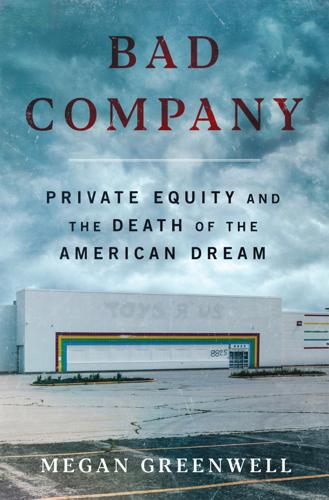
Bad Company
by
Megan Greenwell
Published 18 Apr 2025
Like his older brother Tony, he made his career at Drexel Burnham Lambert, the investment bank that, in the words of Barbarians at the Gate authors Bryan Burrough and John Helyar, “transformed the [leveraged buyout] industry from a Volkswagen Beetle into a monstrous drag racer belching smoke and fire.” Ressler had been at Drexel when an SEC investigation into insider trading and securities fraud began, one that would eventually lead to the company’s collapse. The infamous case also resulted in a prison sentence for executive Michael Milken, who had become known as the “junk bond king” for his use of risky debt to finance leveraged buyouts. But the scandal didn’t taint Drexel’s reputation as the prime breeding ground for private equity executives. After leaving the firm, Richard Ressler started what became a small but successful investment firm called Orchard Capital.
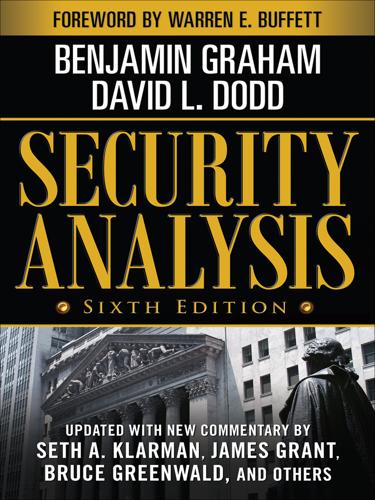
Security Analysis
by
Benjamin Graham
and
David Dodd
Published 1 Jan 1962
You can throw in, for good measure, the net asset value and reputation of the world’s most intelligent hedge fund, Long-Term Capital Management (LTCM). The second right answer is that each was an investment disaster whose perils could have been avoided by a patient reading of Security Analysis. Graham and Dodd wrote the first edition in 1934 and first revised it in 1940—some four decades before Michael Milken became a household name and three score years in advance of the frenzy for no-documentation, adjustable-rate mortgages. The authors advocated more than a merely generalized skepticism. They prescribed (as we will see) a series of specific injunctions, each of which would have served as a prophylactic against one or more of the above-named fiascos and their associated investment fads.
…
• Likewise, Graham and Dodd submitted that “the best criterion that we are able to offer [for the purpose of assessing the margin of assets over indebtedness] is the ratio of the market value of the capital stock to the total funded debt.” (p. 150 on accompanying CD) This was paralleled exactly by the market-adjusted debt (MAD) ratios popularized by Michael Milken when he pioneered the issuance of high yield bonds at Drexel Burnham Lambert in the 1970s and 1980s. Market values are far from perfect, but accounting data are purely historical and thus are often out-of-date at best and irrelevant at worst. • Importantly, Graham and Dodd highlight the importance of cash flow stability in a company’s ability to service its debts in an adverse environment.

The Blockchain Alternative: Rethinking Macroeconomic Policy and Economic Theory
by
Kariappa Bheemaiah
Published 26 Feb 2017
Government is the problem” (Wisensale, 2001). His strategy was thus to take away economic decision-making powers from the government and hand it to the financial markets and Wall Street. Unsurprisingly, this became a moment of opportunity for most Wall Street bankers. One of the bankers who leapt at this opportunity was Michael Milken, the future founder of the Milken Institute. Milken had invented a debt instrument called high-yield bonds (which the established banks called junk bonds ) which he had used as a way to raise vast sums to build casinos in Las Vegas. Casinos were a business most banks avoided, as they were too risky.

Siege: Trump Under Fire
by
Michael Wolff
Published 3 Jun 2019
It was a big-donor event. Sheldon Adelson, worth $34 billion, was there, along with Harold Hamm, the shale oil mogul, worth $13 billion; Steve Schwarzman, the Blackstone CEO, worth $12 billion; Dan Gilbert, the founder of Quicken Loans and owner of several sports franchises, worth $6 billion; Michael Milken, the former Wall Street trader and junk bond king who went to jail in the early 1990s for insider trading, worth $4 billion; and Ron Cameron, an Arkansas poultry mogul, and Tom Barrack, the Trump friend and real estate mogul who had managed the president’s inauguration, each worth a billion. Also attending the party that night was Franklin Graham, the son of the evangelical preacher Billy Graham, who had been uncompromising in his support of Trump, and Betsy DeVos, the only cabinet secretary in attendance (and a billionaire herself).
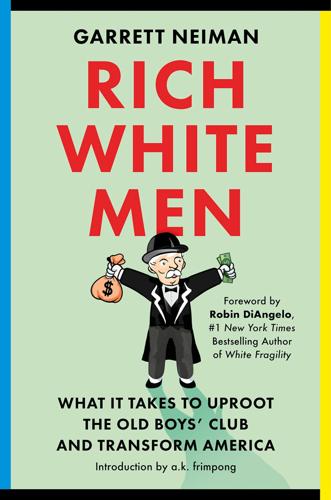
Rich White Men: What It Takes to Uproot the Old Boys' Club and Transform America
by
Garrett Neiman
Published 19 Jun 2023
Rockefeller bankrolled the General Education Board, which—among other activities—built more than nine hundred high schools and developed programs to modernize farming practices in the American South.3 Carnegie built 2,509 libraries.4 A century later, many rich white men still see school reform and expanded extracurricular options as the primary paths for children from marginalized backgrounds to secure opportunities and experience mobility. I saw the dominance of this viewpoint at the annual Milken Institute Global Conference, an event hosted by billionaire and convicted white-collar criminal Michael Milken that attracts four thousand business and political leaders to Los Angeles. At the conference, a white male philanthropist had invited me to attend—as his guest—a private lunch meeting with financial elites and education leaders. Much of our discussion focused on the Los Angeles Unified School District, America’s second-largest school district and one that has struggled for decades, through several waves of well-meaning reforms.
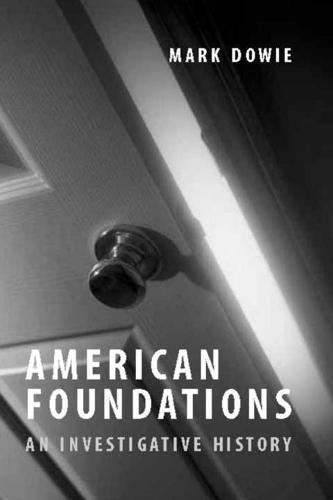
American Foundations: An Investigative History
by
Mark Dowie
Published 3 Oct 2009
It is what Milton Friedman calls "the dismantling of the public monopoly," which "can only be achieved by privatizing a major segment of the education system, allowing a private, for-profit industry to develop and offer effective competition to public schools."" Conservative foundations of the late-1990s rose to the call and designed what Wall Street now calls EMOs-Education Maintenance Organizations. Privately owned and operated EMOs like the Edison Project, EduVentures, and Michael Milken's Knowledge Universe offer to take over individual schools, school districts, or entire urban school systems and run them on contract as for-profit ventures. The New American School Development Corporation, which began as a government venture and offers a wide variety of educational systems and philosophies, from right to left, is now an EMO.
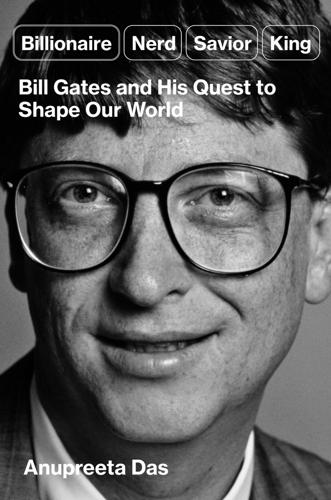
Billionaire, Nerd, Savior, King: Bill Gates and His Quest to Shape Our World
by
Anupreeta Das
Published 12 Aug 2024
Nerds 1.0 and 2.0 The 1980s were the go-go years for Wall Street. Hostile takeovers were new and thrilling, and celebrity dealmakers had cultural capital. It was a place driven by excessive greed, outsized bets, and financial scandal, and it was immortalized in books like Den of Thieves, The Predators’ Ball, and Barbarians at the Gate. Ivan Boesky and Michael Milken, for a time, became synonymous with financial crime. The takeover of RJR Nabisco established the private equity business as an untamed, acquisitive new force with the potential for economic harm rather than good. Literature and popular culture provided the harmony to the main tune of Wall Street in that decade.
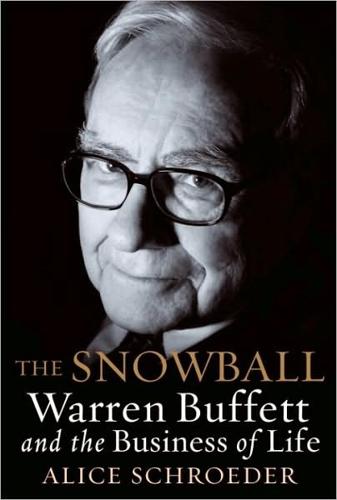
The Snowball: Warren Buffett and the Business of Life
by
Alice Schroeder
Published 1 Sep 2008
The people who worked in the junk-bond departments on Wall Street were junk peddlers or ragpickers—the few bankers who scouted for hag-ridden executives willing to issue junk bonds, and “distressed debt” analysts who spent their careers grading papers in the gloomy school of hard knocks, looking over picked-clean balance sheets and scuttlebutting bankruptcy lawyers, angry investors, and desperate managements. Everything changed when Michael Milken, chief junk peddler of the upstart investment bank Drexel Burnham Lambert, rose to become the most influential man on Wall Street through a simple proposition: that while individual “fallen angel” junk bonds were risky, buying a bushel of them was not, because on average, the higher interest rate more than compensated for the risk.
…
The bankers’ fees became so staggering that, instead of waiting for deals to present themselves, the bankers went a-huntin’ on their own, flipping through the ranks of the S&P 1000 the way Buffett had once used his Moody’s Manuals to find cigar-butt stocks. This orgy of mergers that often took place with the consent of only one party riveted the public; the clashes of titanic egos filled the daily papers. Michael Milken’s annual junk-bond conference, the Predators’ Ball,6 lent its name to the entire era. Buffett scorned the way these deals transferred riches from shareholders to managers and corporate raiders, helped by a long, long line of toll-taking bankers, brokers, and lawyers.7 “We don’t do hostile takeovers,” he said.
…
Brown Shoes, and turned to his secretary at Salomon, Paula Orlowski, sending her to the library to delve into computer files in search of SEC documents on Morse Shoe, another footwear maker that had recently filed for bankruptcy.37 Nevertheless, Salomon demanded most of his attention. Piled on top of other, earlier scandals—Ivan Boesky, Michael Milken at Drexel Burnham Lambert—the Salomon affair had fueled the perception that Wall Street was utterly corrupt. In the wake of Buffett’s performance before Congress, a raft of other brokerage firms rushed to the confessional and followed suit.38 By now, Salomon’s investigators had discovered that Mozer had bid more than thirty-five percent on eight separate occasions, submitting false customer bids or jacking up customer bids and taking the extra bonds into Salomon’s own account without informing the clients whose names had been used.
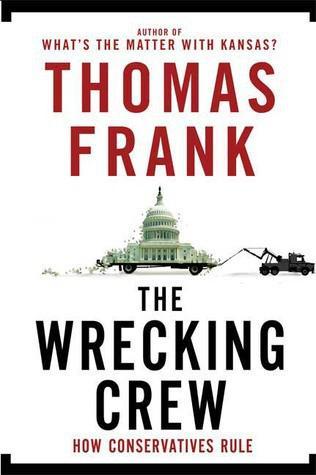
The Wrecking Crew: How Conservatives Rule
by
Thomas Frank
Published 5 Aug 2008
(Since “we are all better off the faster share prices reach their correct levels,” as he put it.)17 That friend of the freedom fighter Jack Wheeler has praised the Internet for making “money laundering available to anyone, not just to huge multinationals and international drug cartels.”18National Review put up a spirited defense of Michael Milken’s corporate takeover strategies throughout his troubles with the law.19 And then there is price fixing, the defense of which was the subject of the first Wall Street Journal op-ed I ever read. It gave me such a shock that I remember the argument to this day: It wasn’t that ADM (the agribusiness giant that was then much in the news) was innocent of conspiring to set prices with one of its competitors, but that government had no business criminalizing such things in the first place.20 Always would the argument thus return to the libertarian basics: the tyranny of the regulatory state and the oppression under which it ground the entrepreneur and the hardworking stockholder.
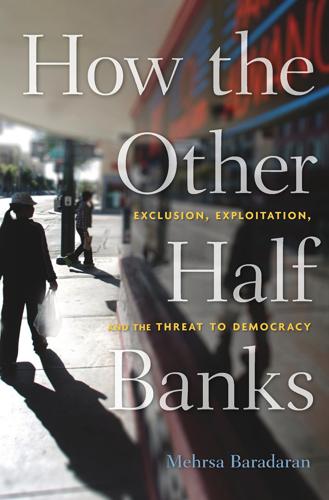
How the Other Half Banks: Exclusion, Exploitation, and the Threat to Democracy
by
Mehrsa Baradaran
Published 5 Oct 2015
See Jennifer Taub, Other People’s Houses (New Haven, CT: Yale University Press, 2014), 277–278. It discusses the Levin-Coburn Report, which “included more than eighty pages focused exclusively on the regulatory failure at … the OTS.” 157. James Grant, Money of the Mind: Borrowing and Lending in America from the Civil War to Michael Milken (New York: Farrar, Straus and Giroux, 1992), 92–95. 158. Ibid., 92. 159. Peter W. Herzog, The Morris Plan of Industrial Banking (Chicago: A.W. Shaw Company, 1928), 12–13. Testifying before Congress, Morris repeatedly explained his desire to supply credit to the poor and working classes. House Committee on Banking and Currency, Control and Regulation of Bank Holding Companies: Hearings on H.R. 2674, 84th Cong. 585 (1955); Senate Subcommittee on Banking and Currency, Providing for Control and Regulation of Bank Holding Companies: Hearings on S. 829, 80th Cong. 98 (1947) (statement of Arthur J.

The Black Box Society: The Secret Algorithms That Control Money and Information
by
Frank Pasquale
Published 17 Nov 2014
“Understanding Corporate Networks—Part 2: Control without Voting,” OpenCorporates (blog), October 31, 2013, http:// blog.opencorporates.com /2013 /10 /31 /understanding -corporate -networks -part-2 -control -without -voting/. 76. Graham Harman, Prince of Networks: Bruno Latour and Metaphysics (Melbourne: re.press, 2009), 32. 77. William W. Bratton and Adam J. Levitin, “A Transactional Genealogy of Scandal: From Michael Milken to Enron to Goldman Sachs,” Southern California Law Review 86 (2013): 783–868. 78. Simkovic, “Secret Liens and the Financial Crisis of 2008.” 79. James K. Galbraith, “Tremble, Banks, Tremble,” The New Republic, July 9, 2010, http://www.tnr.com /article/economy/76146/tremble-banks-tremble. 80.
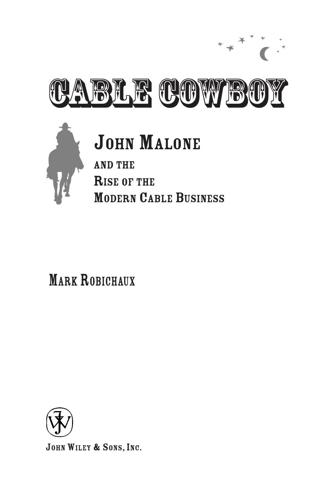
Cable Cowboy
by
Mark Robichaux
Published 19 Oct 2002
Still, Magness kept a positive attitude in the next few days, as the list of visitors to his hospital room grew to include Larry Romrell and Bob’s sons, Gary and Kim. When Sharon took Bob shopping a few days later in a nearby sporting goods store, Sharon offered to buy him several shirts he had picked up. But Magness stopped her. The message was clear: Let’s wait and see whether I make it.2 Desperate to help, Malone called Michael Milken, the junk bond impresario who had pleaded guilty to breaking securities laws in 1990 and later staged a remarkable comeback from prostate cancer. TCI had been a client of Drexel Burnham Lambert’s in the 1980s, 9486_Robichaux_03.f.qxd 8/28/02 9:54 AM Page 199 De at h of a C owboy and Milken’s junk bonds had financed much of the cable industry.
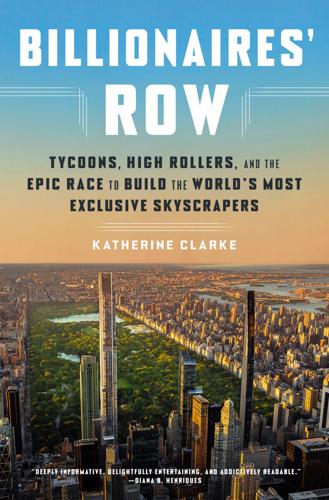
Billionaires' Row: Tycoons, High Rollers, and the Epic Race to Build the World's Most Exclusive Skyscrapers
by
Katherine Clarke
Published 13 Jun 2023
Though he had never met Kuba before, Heller was struck by the investor’s focused, intense bearing, and the pair fell into an easy rapport. CIM had been founded in 1994 by Kuba and his friend Avi Shemesh, both former Israeli paratroopers, and Richard Ressler, a former investment banker at Drexel Burnham Lambert, the firm famously forced into bankruptcy thanks to illegal dealings by the billionaire junk bond king Michael Milken. Ressler moved in extremely affluent and well-connected circles. His brother Tony had founded the private equity giant Apollo Global Management, which had quickly become one of the finance industry’s most influential dealmakers, and their sister Debra had married Apollo’s other co-founder, Leon Black.
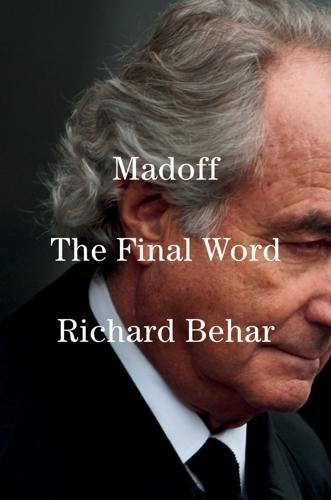
Madoff: The Final Word
by
Richard Behar
Published 9 Jul 2024
The 1951 espionage trials of husband and wife Julius and Ethel Rosenberg and Alger Hiss. The administration of President Richard M. Nixon’s failed attempt to stop the New York Times from publishing the damning Pentagon Papers in 1971. The Ivan Boesky insider trading case in 1986. Junk-bond king Michael Milken (1990). Mob boss John Gotti (1992). Omar Abdel Rahman, the “blind sheikh” behind the first terrorist bombing of the World Trade Center, in 1993. Plus dozens of other notable cases. And now the Madoff Five, a case brought by the most prestigious prosecutorial corps in the world: the US Attorney’s Office for New York’s Southern District.
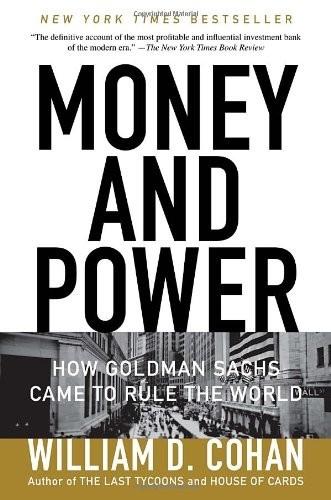
Money and Power: How Goldman Sachs Came to Rule the World
by
William D. Cohan
Published 11 Apr 2011
And, of course, he was feeling—acutely—a need for a clean break from his still-hidden past with Boesky and the Kidder arbitrage department. He thought a move to Drexel, at triple his Kidder pay, would be the answer. Joseph had first contacted Siegel about coming to Drexel in June 1985. The attraction for both sides was obvious: it was the opportunity to marry Drexel’s financing prowess, under the leadership of junk-bond king Michael Milken (whom Tenenbaum had once recruited heavily to come to Goldman), with Siegel’s highly regarded M&A skills. The combination would be a powerful one in the marketplace. In February 1986, Siegel said his perfunctory good-byes to Albert Gordon, one of Kidder’s founders, and to DeNunzio, and he left Kidder.
…
“When securitization arrived,” explained Salim “Sandy” Lewis, a onetime Wall Street arbitrageur, “the ‘I buy’ moment in mortgage making evaporated. Accountability vacated. Fees replaced liability, as liability was sent offshore, on advice of compliant, crooked counsel. This is enabling. All of them did it.” Of course, as with any innovation on Wall Street—the introduction of junk bonds in the 1980s (courtesy of Michael Milken, at Drexel Burnham Lambert), the bridge loan in the 1980s (courtesy of the late Bruce Wasserstein, then at First Boston), or the Internet IPO in the late 1990s based on nothing more than the number of claimed “eyeballs” on a fledgling website (courtesy of Frank Quattrone, then at Morgan Stanley)—it was just a matter of a short amount of time before the new idea was replicated, and often improved upon, by the competition, especially when there was money—always lots of money—to be made.
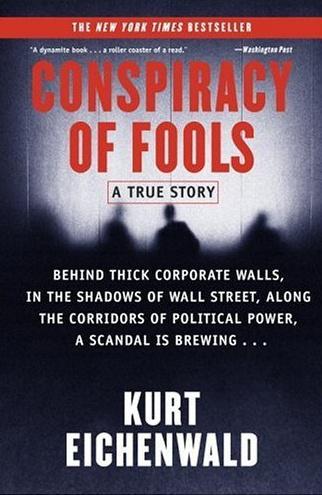
Conspiracy of Fools: A True Story
by
Kurt Eichenwald
Published 14 Mar 2005
CHAPTER 11 EARLY ON A THURSDAY afternoon, Ken Lay escorted a man through crowds of Enron executives who were milling about the main floor at the Hyatt Regency Hill Country Resort. Several gaped as the two passed by, recognizing Lay’s guest. The ill-fitting toupee was gone, and the years had softened his sharp, angular features. Even so, no executive was likely to forget Michael Milken, the former junk-bond king who had once been at the epicenter of Wall Street’s crime wave in the 1980s. Weeks before, Lay had invited Milken to attend Enron’s annual San Antonio management conference out of a mounting sense of anxiety. In meetings, in hallways, in every discussion at the office, Lay had detected a growing swagger, an unrestrained boastfulness in the executive ranks.
…
A wall of French doors coaxed in the late-afternoon sun, spilling shimmers of light across the crowded conference table. Some of the most influential members of Los Angeles’s political and financial community were there. To one side was Richard Riordan, the city’s mayor. Across the table sat Michael Milken, the disgraced financier turned philanthropist. And on one end was Arnold Schwarzenegger, the movie star who had recently begun dipping his toe in California’s political waters. The group was there to discuss the continuing crisis in the state’s energy markets. Lay, who was the primary speaker, explained that Enron and Southern California Edison were working together on devising a solution that would require some action by the legislature.

Culture and Prosperity: The Truth About Markets - Why Some Nations Are Rich but Most Remain Poor
by
John Kay
Published 24 May 2004
In 1980, General Motors dismissed contemptuously an inquiry from its largest shareholder, the Californian public employees retirement plan, about its succession planning. In the 1980s, corporations were urged to direct economic rents exclusively to shareholders. The threat of hostile takeover focused managers on the pursuit of "shareholder value." Imaginative financiers put together packages that made it possible to attack even the largest of companies. Michael Milken, who put together some extraordinary deals for shady figures in the United States, was jailed, and the firm for which he worked, Drexel Burnham Lambert, went into liquidation. 10 But the effect ofhis activities led to a continuing emphasis on shareholder value even if Milken himself was out of business.
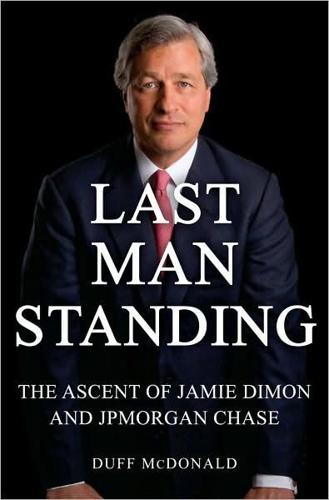
Last Man Standing: The Ascent of Jamie Dimon and JPMorgan Chase
by
Duff McDonald
Published 5 Oct 2009
At one point, when Dimon tried to jump into the conversation, Cole cut the young man off. “I’m sure you’re smart,” he said. “But I already have two geniuses here to answer my questions. I don’t need to hear from the junior genius as well.” • • • The following year was one of wrenching change in the financial markets. Michael Milken, the junk bond king at Drexel Burnham Lambert, was engulfed in an insider trading scandal, and would soon be indicted on racketeering charges. It was a stunning reversal of fortune for the firm, which in 1986 had been the most profitable investment bank on Wall Street. An era of swashbuckling buyouts and takeovers was coming to a shattering close.
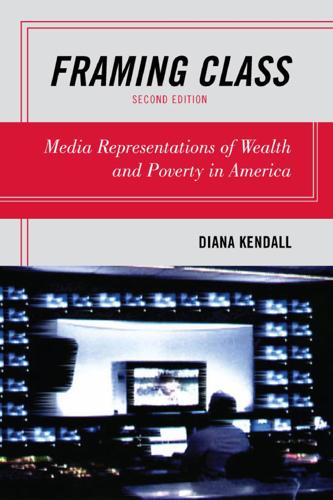
Framing Class: Media Representations of Wealth and Poverty in America
by
Diana Elizabeth Kendall
Published 27 Jul 2005
According to sociologist Gregory Mantsios, the media send several messages about the wealthy as bad apples: On rare occasions, the media will mock selected individuals for their personality flaws. Real estate investor Donald Trump and New York Yankees owner George Steinbrenner, for example, are admonished by the media for deliberately seeking publicity (a very un–upper class thing to do); hotel owner Leona Helmsley was caricatured for her personal cruelties; and junk bond broker Michael Milken was condemned because he had the audacity to rob the rich.23 As Mantsios suggests, some of the wealthy can be viewed as bad apples because they seek the media spotlight to further their own causes and financial interests. New York real estate developer Donald Trump is an example. Over the years, Trump has been available to the media for profiles about his empire, including his numerous high-rise buildings and development projects in New York City and his hotels and casinos in Atlantic City, New Jersey. 9781442202238.print.indb 61 2/10/11 10:46 AM 62 Chapter 3 Despite his billions, Trump at one time appeared in McDonald’s ads selling dollar-priced sandwiches,24 and he hosts reality shows like The Celebrity Apprentice, on which candidates vie to win money for their favorite charity, and The Apprentice, which pits noncelebrities against each other as they seek to win an at least six-figure prize—a job with the Trump organization.
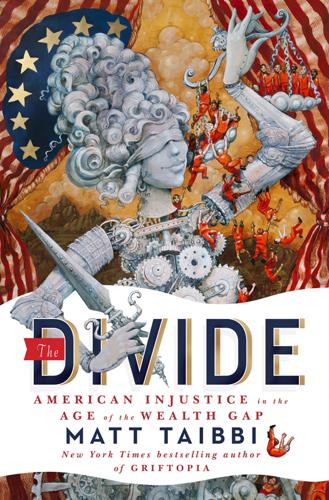
The Divide: American Injustice in the Age of the Wealth Gap
by
Matt Taibbi
Published 8 Apr 2014
From the Drexel Burnham Lambert insider trading case in 1988 (which led to the demise of one of the biggest houses on Wall Street) to the Daiwa Bank case in 1996 (in which the Japanese powerhouse was caught hiding billions of losses and was ultimately fined a record $340 million by Janet Reno’s Justice Department) to the infamous Bankers Trust case in 1999 (in which the bank was caught diverting unclaimed customer funds in order to boost its profits), federal prosecutors for more than a decade had put together a not-entirely-unimpressive record of busting high-level white-collar offenders. Ivan Boesky, Michael Milken, and Charles Keating were sixteen-point bucks on the Justice Department wall, and there was quantity as well as quality in the prosecutorial record, with more than a thousand defendants put in the dock and more than eight hundred actually sent to jail for crimes that had led to the country’s last serious financial crisis, the savings and loan disaster.
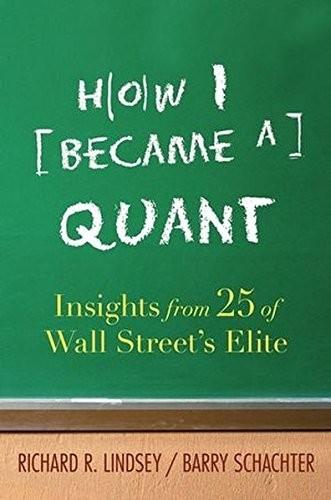
How I Became a Quant: Insights From 25 of Wall Street's Elite
by
Richard R. Lindsey
and
Barry Schachter
Published 30 Jun 2007
Tom was a professor at Boalt Hall, the Berkeley law school, and a former U.S. Supreme Court clerk. He was bright, outspoken, cheerful, and aggressive; ready to take on all challenges and win. What followed was a string of cases, mostly related to junk bonds: the U.S. government’s case against Michael Milken et al., the bankruptcy of First Capital Holdings, and various S&L collapses. I analyzed data, reviewed business practices, and explained to the lawyers what the players were doing, and why. For me it was like instant experience. As I sifted through the endless memos and reports, I could follow the internal discussions in the subject businesses, review the decisions, analyze the motives, and evaluate the actions.
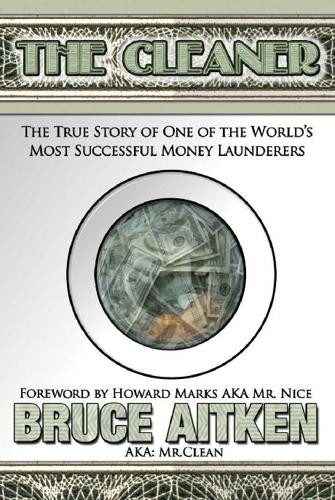
The Cleaner: The True Story of One of the World's Most Successful Money Launderers
by
Bruce Aitken
Published 2 Mar 2017
He never skipped a beat, dealing electronically by email and phone—the consummate deal-maker. The weekend I visited him, I believe to impress me, he told me of his frequently calls with the likes of Saudi billionaire and “partner”Adnan Koshoggi and the wife, for some unknown reason, of convicted Brexel Burnham Lambert “Junk Bond King”, and wealthy philanthropist, and partner, Michael Milken. With failing health, an apparent stroke a year or two later, he was definitely better off in Bangkok where his family and children could visit him. There, he would have plenty of baht, and still might hopefully find something of real value in his life; something that couldn’t be squandered by an addiction to the thrill of the game.

Mastering Private Equity
by
Zeisberger, Claudia,Prahl, Michael,White, Bowen
,
Michael Prahl
and
Bowen White
Published 15 Jun 2017
Throughout the 1970s and for most of the 1980s, we had lived in a US and venture-centric world. Now, the buyout business was emerging as a new practice within the world of private equity. Pioneered by KKR, CD&R and a handful of other firms, the use of leverage to buy and manage a company was a new idea. The development of the high yield bond market, led by Michael Milken of Drexel Burnham Lambert, made this practically possible on a much wider scale than previously thought. Heretofore, “junk bonds” were formerly high grade bonds of companies that got into trouble and were in or likely to be in default. The idea of a new issue “junk bond” was a new concept. In 1980 only $180 million was raised for buyout funds in the US.
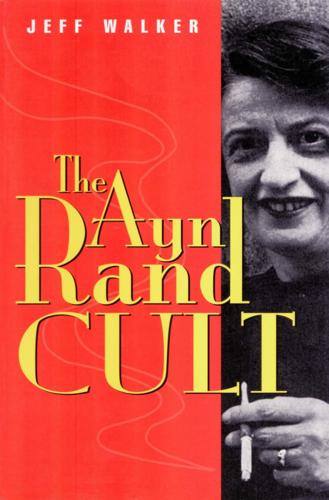
Ayn Rand Cult
by
Jeff Walker
Published 30 Dec 1998
New York: Longman Financial Services, 1989. Aristotle. Ethics. Revised translation by Hugh Treddinick. London: Penguin, 1976. Ayn Rand Letter, The. Volumes 1–4, 1971–1976. New Milford: Second Renaissance, 1990. Baida, Peter. Poor Richard’s Legacy: American Business Values from Benjamin Franklin to Michael Milken. New York: Morrow, 1990. Baker, James T. Ayn Rand. Boston: Hall, 1987. Baker, Marc. Objectivism In Israel. Full Context (November 1992): pp. 9–11. Baker, Robert A. They Call It Hypnosis. Buffalo: Prometheus, 1990. Barash, David P. Beloved Enemies: Our Need for Opponents. Amherst: Prometheus, 1994.

Masters of Management: How the Business Gurus and Their Ideas Have Changed the World—for Better and for Worse
by
Adrian Wooldridge
Published 29 Nov 2011
And most other American companies, from DuPont in chemicals to General Electric in engineering, adopted their own variations of the same theme. Yet from the 1970s onward, Sloanism came under attack on four fronts. The Japanese opened the first front by inundating Western markets with better, cheaper, more reliable goods through “lean” production based on teamwork, which avoided both the alienation and the waste of Sloan’s system. Michael Milken, the junk bond king, and Michael Jensen, the leading theoretician of shareholder value, opened the second front, demonstrating that Sloanism had allowed many American firms to be hijacked by managers more interested in their pay and perks than in shareholder value. Steve Jobs and other Silicon Valley entrepreneurs opened the third front, demonstrating that you can succeed in business without growing a giant bureaucracy.
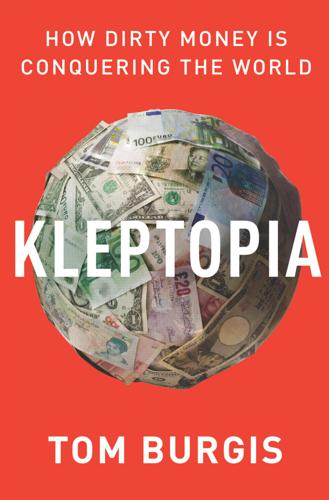
Kleptopia: How Dirty Money Is Conquering the World
by
Tom Burgis
Published 7 Sep 2020
He would liken himself to the author trying to write a bestseller. He wanted money because he felt the power it would bring him. It was three years since Sasha’s name had first appeared on the Forbes list. Next to it, his ‘net worth’, as they called it: $1 billion. He was, along with Bill Gross, Martha Stewart, Michael Milken, Wilbur Ross and sixty-six others, the joint 620th richest person in the world. That was a triumph, for sure. And now, a greater one: here he was among the money kings, in the flesh, welcoming luminary after luminary to the Banqueting House. Ivan Glasenberg was there. He ran Glencore, a commodities trading house based in Switzerland, and probably exerted more influence over the flow of the global economy’s raw ingredients than any man living.
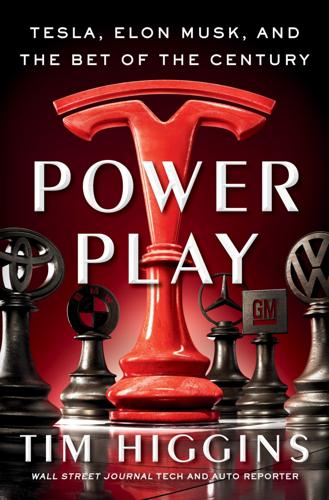
Power Play: Tesla, Elon Musk, and the Bet of the Century
by
Tim Higgins
Published 2 Aug 2021
He was hailed in The Wall Street Journal and other media for his gutsy call. He went on to set up his own fund and found continued success into the early 1990s, shorting regional banks and other financial institutions that had exposure to the collapse of real estate in Texas, California, and New England. He also found success in shorting Michael Milken’s junk-bond kingdom. His run saw his fund rise at twice the rate of what the S&P Index did in the same years, more than quadrupling in value until his luck ended in 1991, when the overall market turned sour. He had made some bad bets over the years. He took a short position on McDonnell-Douglas in the ’90s.

Make Your Own Job: How the Entrepreneurial Work Ethic Exhausted America
by
Erik Baker
Published 13 Jan 2025
Following a 1979 amendment to the Employee Retirement Income Security Act (ERISA) that allowed pension funds to make riskier investments, institutional investors helped to finance a wave of “hostile takeovers” and other leveraged buyouts of major American corporations. A “corporate raider” would contract an investment banker—such as Drexel Burnham Lambert’s Michael Milken, the highest-compensated man in America in the late 1980s—to amass capital from institutional investors by selling high-risk, high-yield “junk bonds,” and then use the capital to buy the target corporation, restructure it, and sell it for a profit.28 Consultants invoked the specter of hostile takeover to encourage executives to enlist their expertise before it was too late.
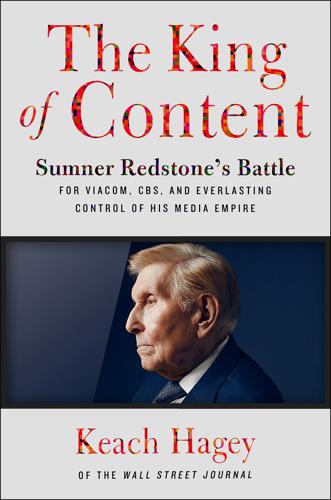
The King of Content: Sumner Redstone's Battle for Viacom, CBS, and Everlasting Control of His Media Empire
by
Keach Hagey
Published 25 Jun 2018
They erected a stage in the backyard under a tent, where a four-course dinner was served, and the entertainment was provided by Sumner’s good friend Tony Bennett, who thanked Sumner for “putting me on MTV and making me a bigger star than I ever was.” Dauman, Moonves, and Grey were there, as were old friends Bob Evans, Sherry Lansing, Jeffrey Katzenberg, Michael Milken, and Michael Eisner. Shari and her children came, and so did ex-wife Phyllis. Every one of them, alongside Sydney, Manuela, and Manuela’s kids, took part in an elaborate birthday video in Sumner’s honor, “created with love by Sydney and Manuela.” Sydney, sitting next to a giant teddy bear with a white toy poodle on her lap, made it clear that she thought of herself as Sumner’s family, saying, “I’m so excited to be spending your birthday with all our family and friends.”

The House of Morgan: An American Banking Dynasty and the Rise of Modern Finance
by
Ron Chernow
Published 1 Jan 1990
Like many embezzlers, Gebauer planned to make restitution someday. Much like the Brazilians he rescued, he was defeated by the interest, not the principal, accumulating on his burdensome debt—$2 million of it. Late in the summer of 1985, after a twenty-four-year Morgan career, he left for Drexel Burnham Lambert, to work with Michael Milken on a special project to repackage Third World debt into junk bonds (the 1920s solution). Some at Morgans thought his career had been derailed by the controversial Brazilian debt rescheduling. Shortly after he left, the bank was alerted to his crime by a puzzled Brazilian client whose money supposedly on deposit in New York was wired from Venezuela.
…
In 1988, Merrill Lynch, once scorned as plebeian, led domestic underwriters for the first time as Morgan Stanley slumped to sixth place. Morgan mostly pursued junk bonds, now the most profitable form of underwriting and an indispensable adjunct to takeover work. When Drexel Burnham lost ground with the investigation into junk bond king Michael Milken, Morgan Stanley briefly emerged as the top junk bond firm in America! Did the ghosts of Pierpont, Jack, and Harry Morgan shudder? Morgan Stanley was an undoubted success story, an awesome performer. For over fifty years, it had stood at or near the peak of investment banking—a claim no other firm except First Boston could make.
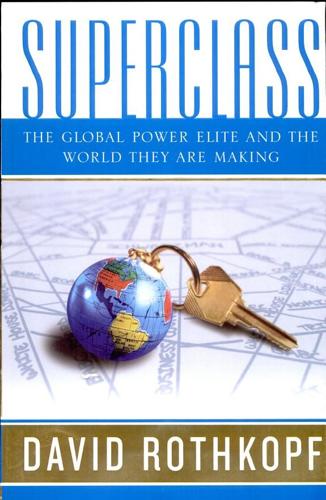
Superclass: The Global Power Elite and the World They Are Making
by
David Rothkopf
Published 18 Mar 2008
From behind the scenes, it was clear that these individuals influenced everything from the way currencies were priced worldwide to which political candidates would have sufficient funding for their presidential campaigns. The people I met from that era included financing titans who were destined for greatness, like future Blackstone CEO Steve Schwarzman and future New York City mayor Mike Bloomberg; a few who later ran afoul of the law, like Michael Milken and Ivan Boesky; godfathers of globalization, like Citibank CEO Walter Wriston and Chase Manhattan Bank chairman David Rockefeller; and countless others in London, Tokyo, Frankfurt, Paris, and other financial capitals. At IMP, we published newspapers covering the big annual meetings of the financial community like the Joint Annual Meeting of the International Monetary Fund (IMF) and World Bank, and meetings of the regional development banks.

The Zero Marginal Cost Society: The Internet of Things, the Collaborative Commons, and the Eclipse of Capitalism
by
Jeremy Rifkin
Published 31 Mar 2014
Understanding and chronicling all the relationships between genes, tissues, organs, organisms, and external environments, and the perturbations that trigger genetic mutations and phenotypical responses, is so far beyond any kind of complex system ever modeled that only an interdisciplinary approach, leaning heavily on the computational skills of the information scientists, can hope to accomplish the task. Titans in the computer field like Bill Gates and Wall Street insiders like Michael Milken poured funds into the new field of bioinformatics in hopes of advancing the collaborative partnership of the information and Life Sciences. Computers are not only being used to decipher and store genetic information. They are also being used to create virtual biological environments from which to model complex biological organisms, networks, and ecosystems.
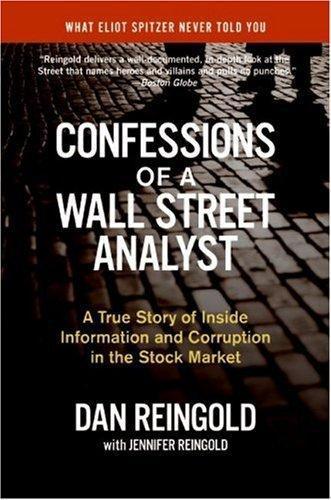
Confessions of a Wall Street Analyst: A True Story of Inside Information and Corruption in the Stock Market
by
Daniel Reingold
and
Jennifer Reingold
Published 1 Jan 2006
Before Global’s IPO, former president George H. W. Bush gave a speech to the company’s most important customers and opted to be paid in pre-IPO stock instead of taking his usual $80,000 honorarium. That decision netted him $14 million. Global Crossing’s founder was Gary Winnick, a former junk-bond salesman at Drexel Burnham Lambert, Michael Milken’s hotshot firm, whose fortunes had evaporated when Milken pleaded guilty to securities law violations in 1990.6 Winnick was a heavyset, wide-shouldered Long Islander who would have looked right at home in a used car lot. I initiated coverage of Global Crossing shares with a “2,” or Accumulate, rating, meaning I predicted a rise of 10–20 percent over the next 12 months—fairly unimpressive numbers in the context of what was happening to most stocks in the tech and Internet categories.
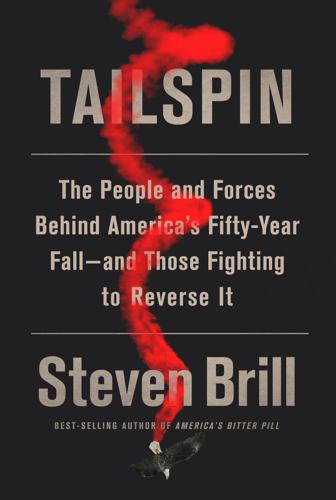
Tailspin: The People and Forces Behind America's Fifty-Year Fall--And Those Fighting to Reverse It
by
Steven Brill
Published 28 May 2018
News about takeover fights, mergers, and other machinations and the accompanying financial engineering may have been mostly confined to the financial pages, but in offices, factories, and households across the country there were broad, unsettling ramifications behind all the jargon and the stories adorned with photos of beaming men in suits celebrating their latest deal. JUNK The takeover boom and merger deals generally were fueled by another mid-1970s innovation in financial and legal engineering: the debt-financed takeover, or leveraged buyout. The prime innovator was Michael Milken. Working at Drexel Burnham Lambert, a second-tier brokerage and investment bank, Milken—who would go to prison in 1991 for securities law violations—figured out that if companies had sufficient earnings or potential earnings, he could help what would become a group of buccaneer raiders, including Carl Icahn, Victor Posner, and Boone Pickens, borrow the money to buy them.
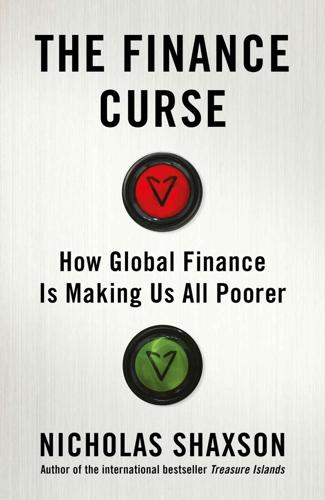
The Finance Curse: How Global Finance Is Making Us All Poorer
by
Nicholas Shaxson
Published 10 Oct 2018
This was the first proper private equity firm, though in those days they and the others that soon emerged were known as LBO firms. Yet these corporate raiders faced a problem: persuading bankers to lend them the funds they needed to make the game work. Fortunately for them, a new player had entered the scene, the investment bank Drexel Burnham Lambert, under the buccaneering junk bond king, Michael Milken. Drexel played a different OPM game: lending the money for LBO deals, it then sold the loans (which became known as junk bonds because of their riskiness) to other less clued-up players like insurance companies or dowdy savings and loan organisations, tempting them with high interest rates and persuading them that the reward was worth the risk.
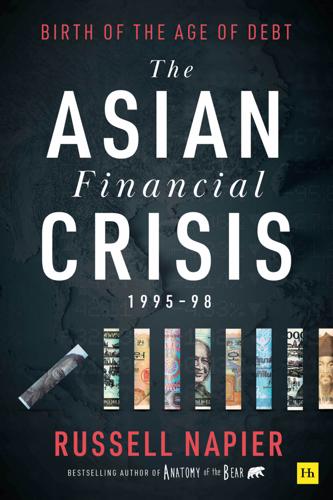
The Asian Financial Crisis 1995–98: Birth of the Age of Debt
by
Russell Napier
Published 19 Jul 2021
While initially it looked like an old form of what might be called laissez-faire capitalism, it very quickly became a new form of capitalism probably best labelled financial capitalism. It was a form of capitalism that combined individualism with the aggressive use of balance sheet management for primarily personal profit. As early as 1983, Michael Milken was helping corporate America supercharge returns through the issuance of a record amount of speculative credit instruments known as junk bonds. The particular beneficiaries of this form of financial engineering were corporate management and incentives were soon put in place, primarily in the form of stock options, to incentivise such behaviour.
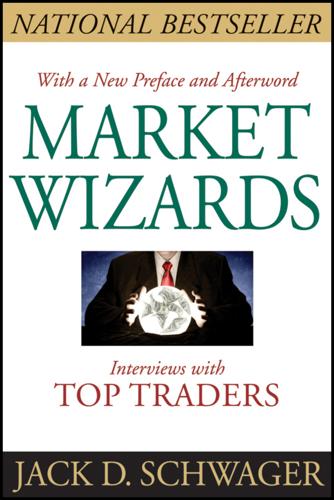
Market Wizards: Interviews With Top Traders
by
Jack D. Schwager
Published 7 Feb 2012
Although the PNP employees were originally convicted, their convictions were subsequently overturned, and none served any time in jail. Journalists covering the case almost universally assumed that Giuliani’s draconian prosecution (e.g., invoking the RICO statute), which was widely seen as out of proportion to the charges, was really intended to compel Regan and the other PNP employees to provide testimony against Michael Milken and Drexel. Thorp was completely unaware of the transgressions of the Princeton office and only found out that there was a problem at the time of the raid itself. The Princeton office defendants were not forthcoming with information, and Thorp learned more about the case from the press than from his partner.
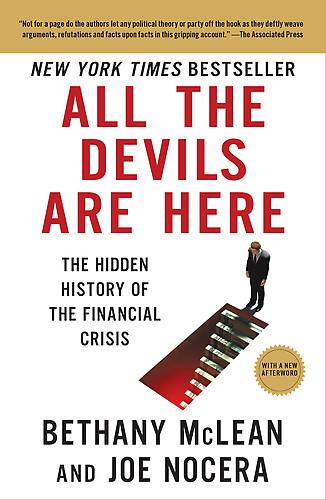
All the Devils Are Here
by
Bethany McLean
Published 19 Oct 2010
A native of Salt Lake City, he had gotten a PhD from Stanford, taught finance at Columbia Business School, and put in a stint at Bell Laboratories before joining Drexel Burnham Lambert in the early 1980s. He was, in other words, a quant. Drexel in those days was best known for its most infamous executive, Michael Milken, the man who popularized junk bonds and built a huge business around them. Sosin wasn’t interested in junk bonds; instead, like any good quant, he gravitated toward complex derivatives, becoming one of the pioneers in developing ever more complicated forms of swaps. The problem for Sosin was that, at Drexel, derivatives were never going to replace junk bonds as the firm’s bread and butter.
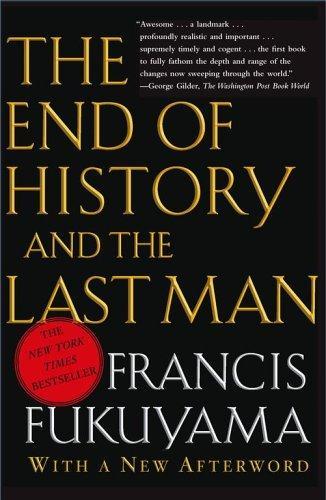
The end of history and the last man
by
Francis Fukuyama
Published 28 Feb 2006
Freedom could be had without democracy, but equality was the uniquely defining characteristic of democratic ages, and for that reason people clung to it more tenaciously. The excesses of freedom—the arrogant display of a Leona Helmsley or a Donald Trump, the crimes committed by an Ivan Boesky or Michael Milken, the damage done by the Exxon Valdez to Prudhoe Bay—are much more visible than the evils of extreme equality like creeping mediocrity or the tyranny of the majority. And while political freedom bestows exalted pleasures on a small number of citizens, equality provides the great mass of people with small enjoyments.9 Thus while the liberal project has been largely successful over the past four hundred years in excluding the more visible forms of megalothymia from political life, our society will continue to remain preoccupied with questions of equalizing dignity.
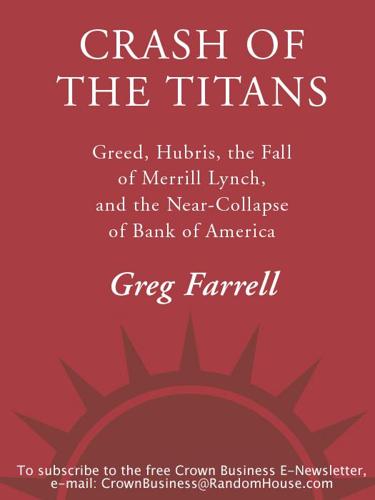
Crash of the Titans: Greed, Hubris, the Fall of Merrill Lynch, and the Near-Collapse of Bank of America
by
Greg Farrell
Published 2 Nov 2010
Every industry has its transformational moments, when innovation does more than improve performance at the margins, it fundamentally changes the nature of the business. The Wall Street that John Thain entered in 1979 was perched on the edge of one of those transformational moments. Financial innovators such as Michael Milken at Drexel Burnham Lambert were already creating a new market for high yield debt, more commonly known as “junk bonds.” Advances in computer technology allowed traders to accelerate and simplify the process of buying and selling stocks and bonds, especially when using the analytic tools that would soon be found on Bloomberg terminals, the boxlike machines that started popping up on trading floors across Wall Street in the 1980s.
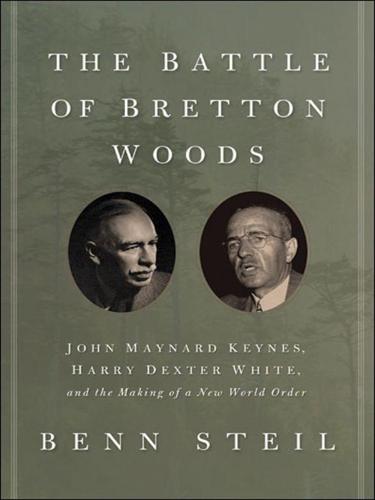
The Battle of Bretton Woods: John Maynard Keynes, Harry Dexter White, and the Making of a New World Order
by
Benn Steil
Published 14 May 2013
“Financial Crises: Plus ça Change, plus c’est la Même Chose.” International Finance 1 (2): 261–287. Grand Jury Testimony in the Alger Hiss Case. 1947–1949. Record Group 118. New York, National Archives. Grant, James. 1992. Money of the Mind: Borrowing and Lending in America from the Civil War to Michael Milken. New York: Noonday Press. Halifax, Edward Frederick Lindley Wood. Diary. Harriman, W. Averell, and Elie Abel. 1975. Special Envoy to Churchill and Stalin, 1941–1946. New York: Random House. Harrod, Roy. 1951. The Life of John Maynard Keynes. New York: W. W. Norton. Hastings, Max. 2009. Winston’s War: Churchill, 1940–1945.

A Generation of Sociopaths: How the Baby Boomers Betrayed America
by
Bruce Cannon Gibney
Published 7 Mar 2017
Even as the S&L disaster unfolded, Boomers began taking over Wall Street, and in financial engineering they found a vocation in which they could exceed their parents, however dismally. The Boomers pioneered new and riskier ways of doing business, whose consequences would make the S&L crisis seem positively demure. The previously modest market for junk bonds exploded, substantially the creation of Boomer Michael Milken of Drexel Burnham. Junk bonds are debt securities that are not “investment grade,” with greater risks of default than conventional debt. They are speculative instruments and have their place, but their use expanded well beyond those limits, and not surprisingly, many worked out poorly. Milken was subsequently convicted of securities violations and Drexel went under; repackaged with the more pleasing label of “high-yield debt,” junk bonds soldier on today and in mid-2016 were enjoying a bull run.
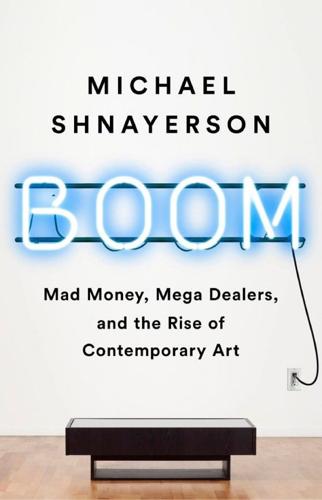
Boom: Mad Money, Mega Dealers, and the Rise of Contemporary Art
by
Michael Shnayerson
Published 20 May 2019
Another arrival that year was a young woman with a famous surname, Marianne Boesky. As she said years later, Boesky started with more against her than most dealers: a felon as a father. Ivan Boesky had been caught up in one of the decade’s biggest insider-trading scandals, which also netted junk-bond financier Michael Milken and sent both men to jail. “Everyone presumed I was coming with my pockets filled with money, and that I would soon be out of business,” said Marianne Boesky. “In my case there was nothing—no support.” Initially, before moving to Chelsea, she borrowed $55,000 to rent a small space on Greene Street for $8,000 a month, two doors from David Zwirner’s first gallery.
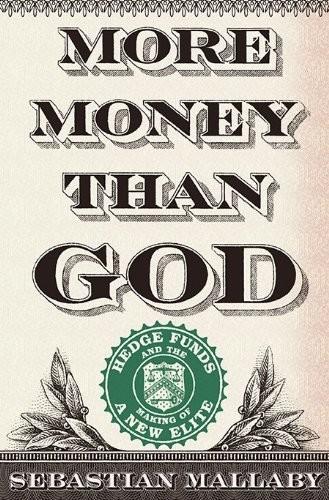
More Money Than God: Hedge Funds and the Making of a New Elite
by
Sebastian Mallaby
Published 9 Jun 2010
Soros was said to have enlarged his personal fortune by $650 million in 1992, and one magazine observed that it took Soros five minutes to earn what the median American family could expect for a full year of labor.50 A few years earlier, people had reacted with horrified fascination to the $550 million earned by Michael Milken, the champion of junk bonds; but now Milken had been surpassed. Soros became known as the man who broke the Bank of England, and hedge funds began to displace the 1980s buyout kings as the objects of popular envy. The full profits of the Soros funds were considerably larger than outsiders imagined.
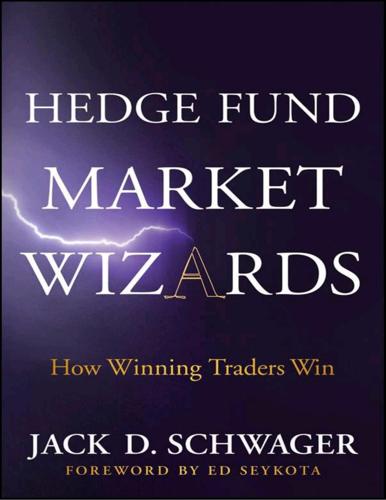
Hedge Fund Market Wizards
by
Jack D. Schwager
Published 24 Apr 2012
The charges essentially boiled down to two items: stock parking (leaving shares with another party to conceal true ownership) and stock manipulation related to a Drexel securities offering.5 Although the PNP employees were originally convicted, their convictions were subsequently overturned, and none served any time in jail. Journalists covering the case almost universally assumed that Giuliani’s Draconian prosecution (e.g., invoking the RICO statute), which was widely seen as out of proportion relative to the charges, was really intended to compel Regan and the other PNP employees to provide testimony against Michael Milken and Drexel. Thorp was completely unaware of the transgressions of the Princeton office and only found out that there was a problem at the time of the raid itself. The Princeton office defendants were not forthcoming with information, and Thorp learned more about the case from the press than from his partner.
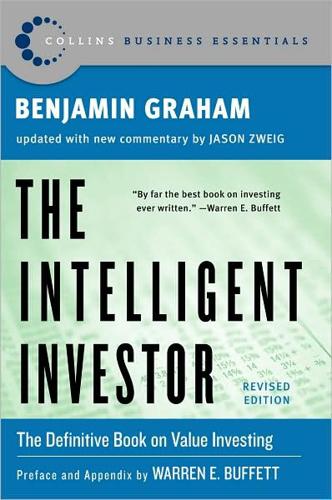
The Intelligent Investor (Collins Business Essentials)
by
Benjamin Graham
and
Jason Zweig
Published 1 Jan 1949
An elaborate statistical study carried on under the direction of the National Bureau of Economic Research indicates that such has actually been the case. Graham is referring to W. Braddock Hickman, Corporate Bond Quality and Investor Experience (Princeton University Press, 1958). Hickman’s book later inspired Michael Milken of Drexel Burnham Lambert to offer massive high-yield financing to companies with less than sterling credit ratings, helping to ignite the leveragedbuyout and hostile takeover craze of the late 1980s. 4. A representative sample of 41 such issues taken from Standard & Poor’s shows that five lost 90% or more of their high price, 30 lost more than half, and the entire group about two-thirds.
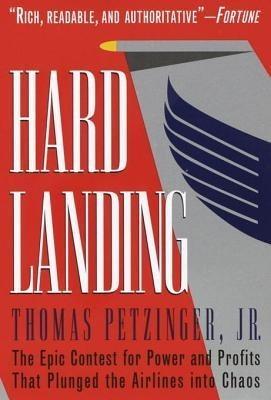
Hard Landing
by
Thomas Petzinger
and
Thomas Petzinger Jr.
Published 1 Jan 1995
Rothmeier was no more famous for personal warmth than Wolf; running a couple of the largest airlines in America from the same city, the two men had never met. One evening they agreed to talk over dinner at a family steak house in St. Paul. Wolf was so intent on selling Republic that he met with junk-bond impresario Michael Milken to plan a hostile takeover of Northwest, should it prove necessary to provoke Northwest into making a defensive acquisition. But Rothmeier, it turned out, was actively searching for a way to secure more passenger feed within the United States for Northwest’s vital routes over the Pacific, where United had lately become a powerful new competitor.
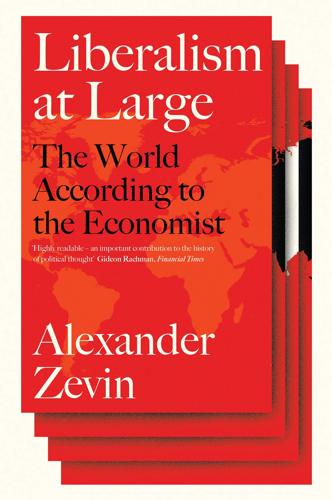
Liberalism at Large: The World According to the Economist
by
Alex Zevin
Published 12 Nov 2019
At the same time, he dismissed the Economist’s own Wall Street correspondent Christopher Wood, who predicted that soaring asset prices in New York, London and Tokyo were driven by unsustainable levels of private debt, and would soon lead to a major depression. Emmott called him ‘emotional’, a ‘doomster’ and argued that the ‘industrialized countries are chugging merrily along, apparently oblivious to the crash’ that had briefly spooked them in October 1987.22 In 1989 Michael Milken, the ‘king of junk bonds’ at Drexel Burnham Lambert, bankrupted the fifth largest US investment bank and went to jail. ‘There is nothing wrong, in principle, with junk bonds’, Emmott wrote. He bridled at caricatures of Wall Street as a ‘den of greed and chance’, which was a ‘harsh judgment to make of the freest-flowing and most sophisticated financial markets the world has ever known’.23 Made business affairs editor in 1989, Emmott surveyed the landscape from atop St James with optimism.
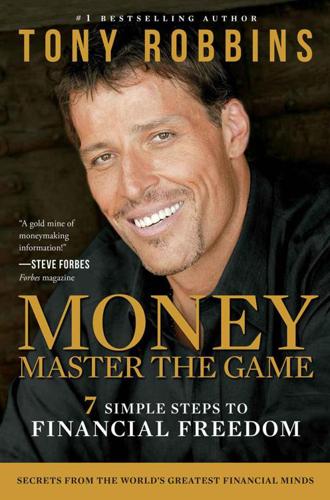
MONEY Master the Game: 7 Simple Steps to Financial Freedom
by
Tony Robbins
Published 18 Nov 2014
Thanks and gratitude to my dear friend John Paul DeJoria (who once lived out of his car, too!). Thanks to the maverick Marc Cuban, to Charles Schwab, Sara Blakely, Reid Hoffman, Sir Richard Branson, Chuck Feeney, Evan Williams, Peter Lynch, Ray Chambers, David Walker, Eddie Lampert, Tony Hsieh, Tony Tan, Michael Milken, Mark Hart, Mitch Kaplan, Luca Padulli, Harry Dent, Robert Prechter, Michael O’Higgins, Jim Rodgers, James Grant, Eric Sprout, Mike Novogratz, Stanley Druckenmiller, George Soros, Sir Roger Douglass, Domingo Cavallo, Daniel Cloud, Geoffrey Batt, Joshua Copper Ramo, Russel Napier, Emad Mostaque, Dr.
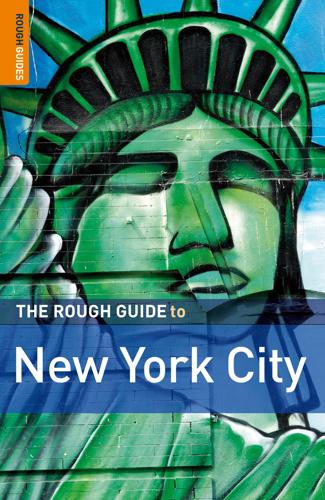
The Rough Guide to New York City
by
Martin Dunford
Published 2 Jan 2009
The impossible-toget-into Studio 54 was an internationally known hotspot, where drugs and illicit sex were the main events off the dance floor. The real-estate and stock markets boomed during the 1980s, ushering in another era of Big Money; fortunes were made and lost overnight and big Wall Street names, like Michael Milken, were thrown in jail for insider trading. A spate of construction gave the city more eye-catching, though not necessarily well-loved, architecture, notably Battery Park City, and master builder Donald Trump provided glitzy housing for the super-wealthy. The stock market dip in 1987 started yet another downturn, and Koch’s popularity waned.
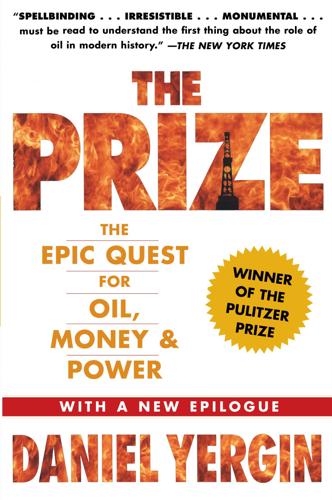
The Prize: The Epic Quest for Oil, Money & Power
by
Daniel Yergin
Published 23 Dec 2008
Lee and his colleagues wooed the institutional investors, and Gulf managed to squeak to victory in the proxy vote in December 1983, by a bare 52 percent to 48 percent. It was only a reprieve. Pickens continued to move up and down the court. He submitted a written proposal to the Gulf board to spin off oil and gas reserves directly to shareholders. The board turned him down flat. Pickens then went to see the junk bond king, Michael Milken, at Drexel Burnham in Beverly Hills to explore raising the additional money through such bonds to make an outright takeover bid. Jimmy Lee knew that time was short. He had to get the stock price up. He looked at spinning off refining and marketing and the chemical operations into separate companies.